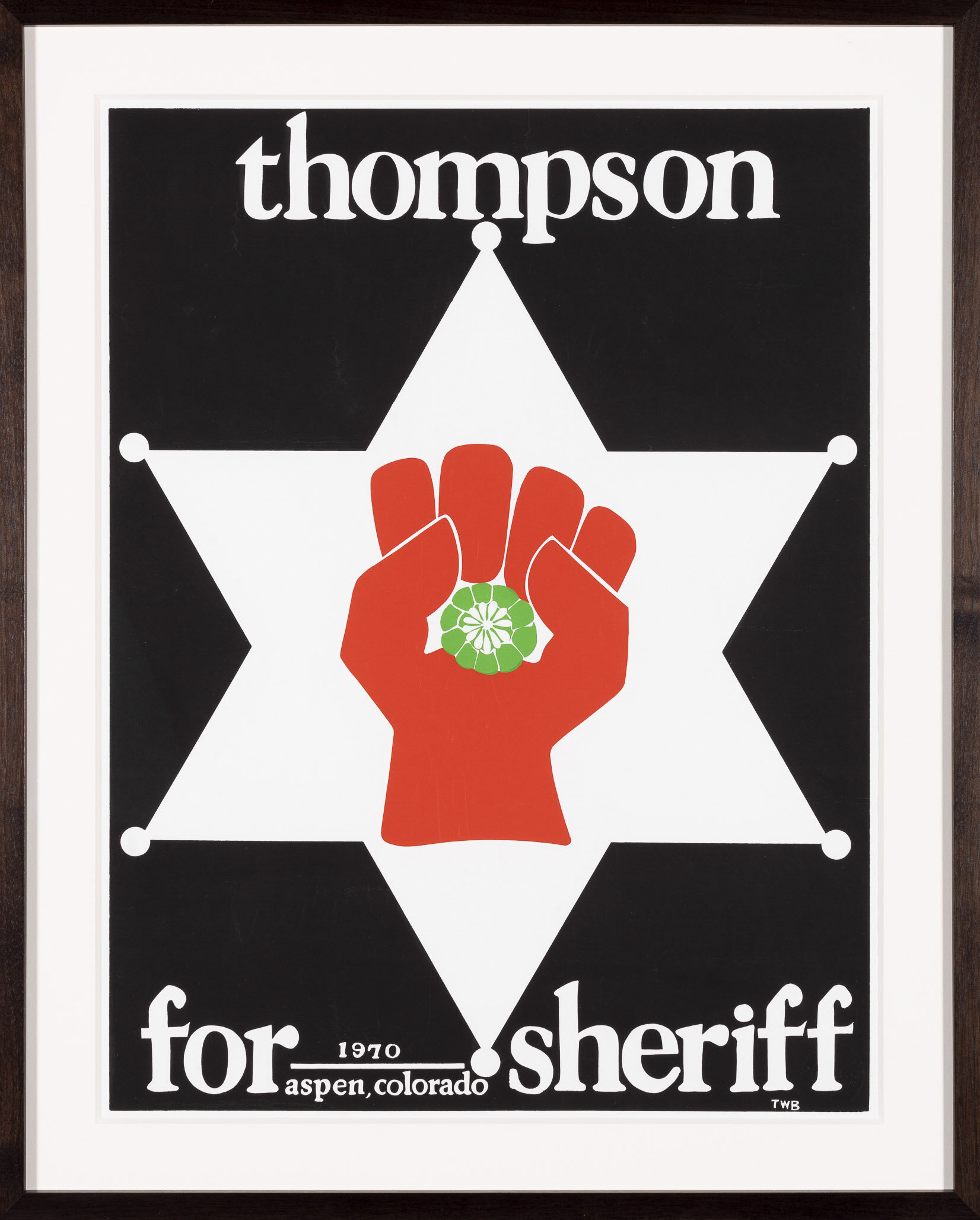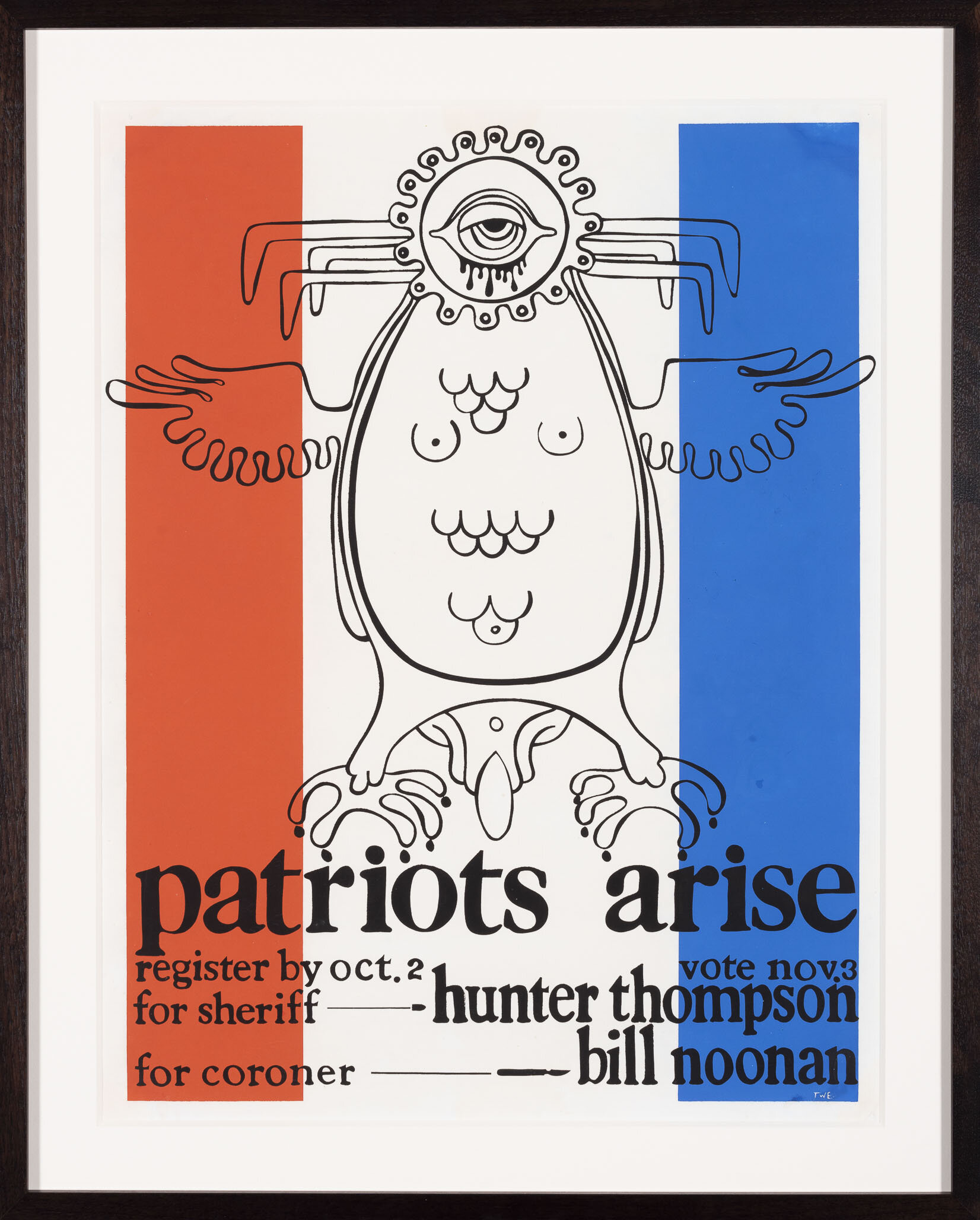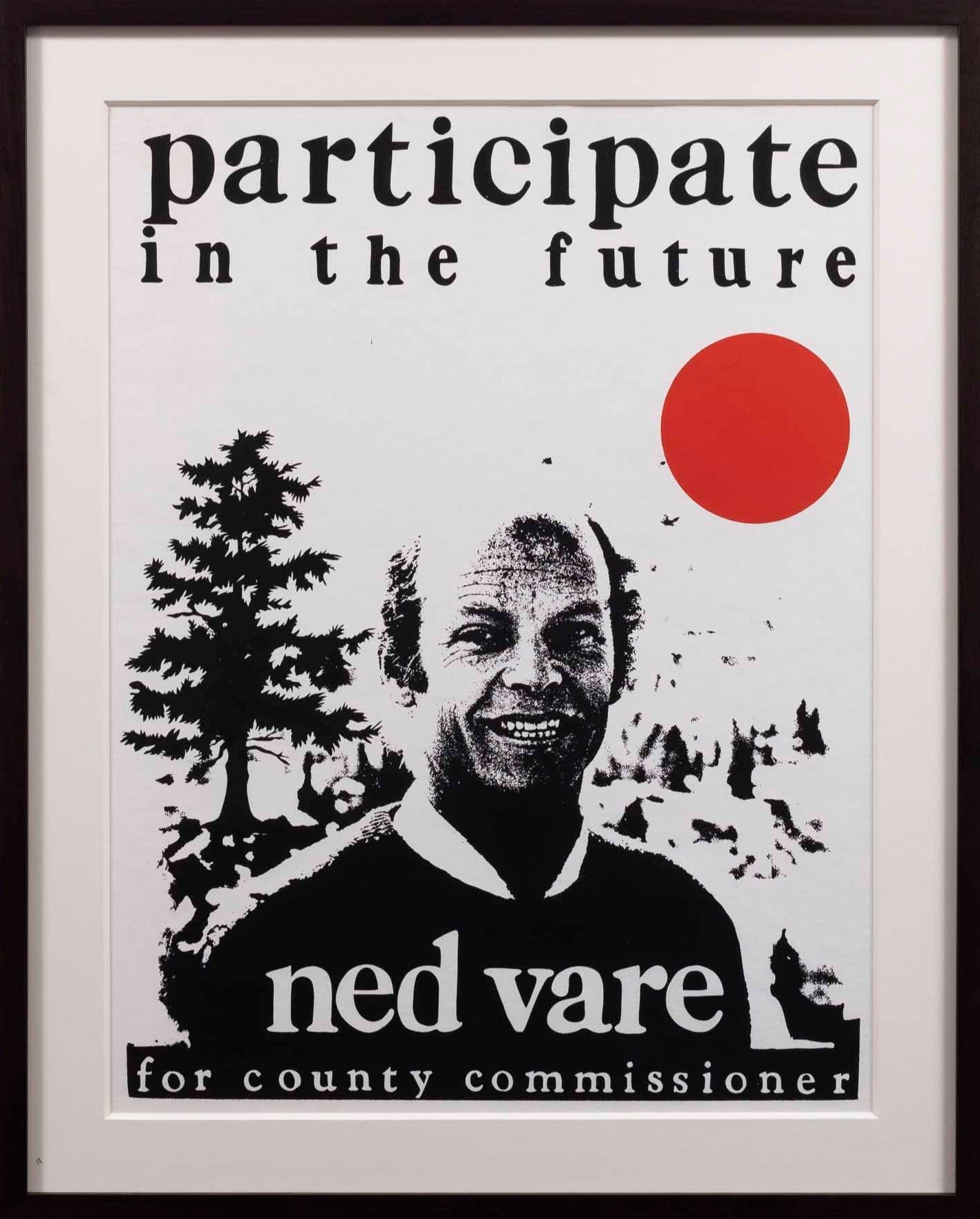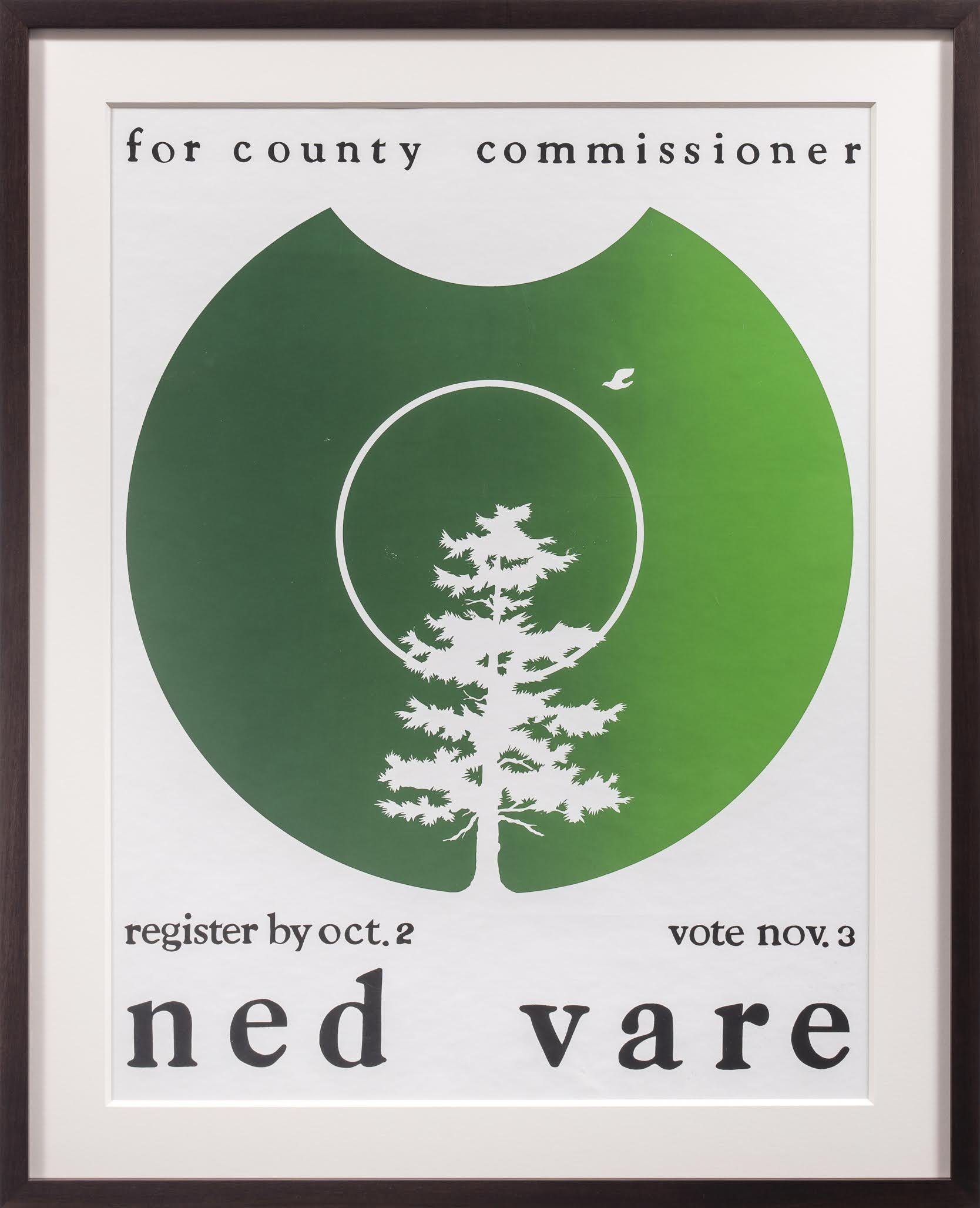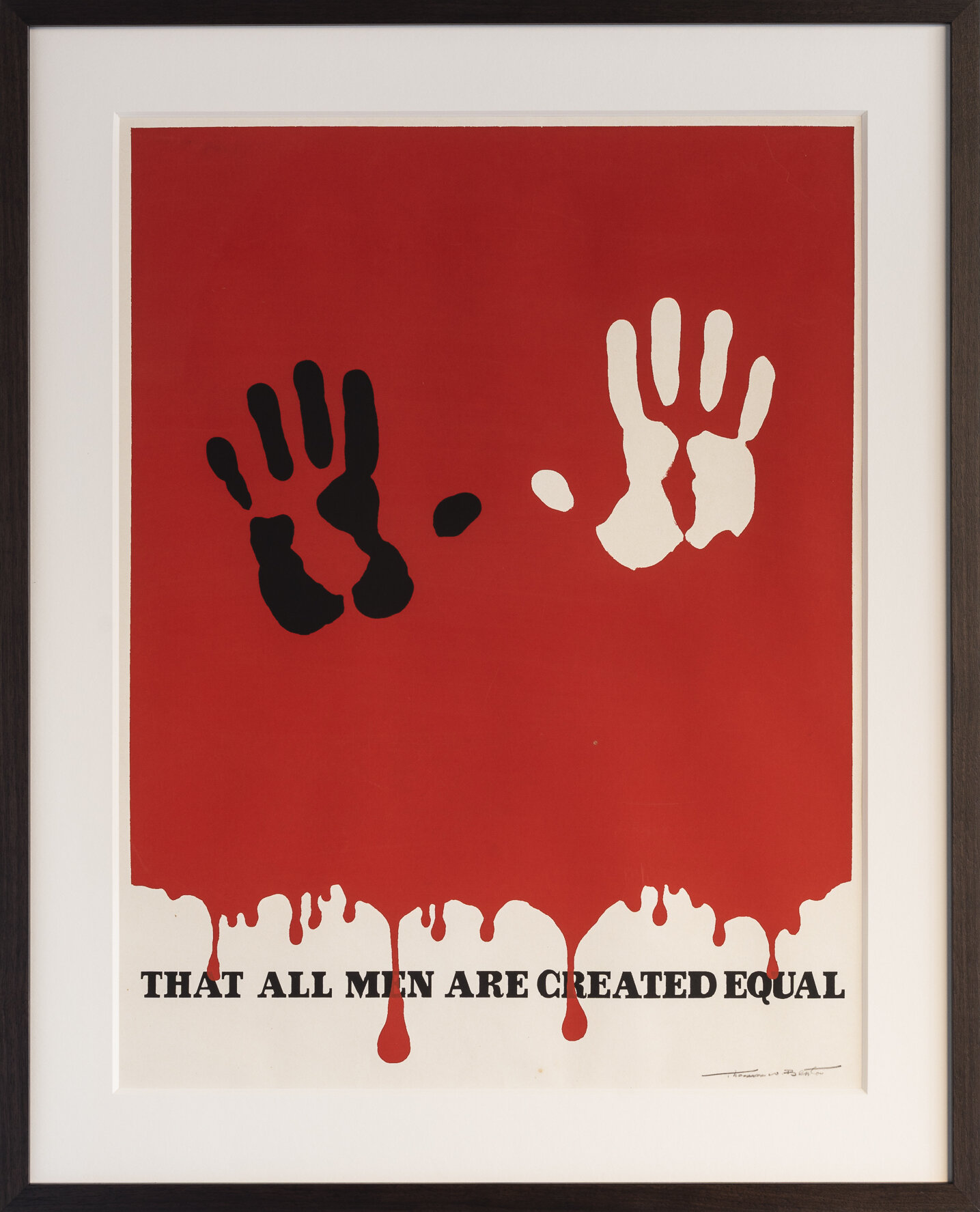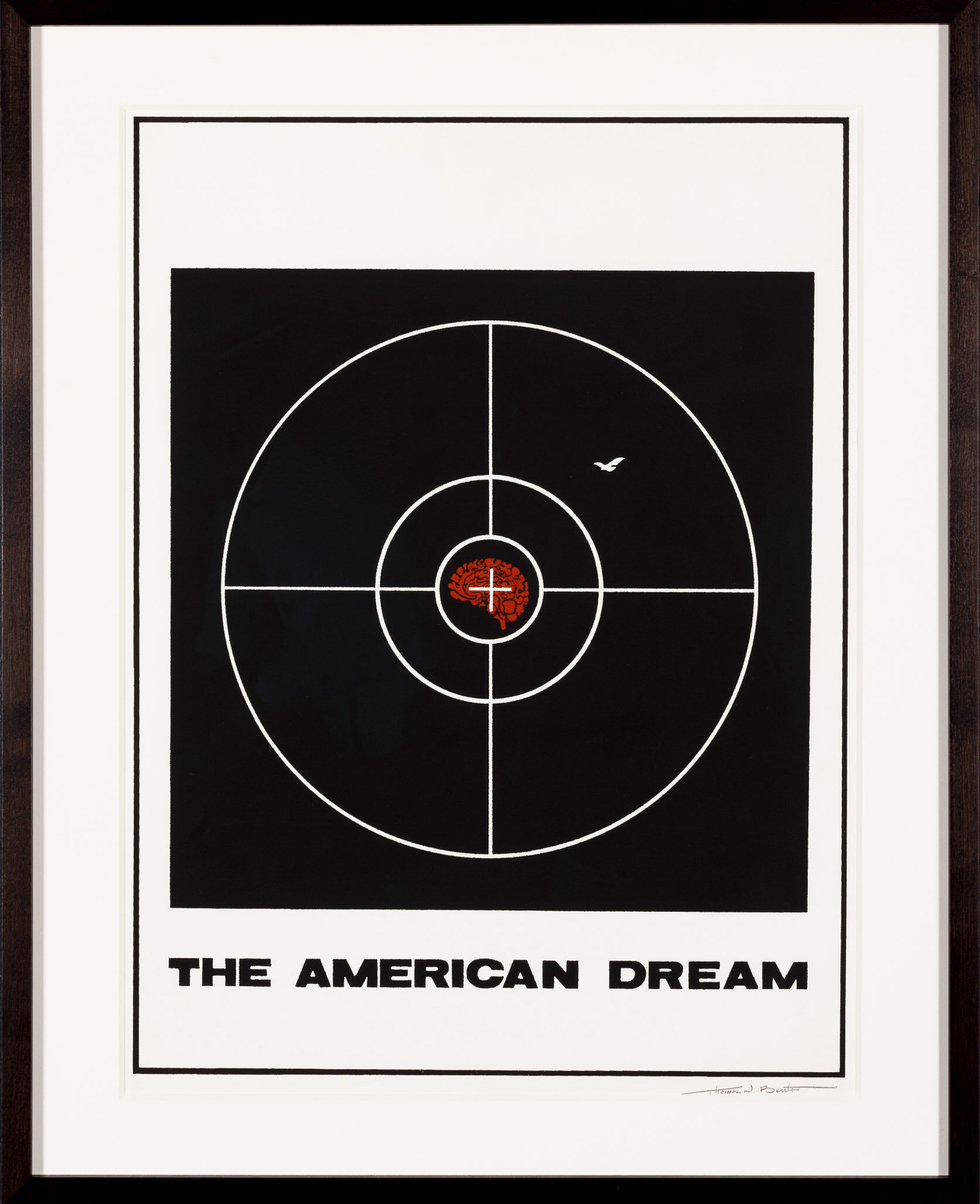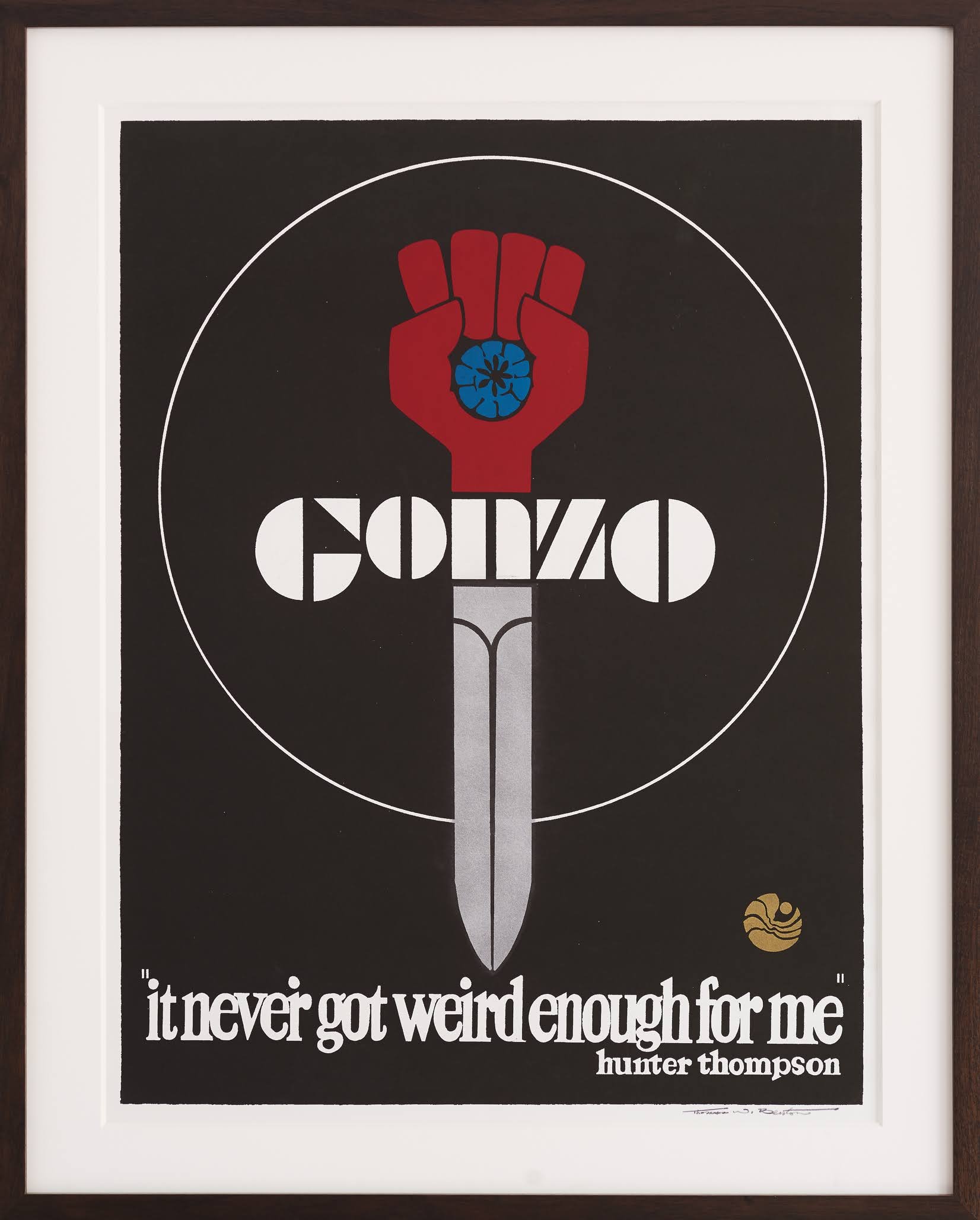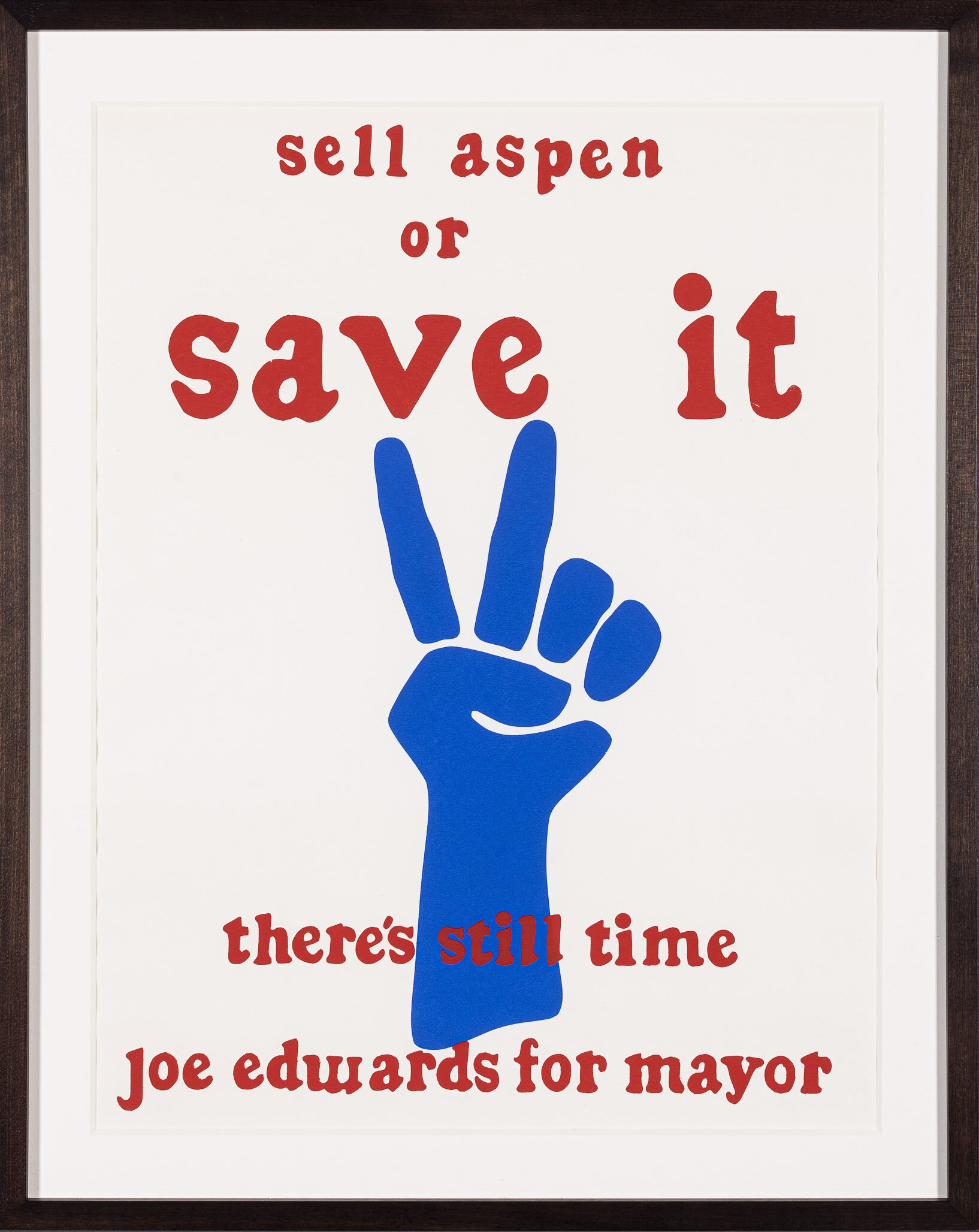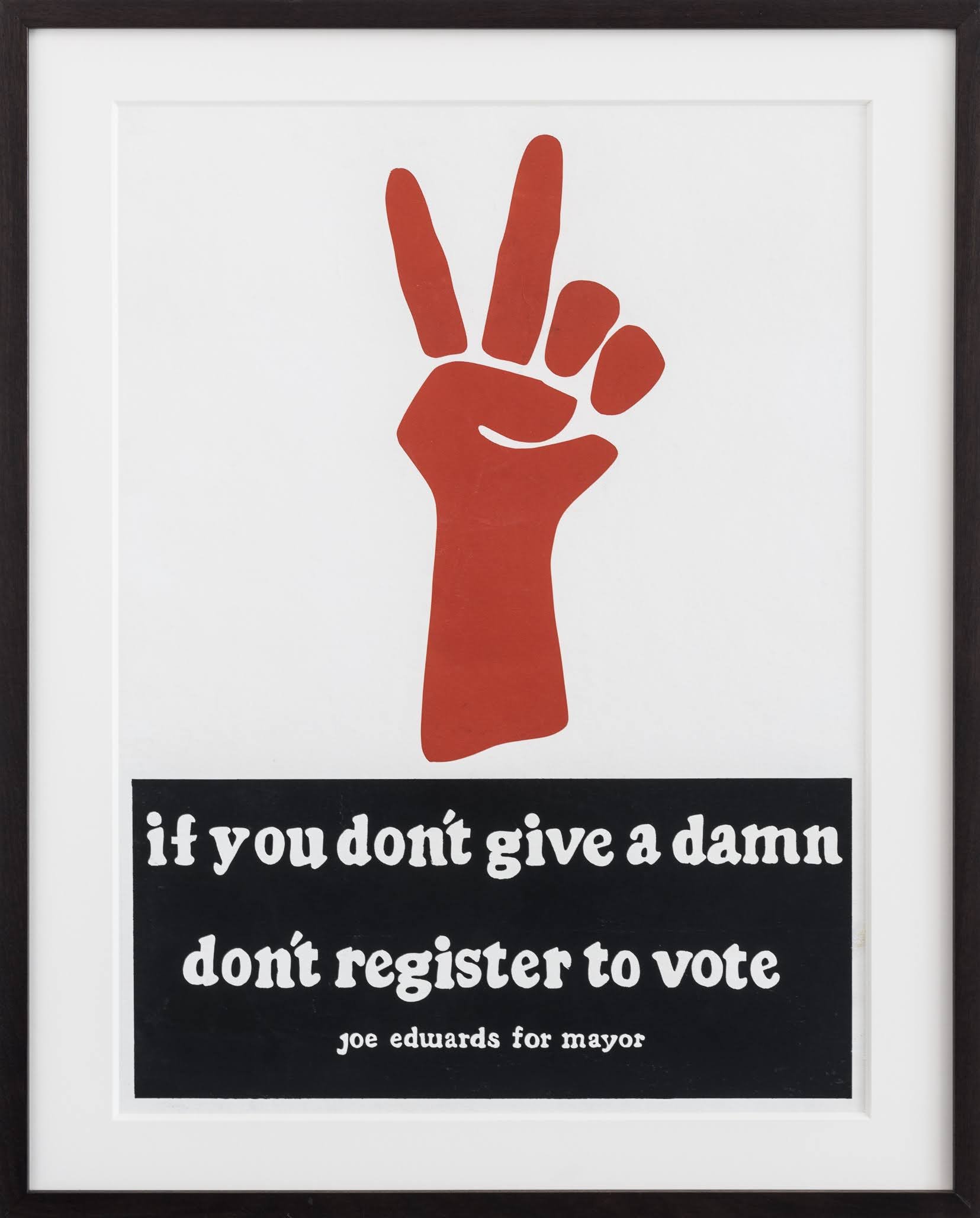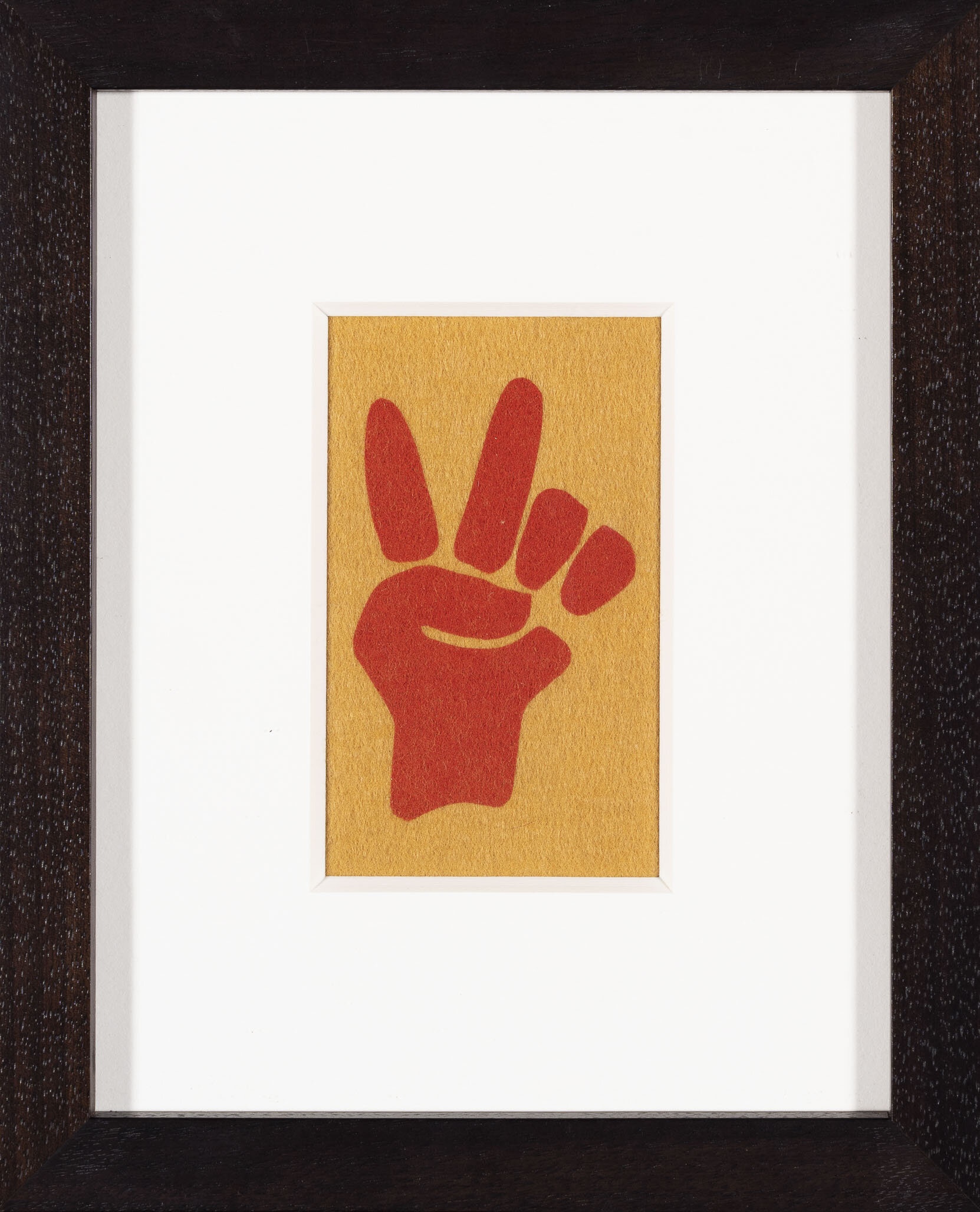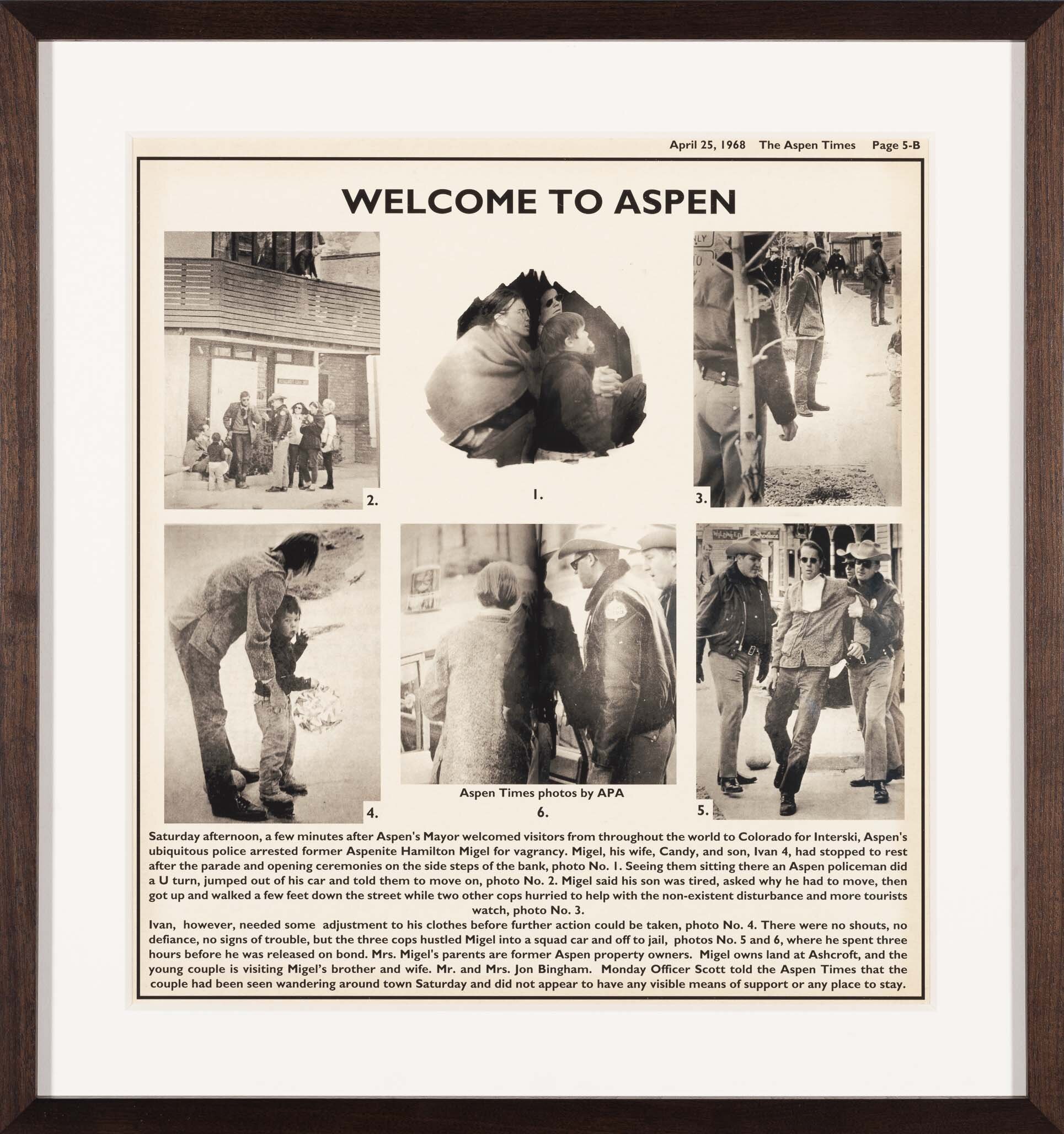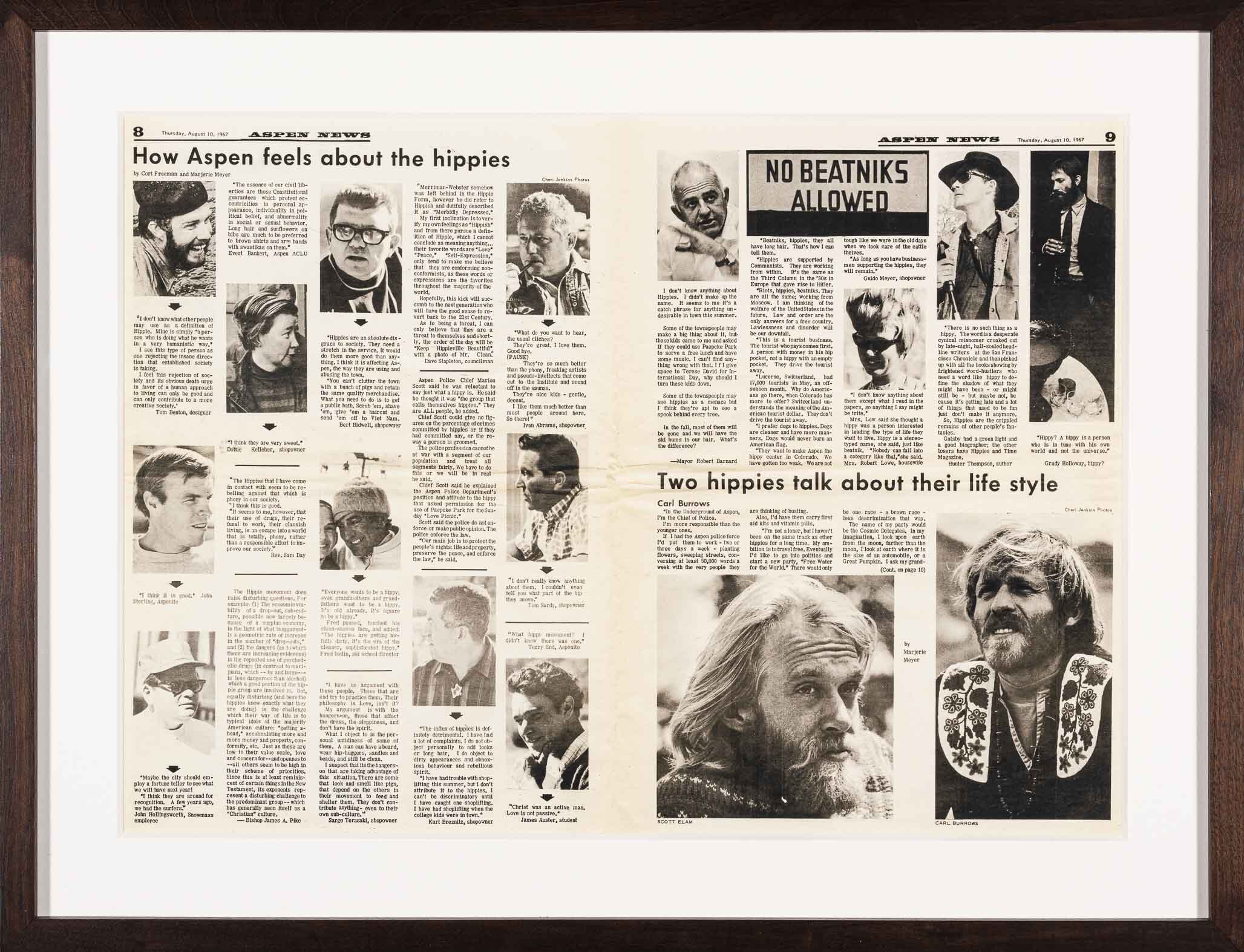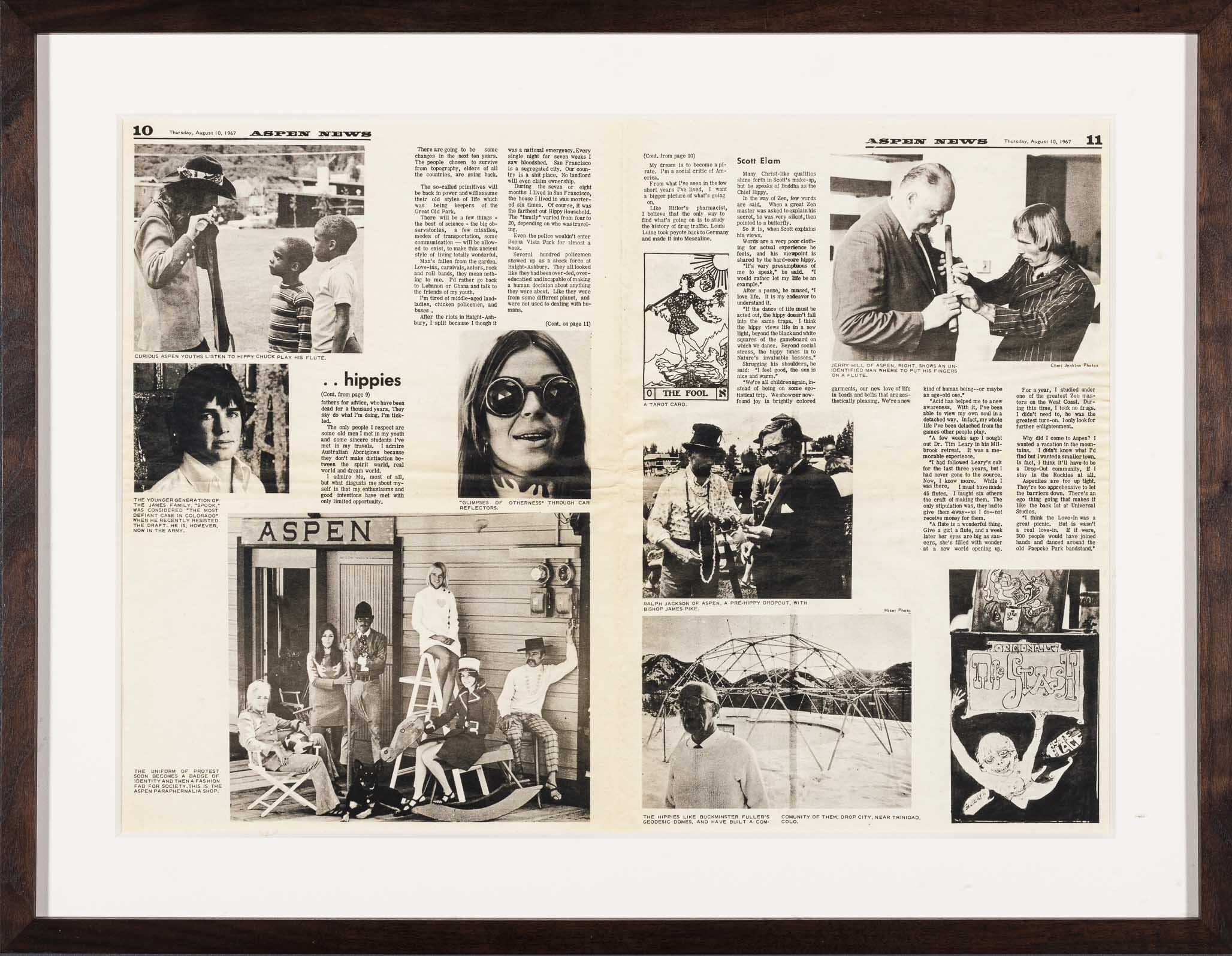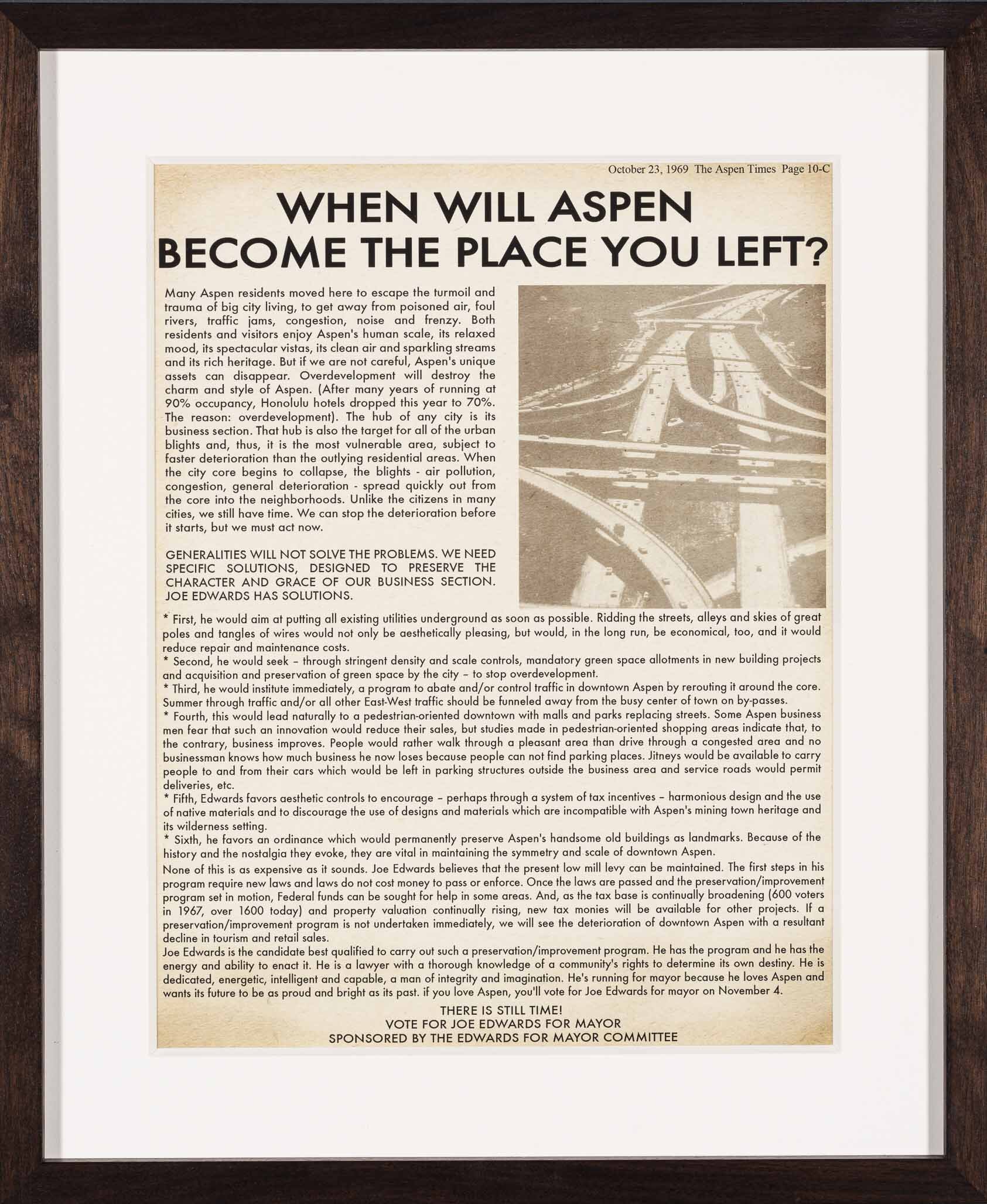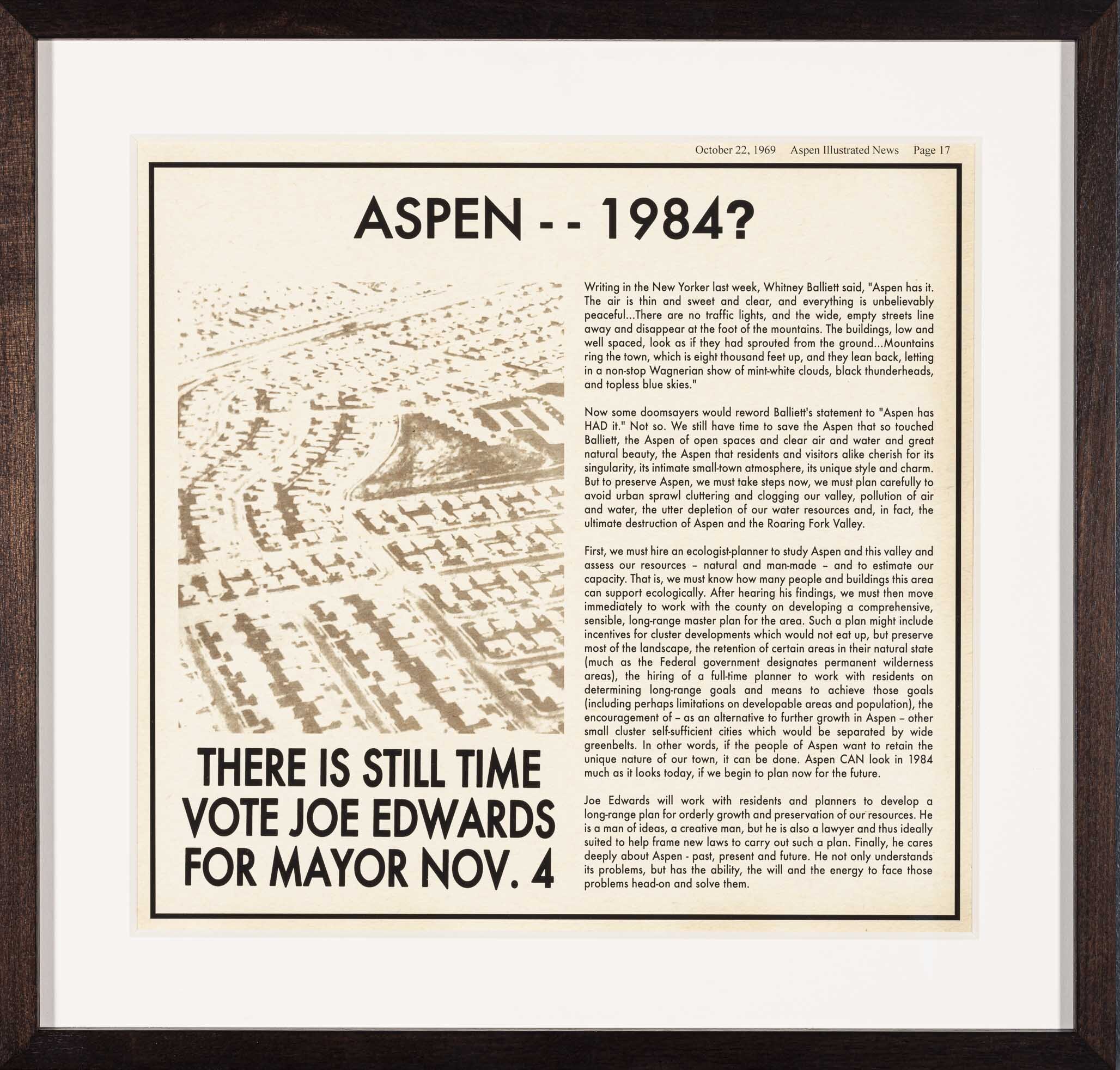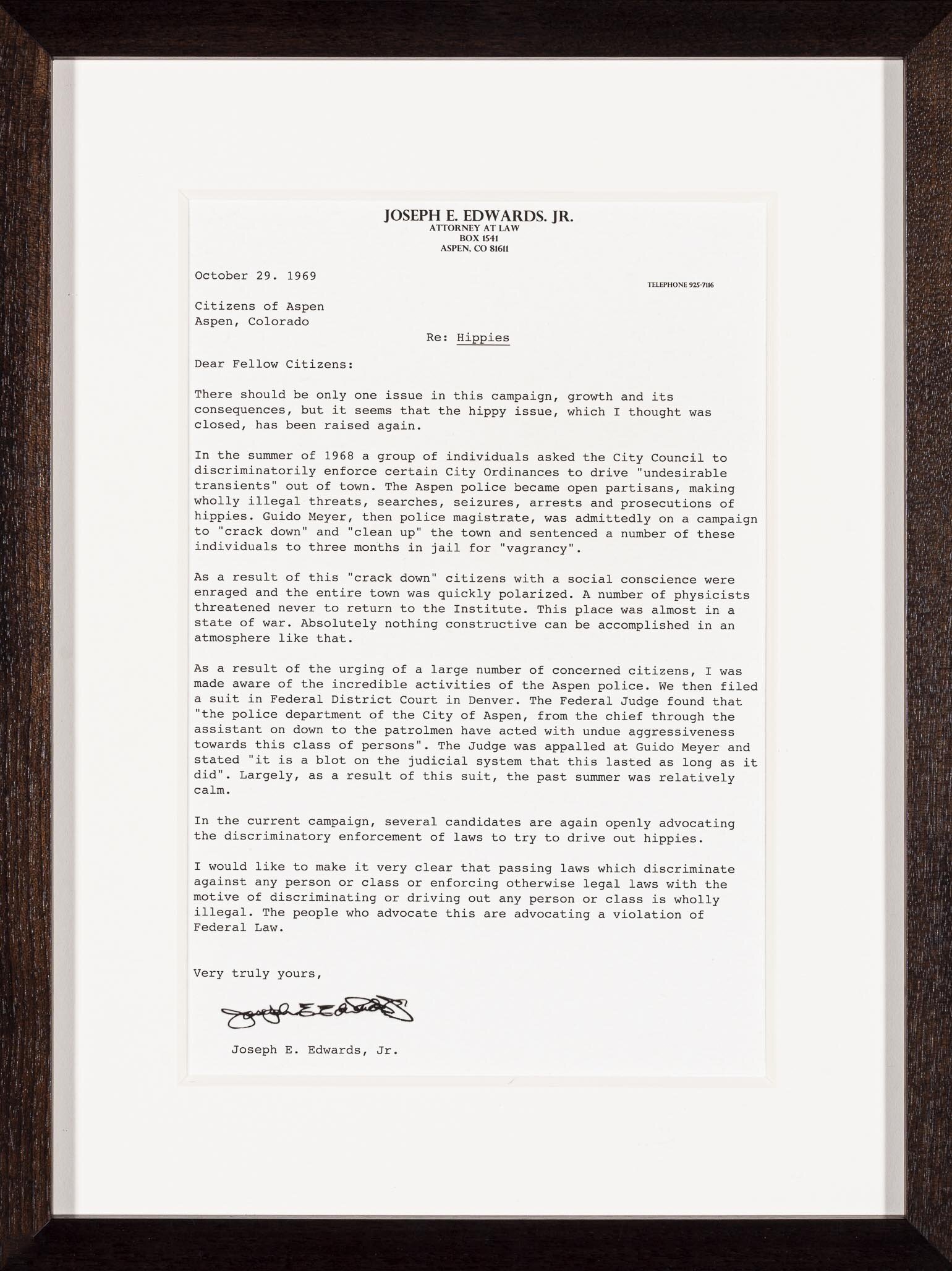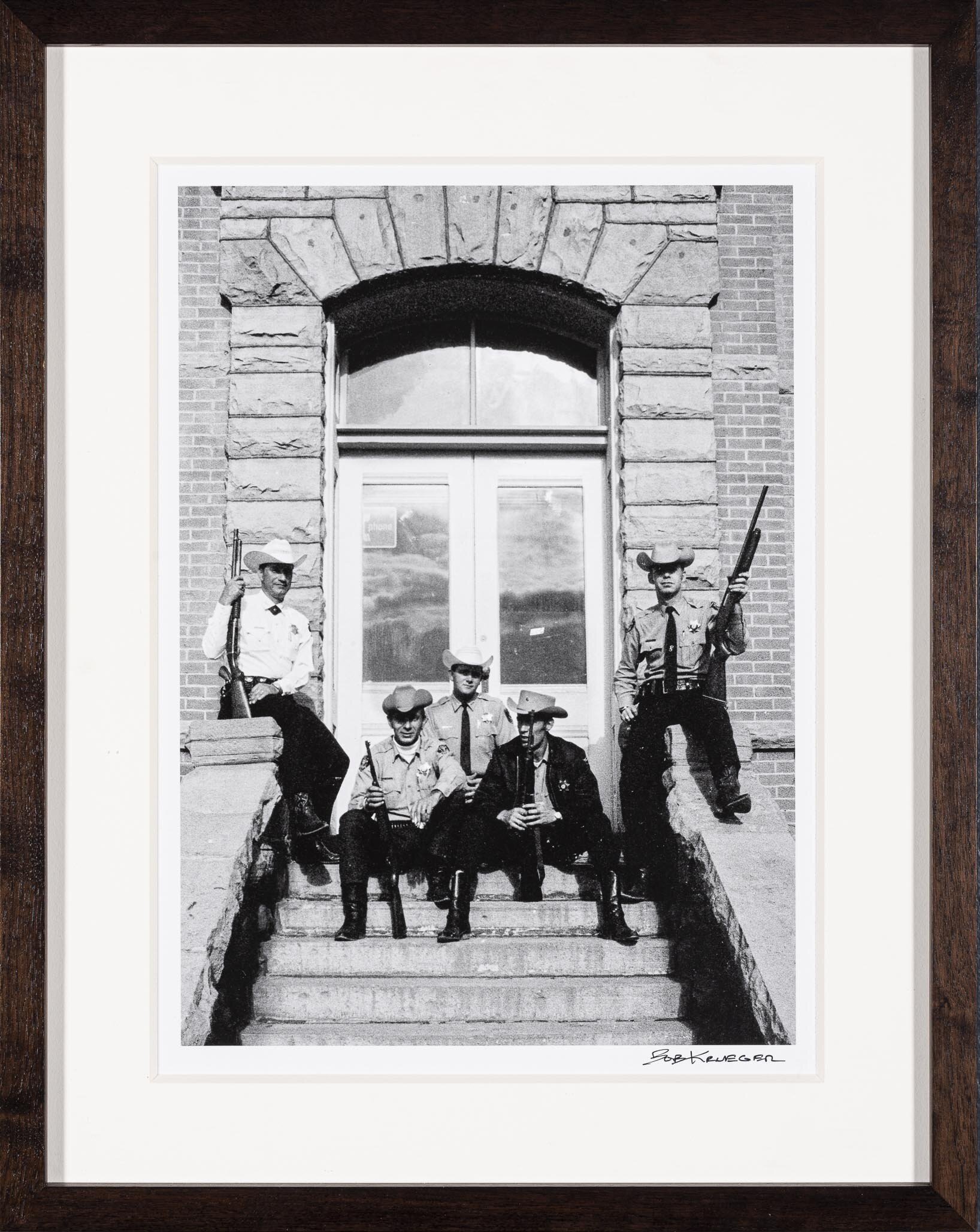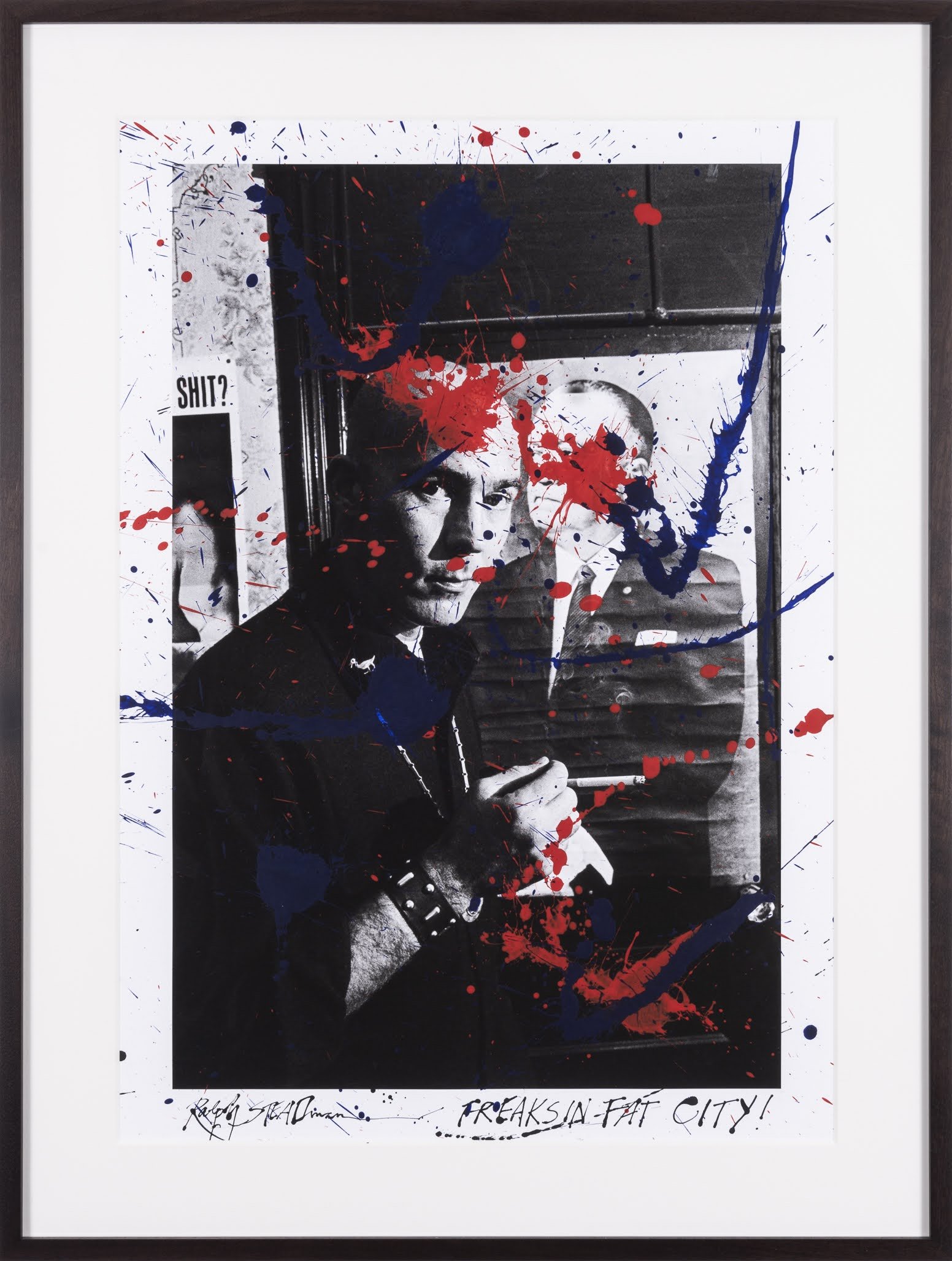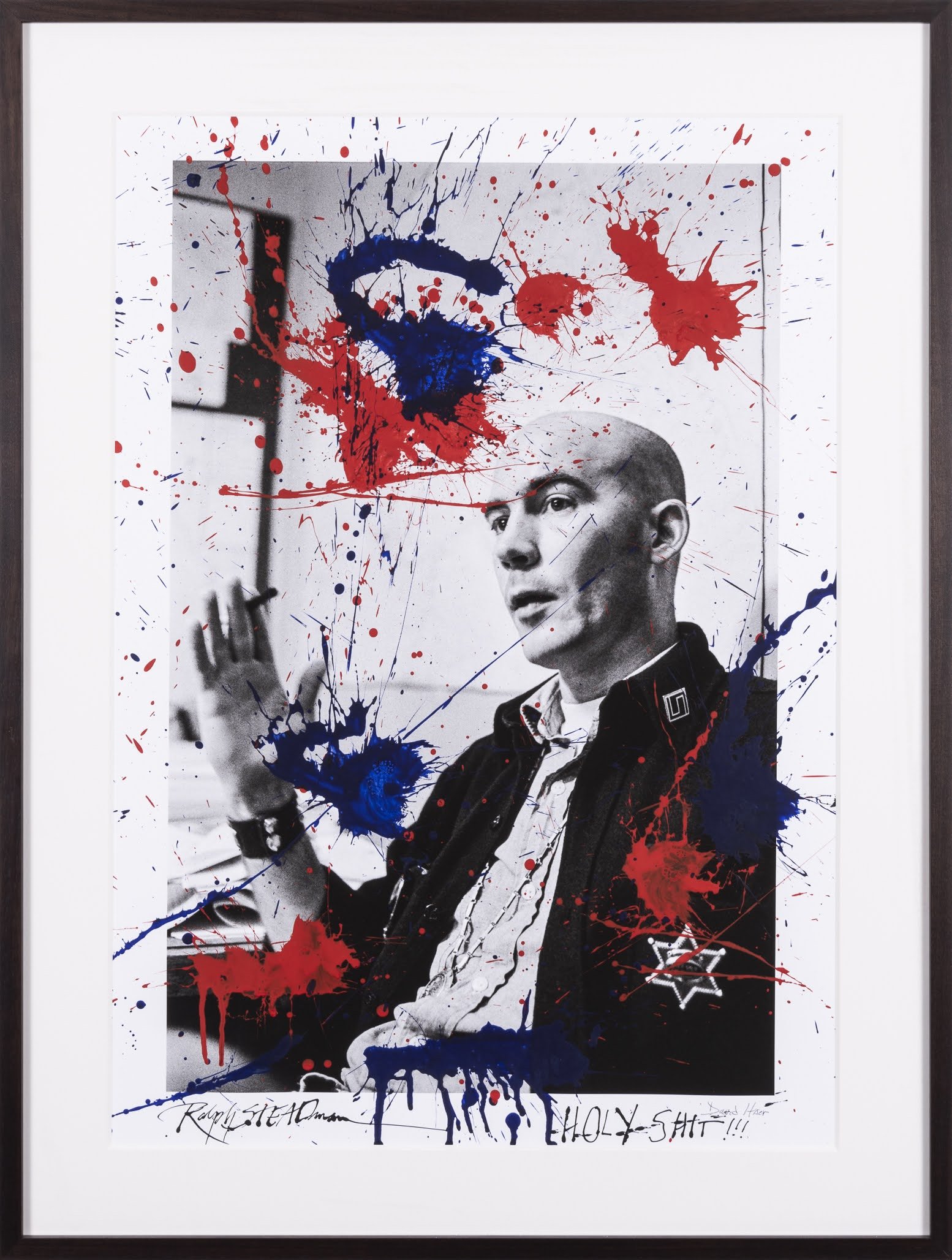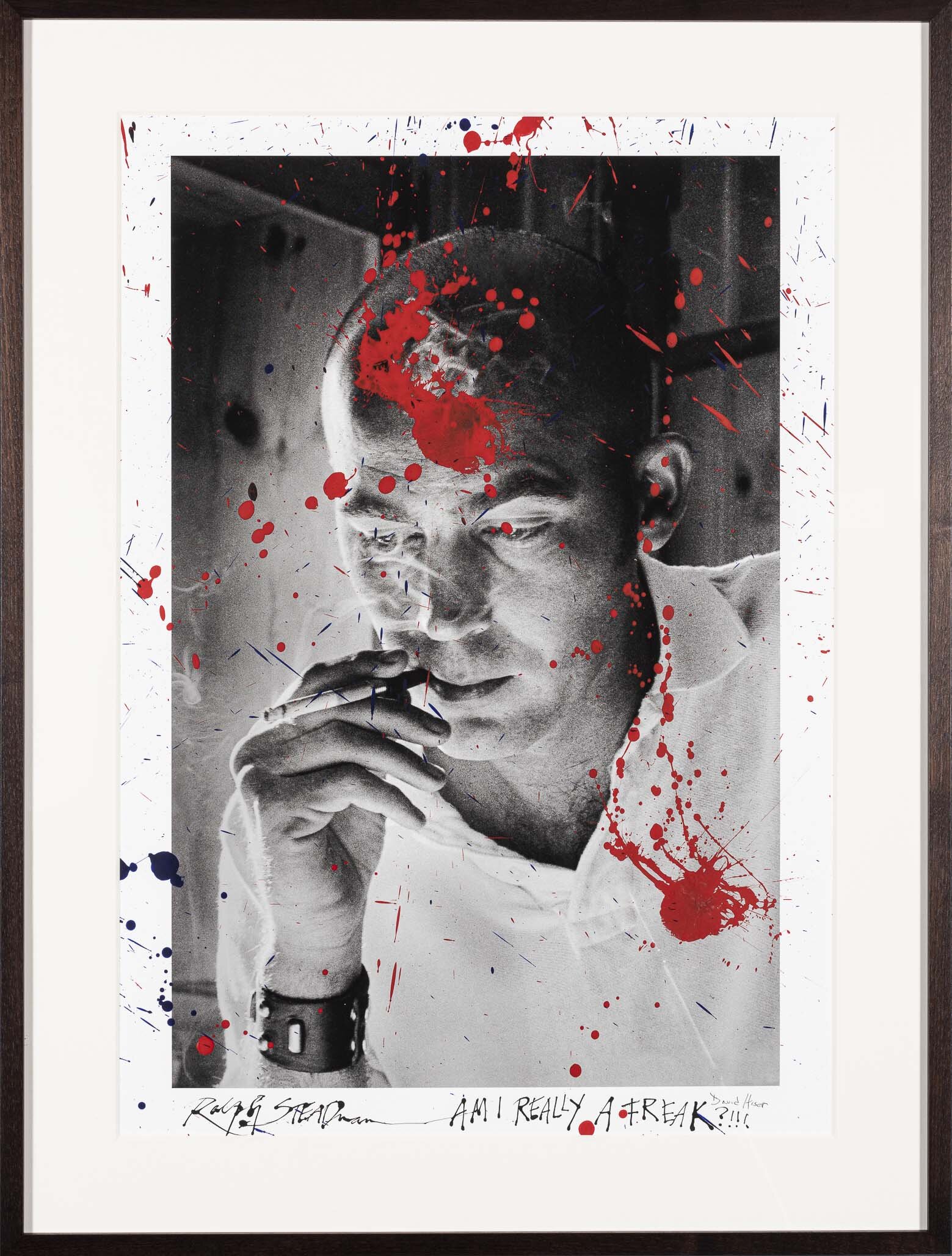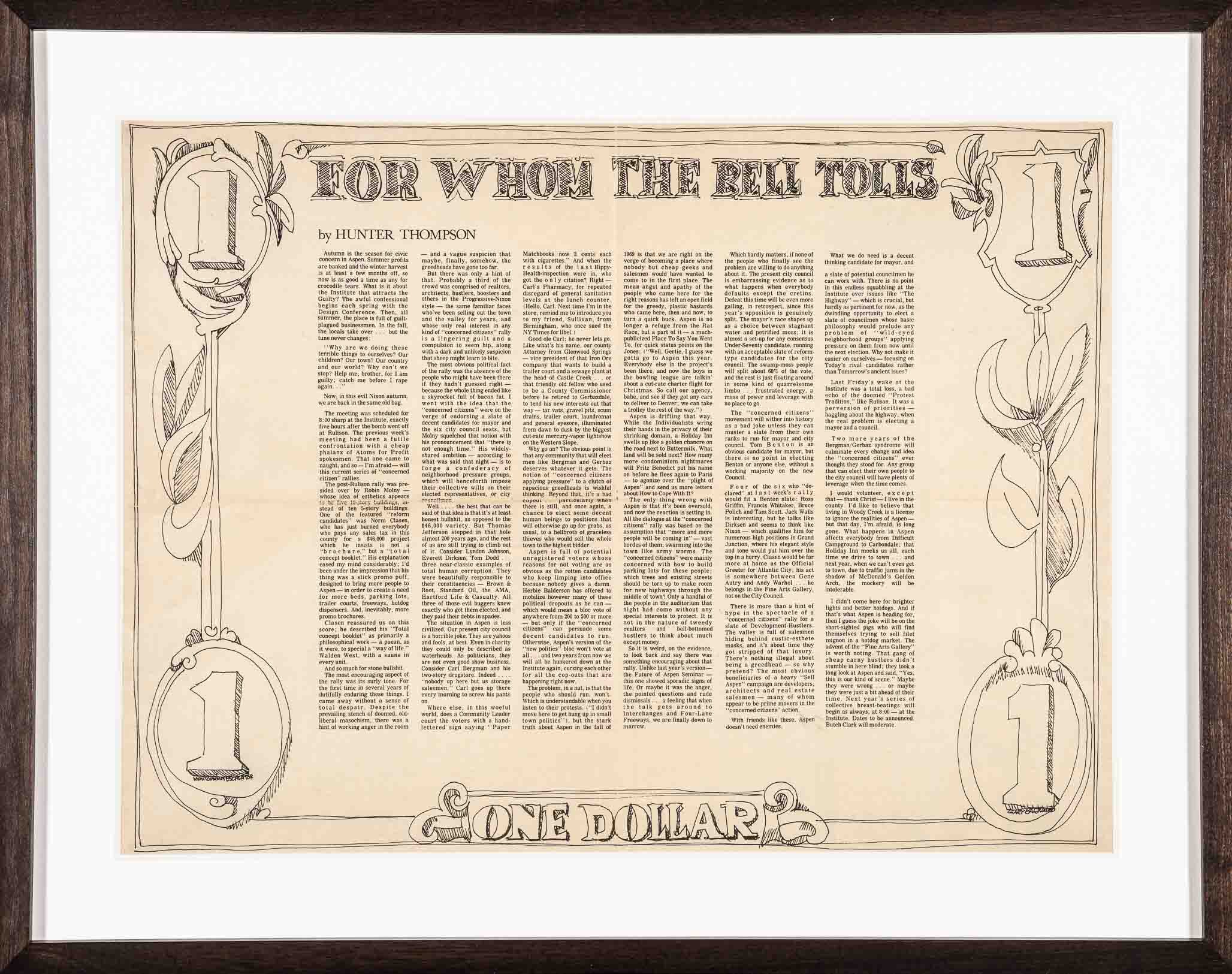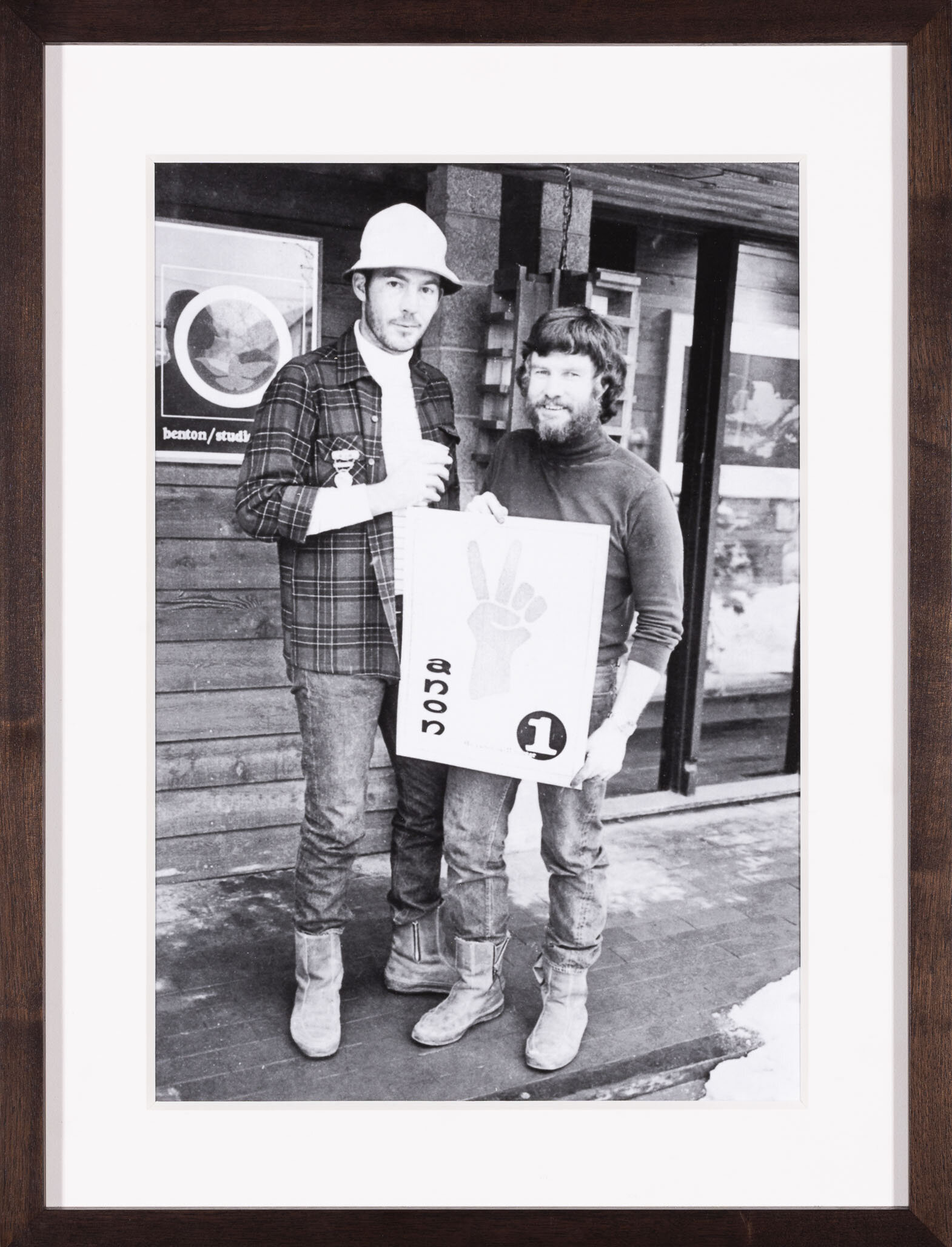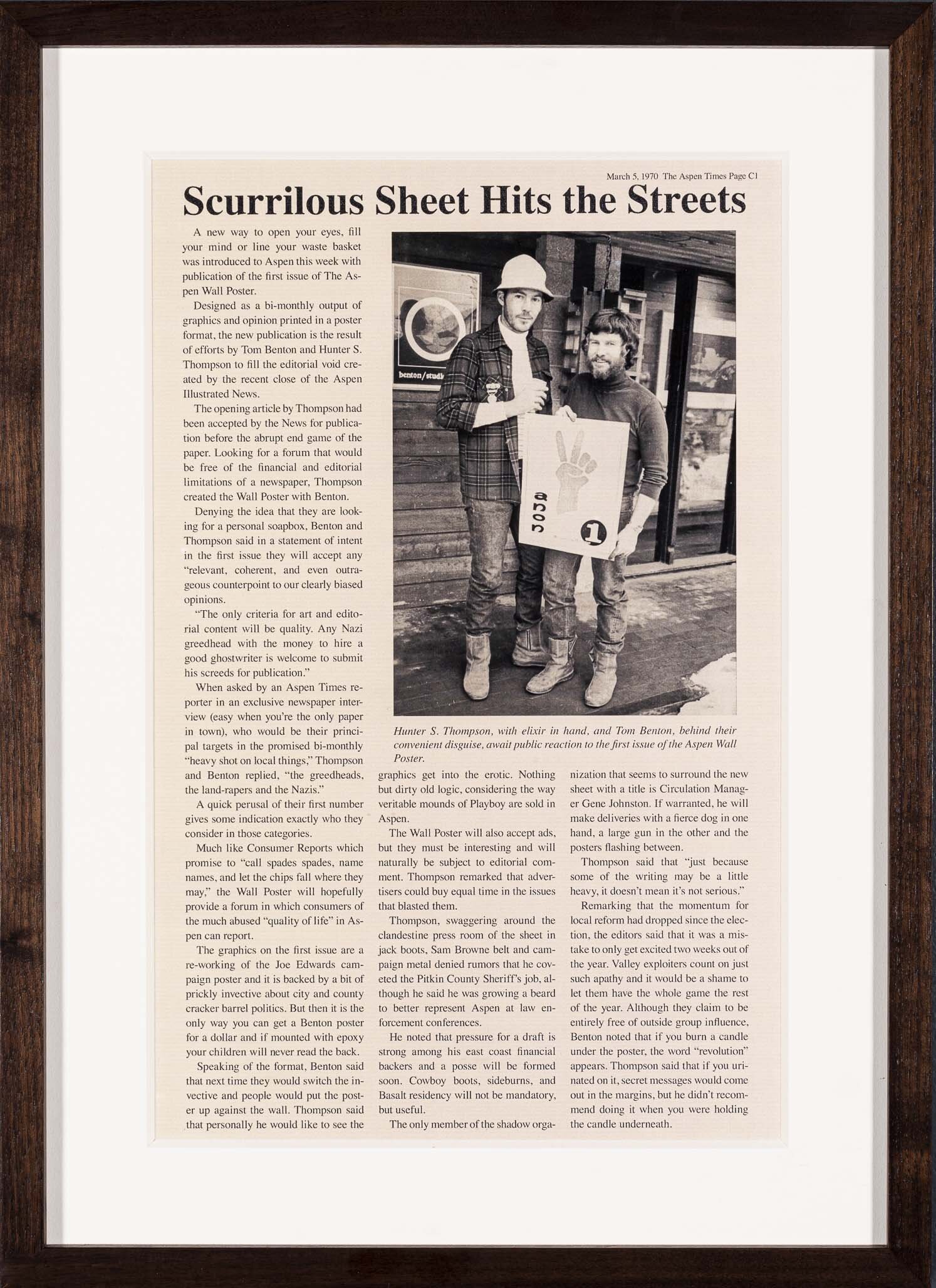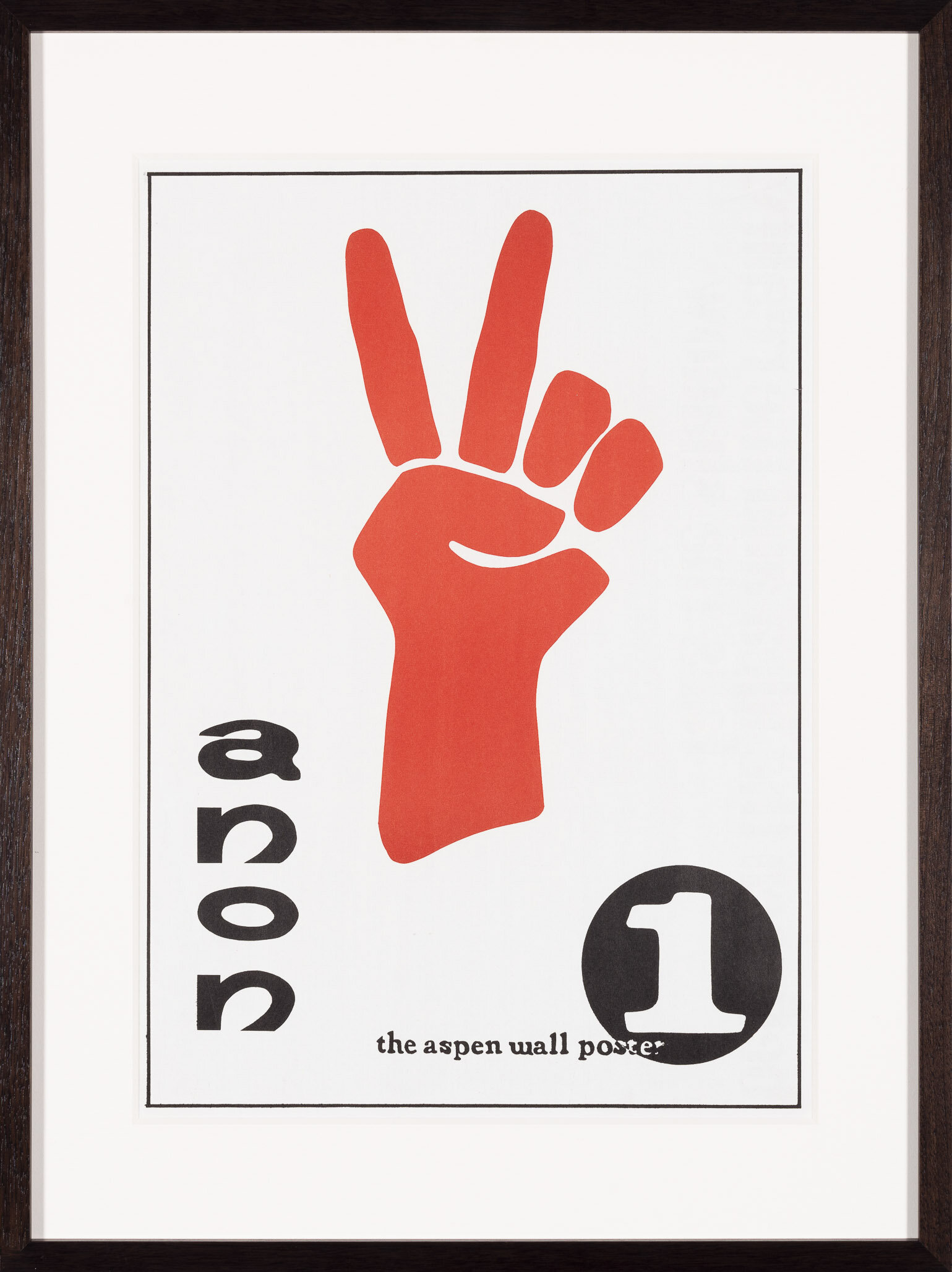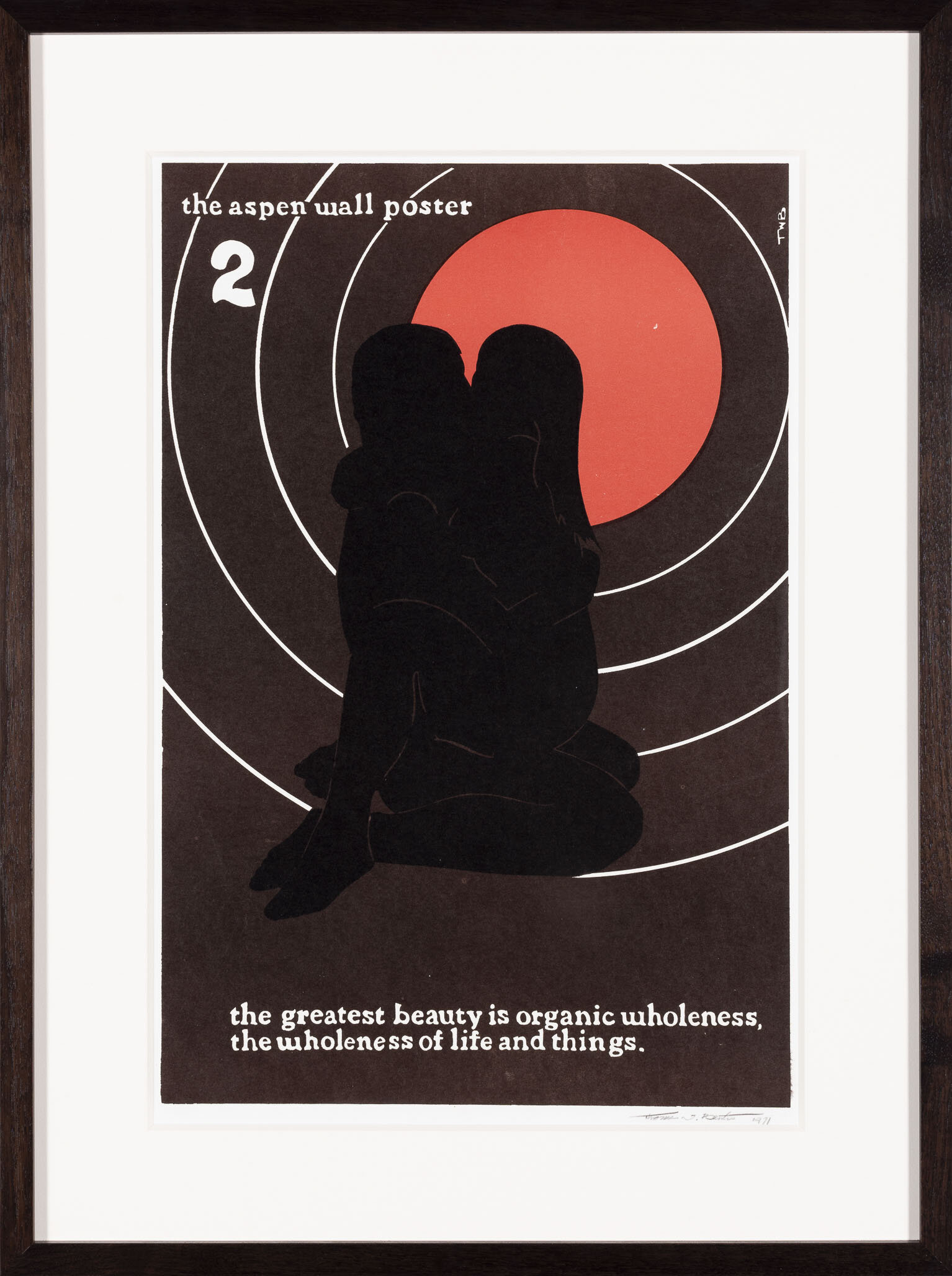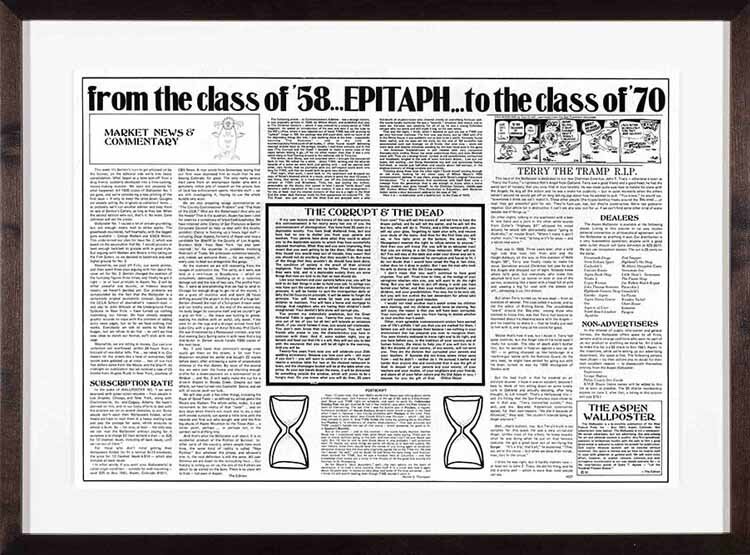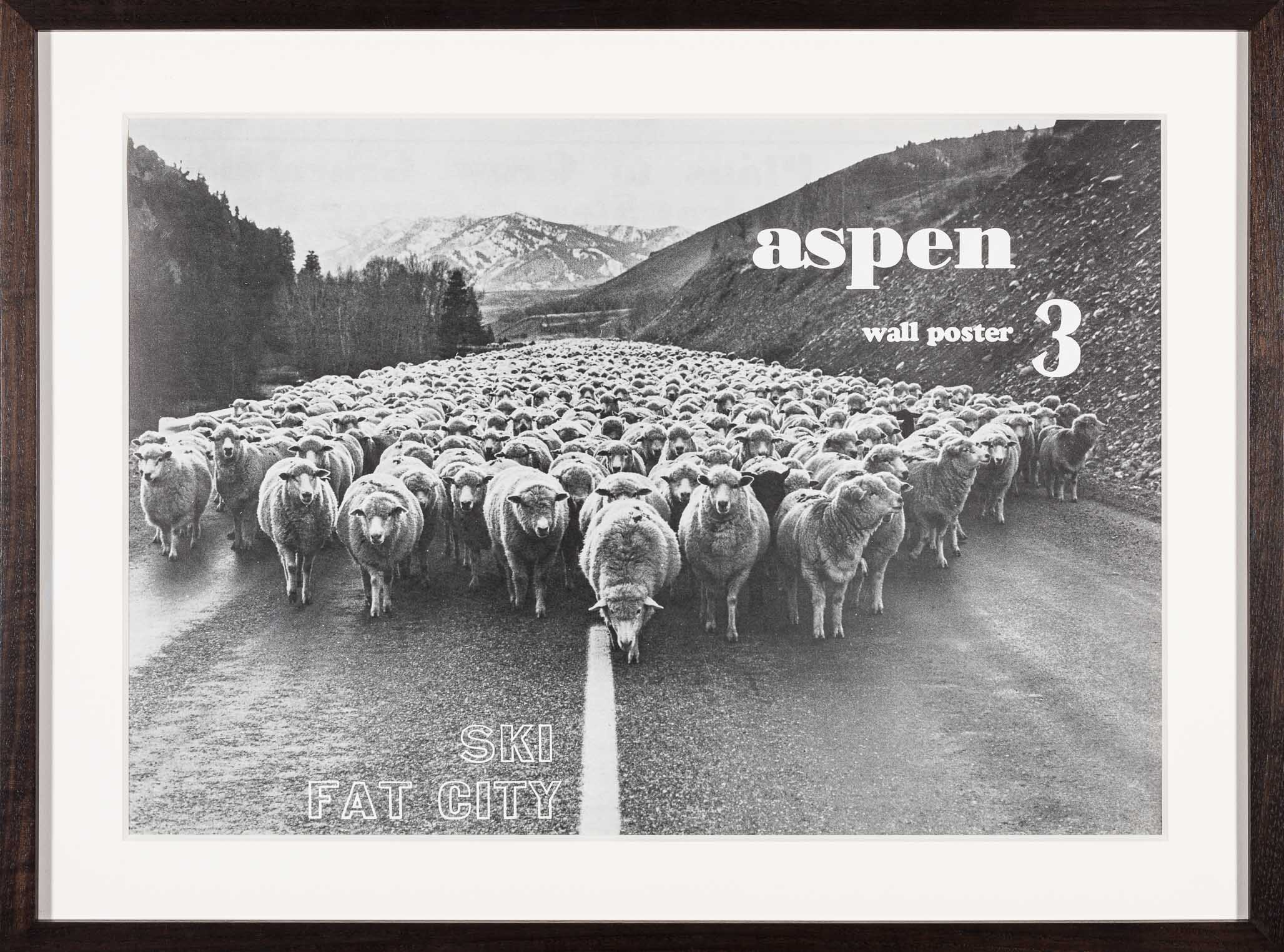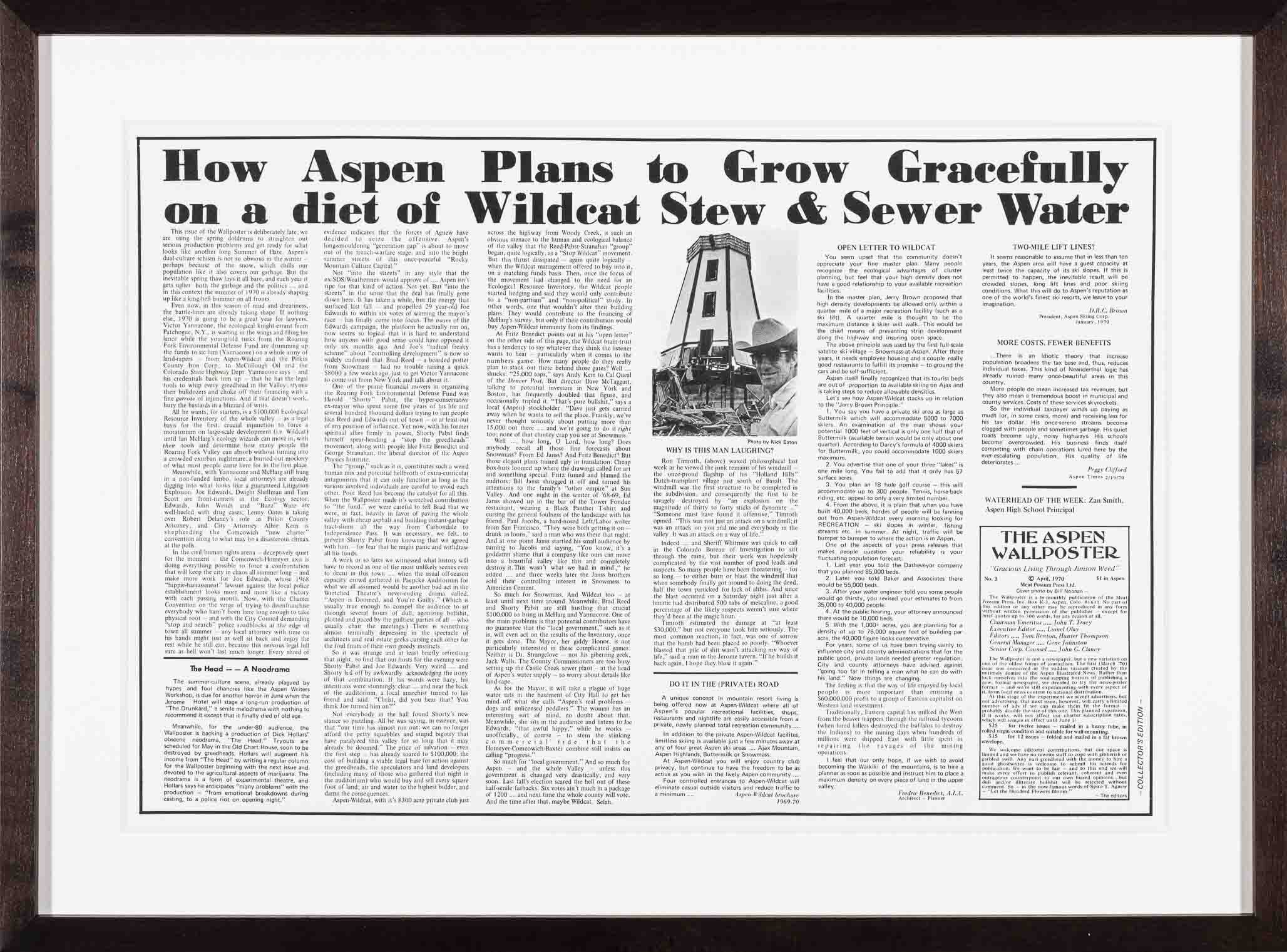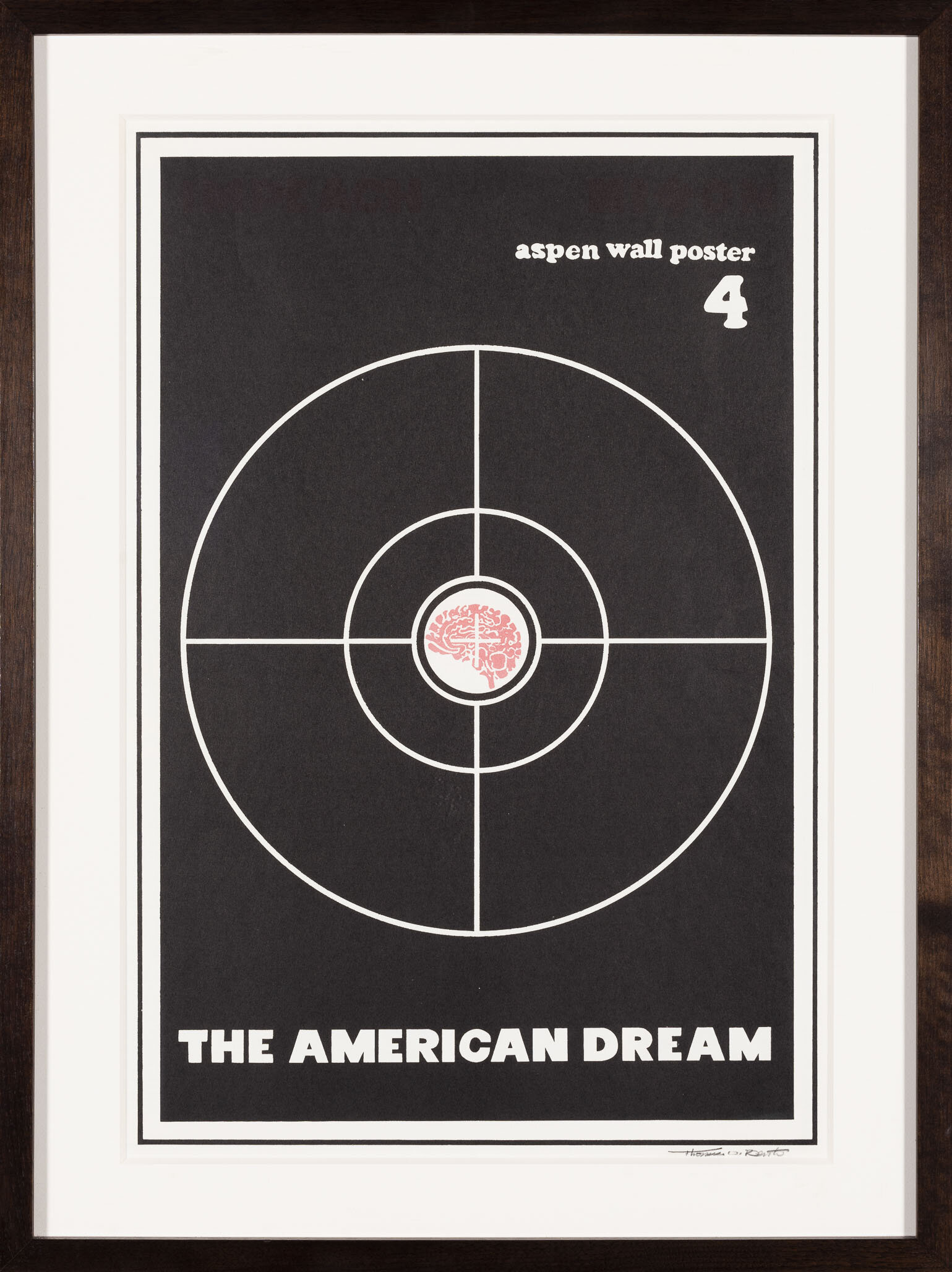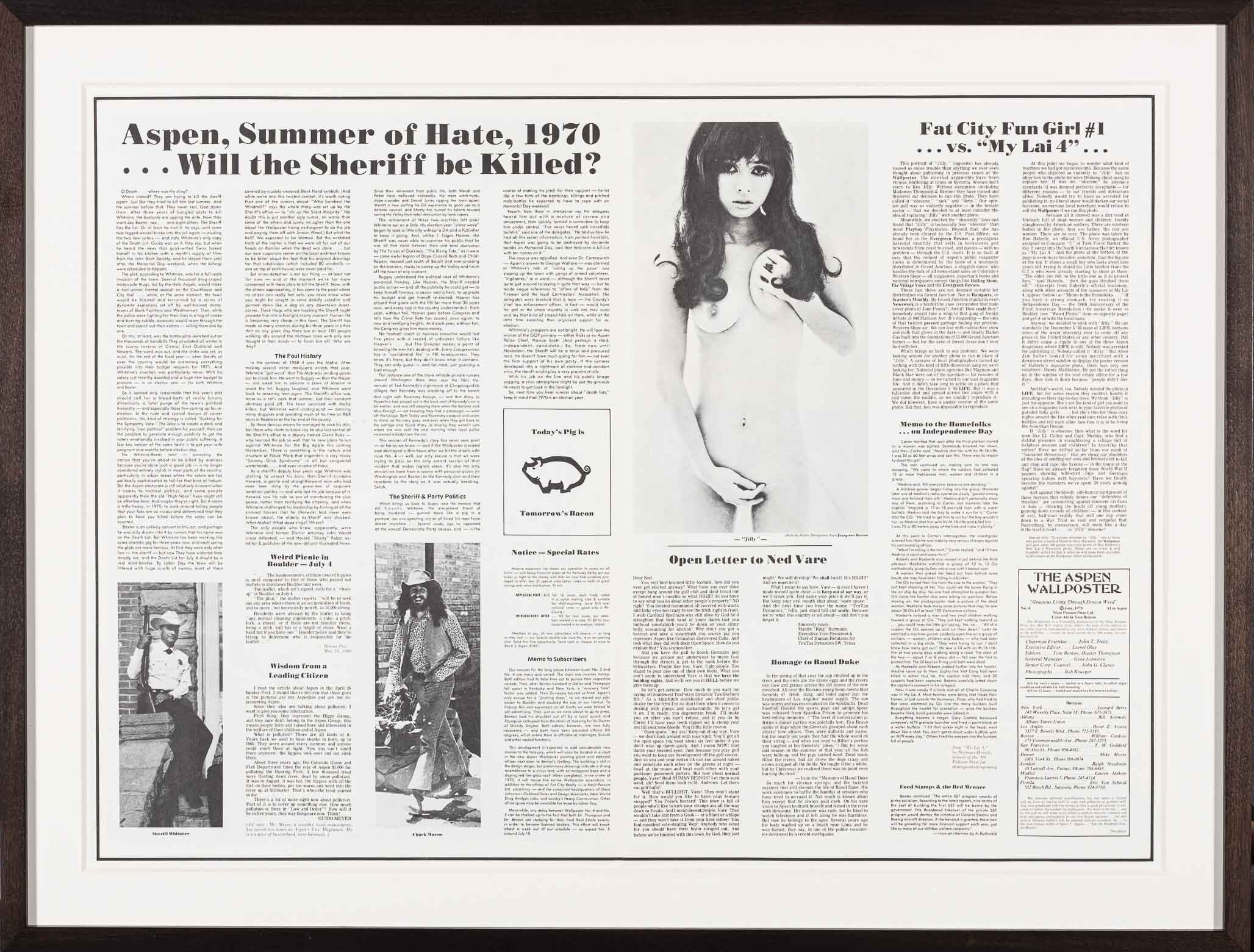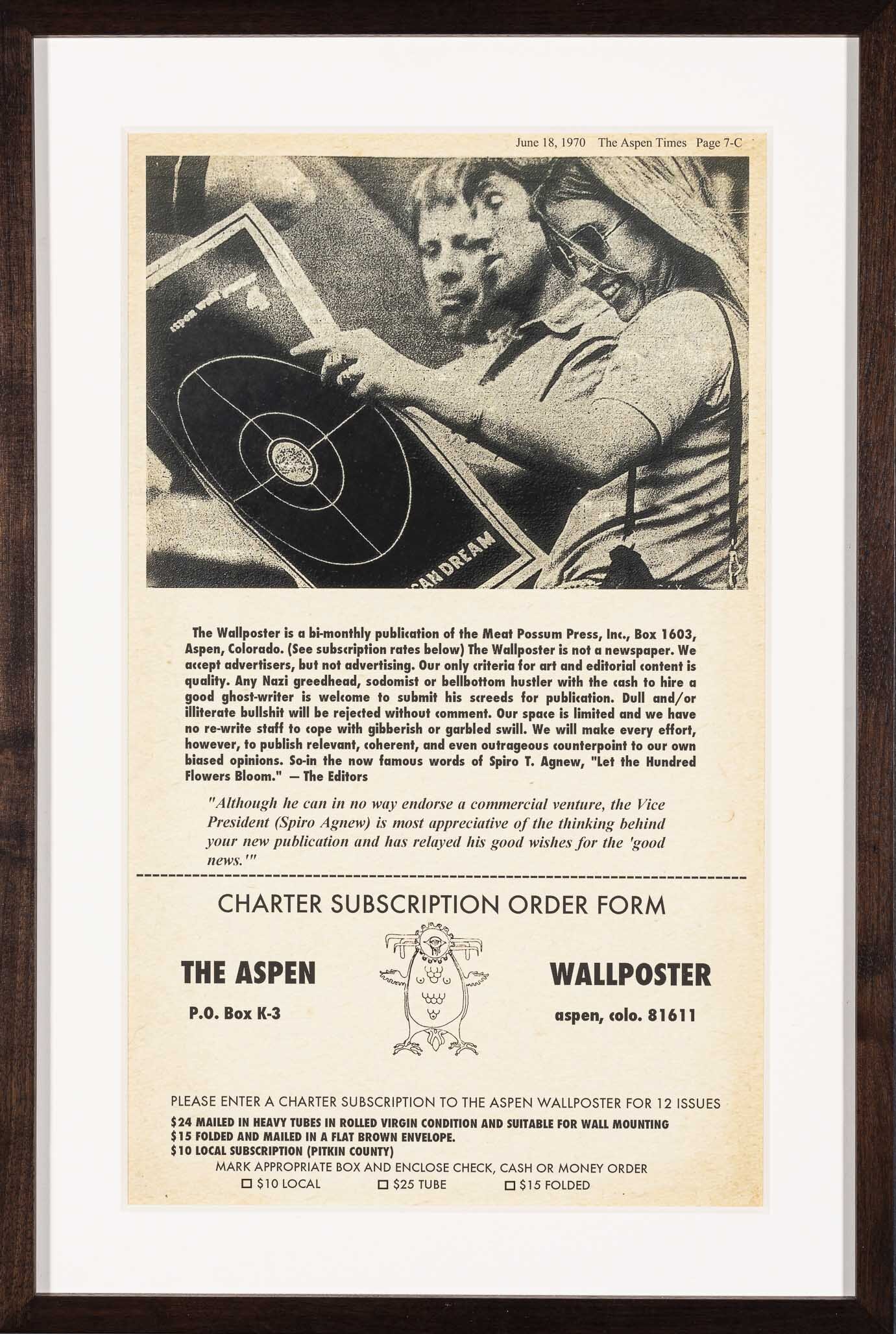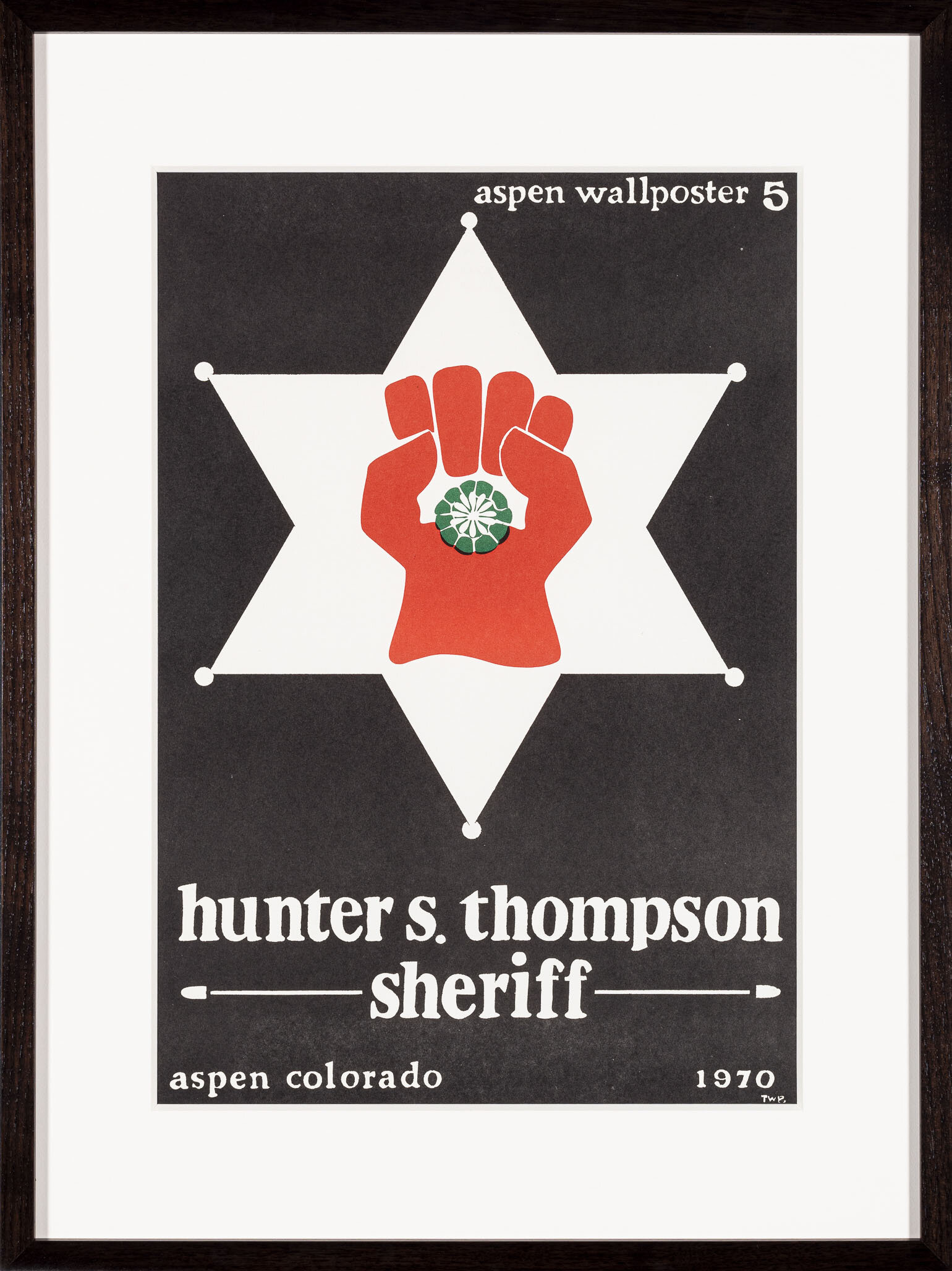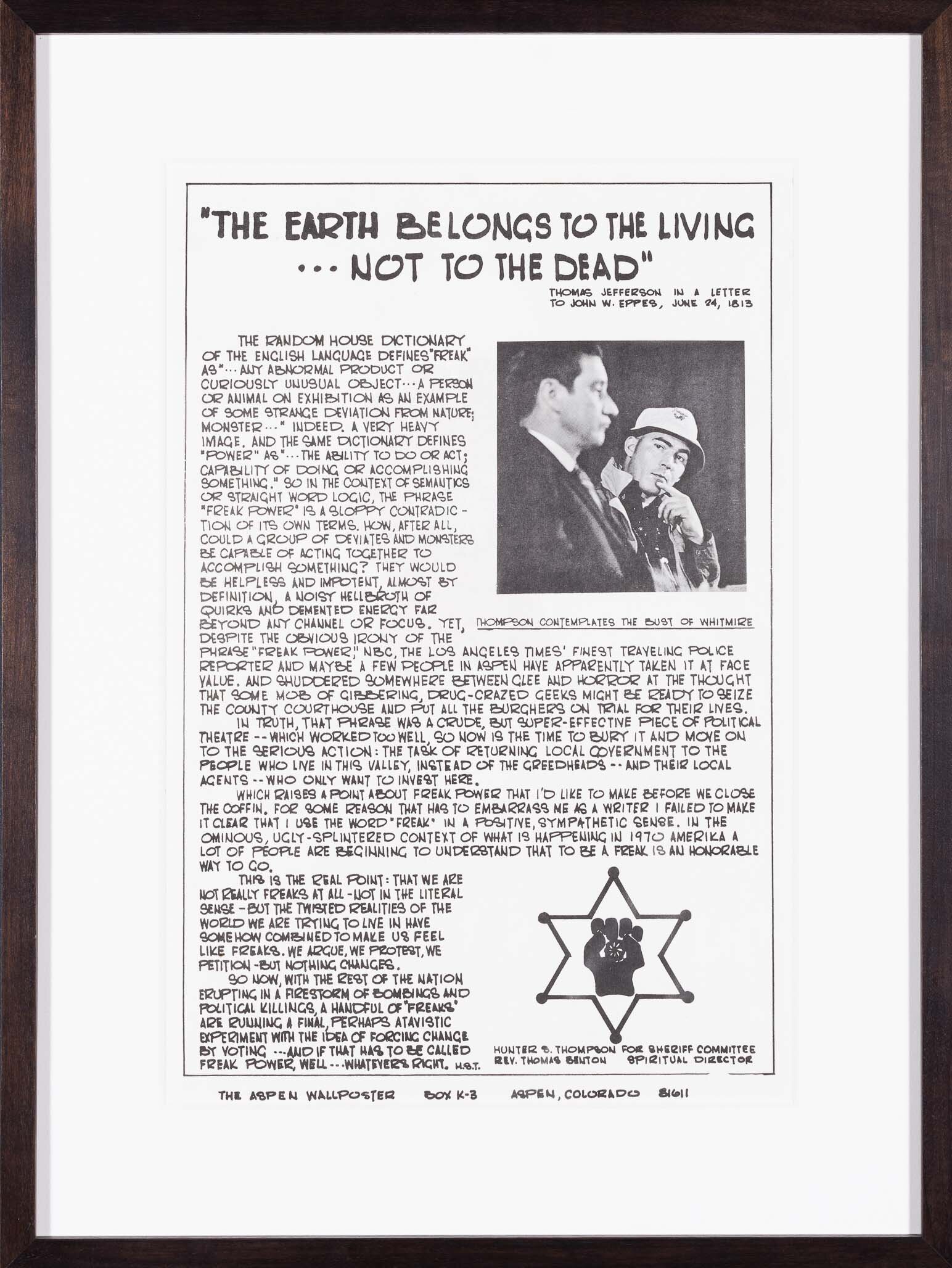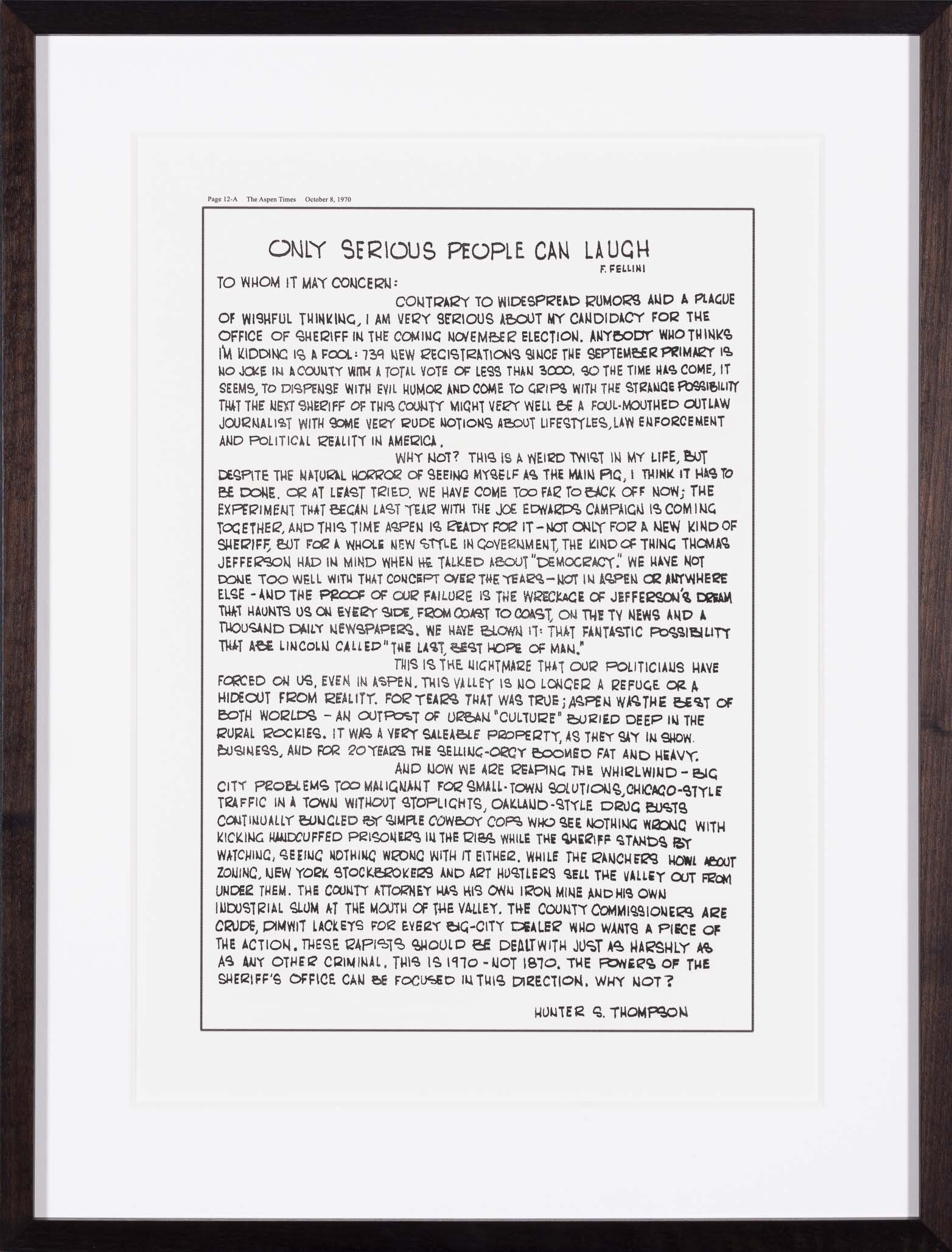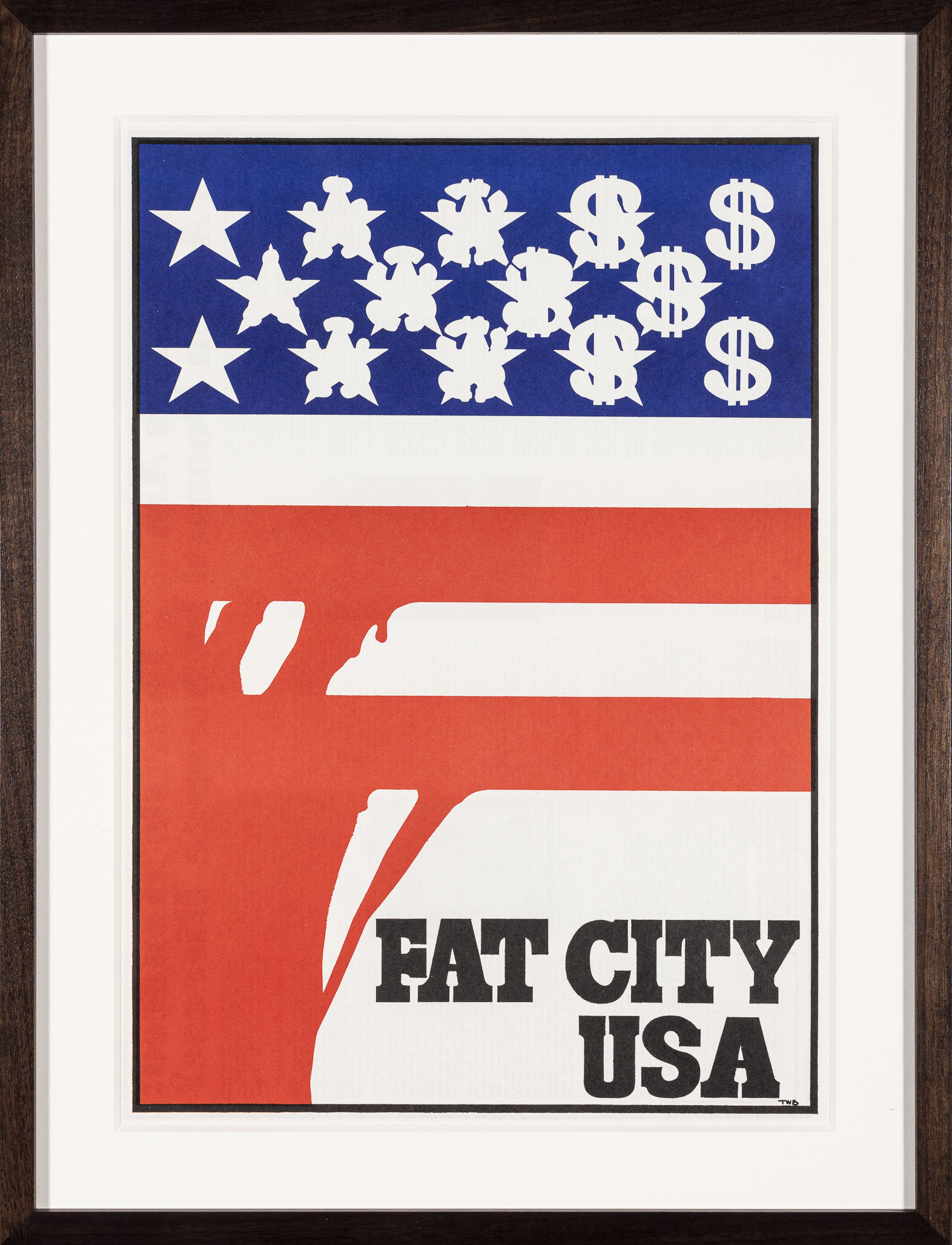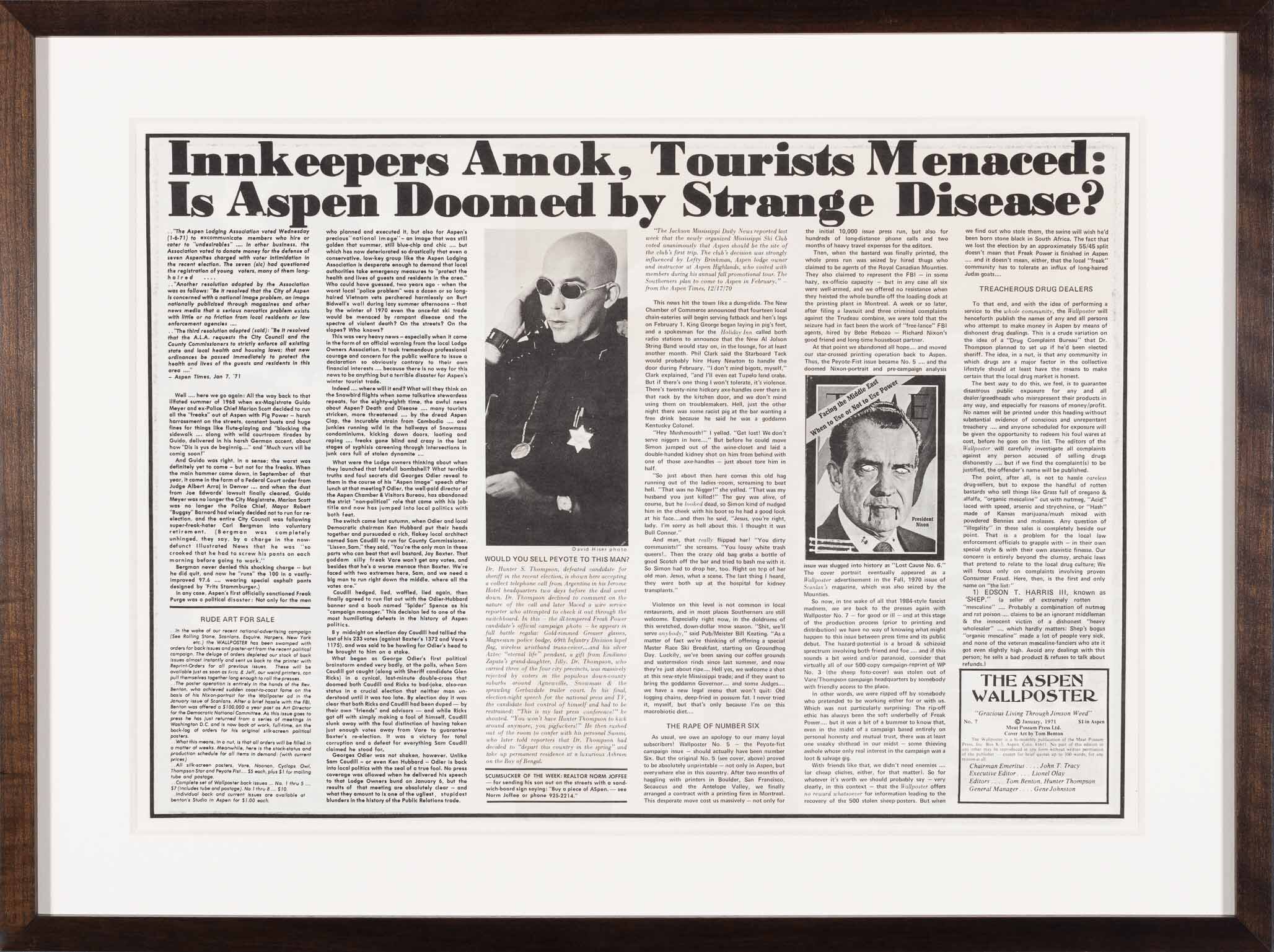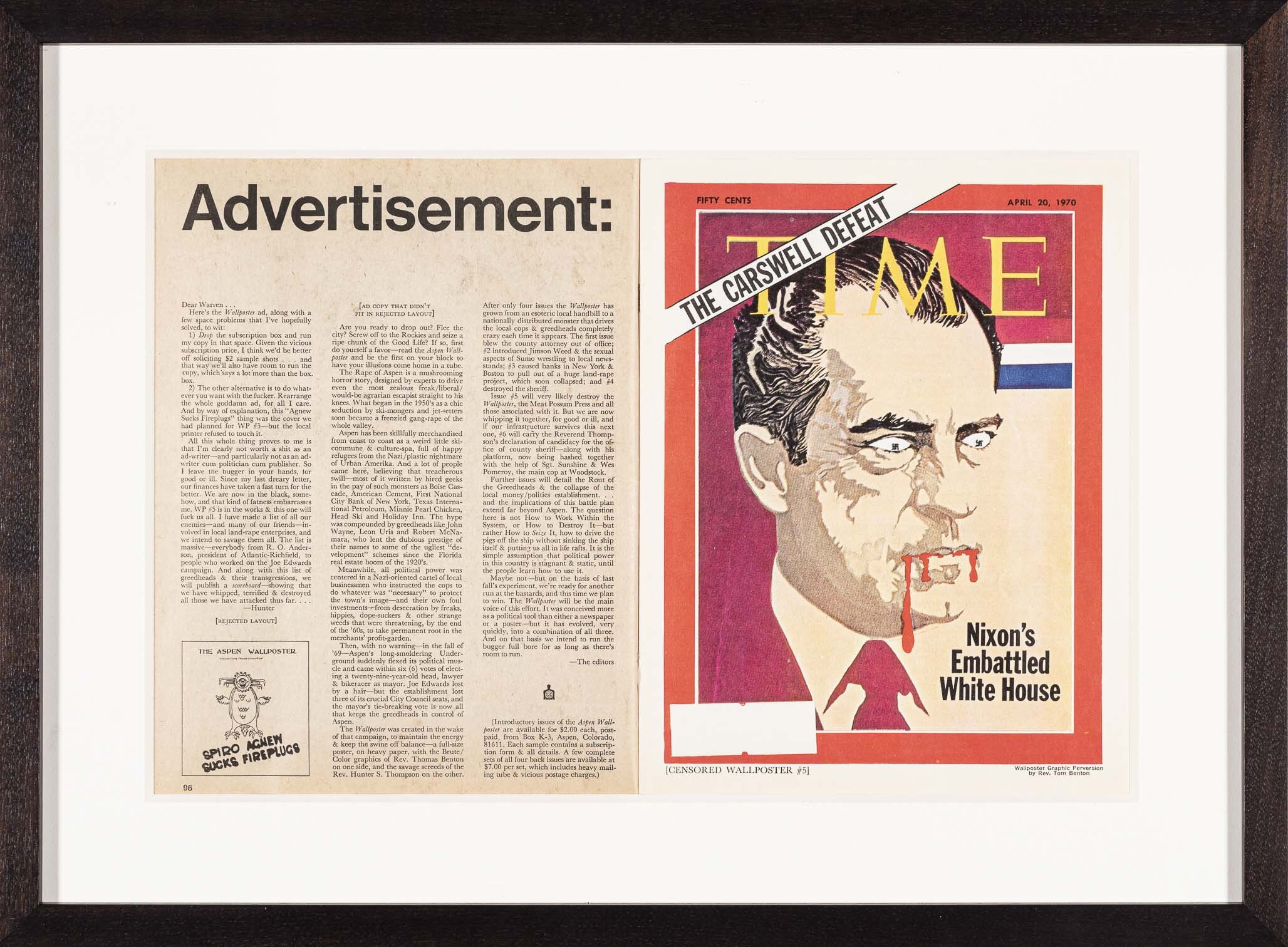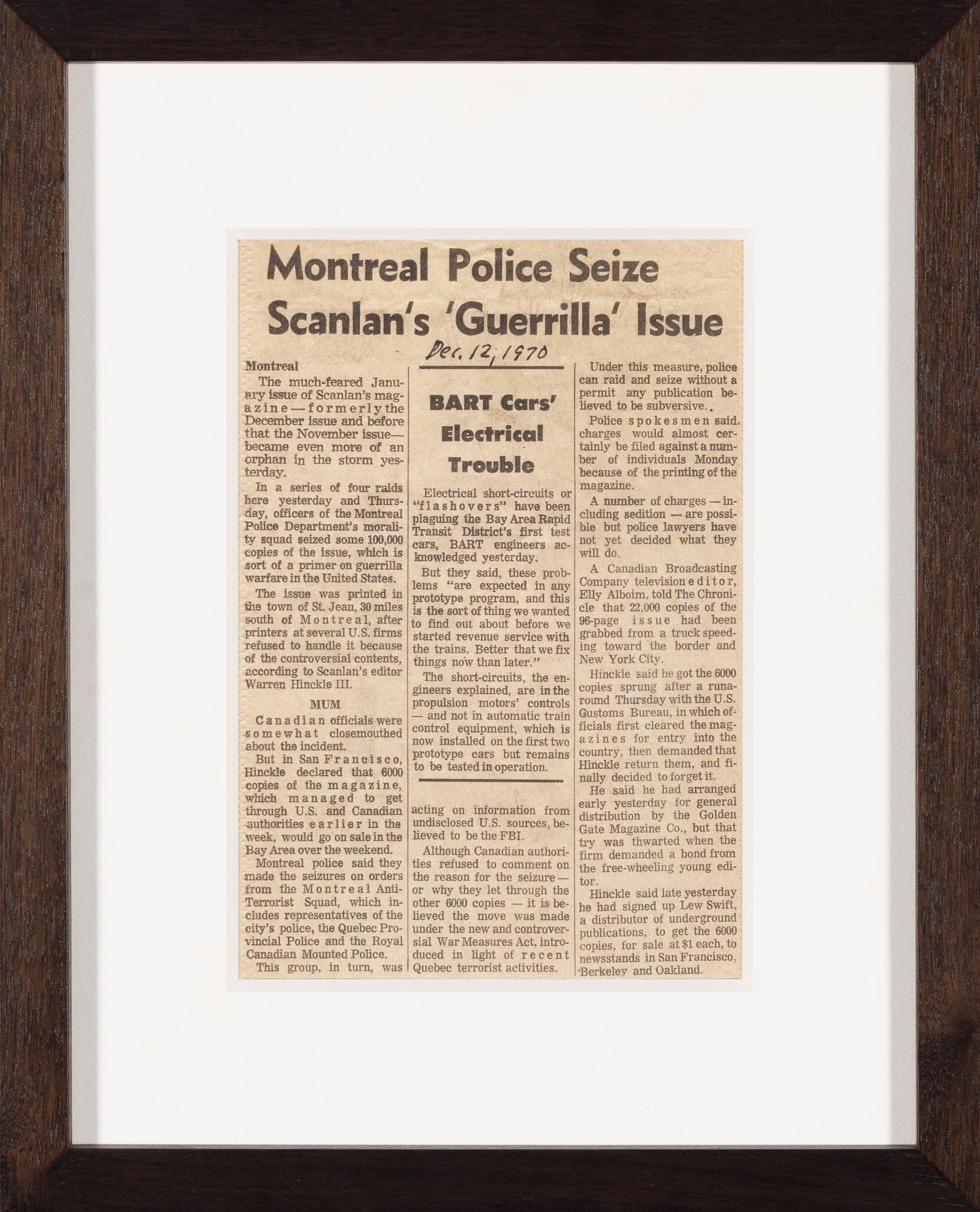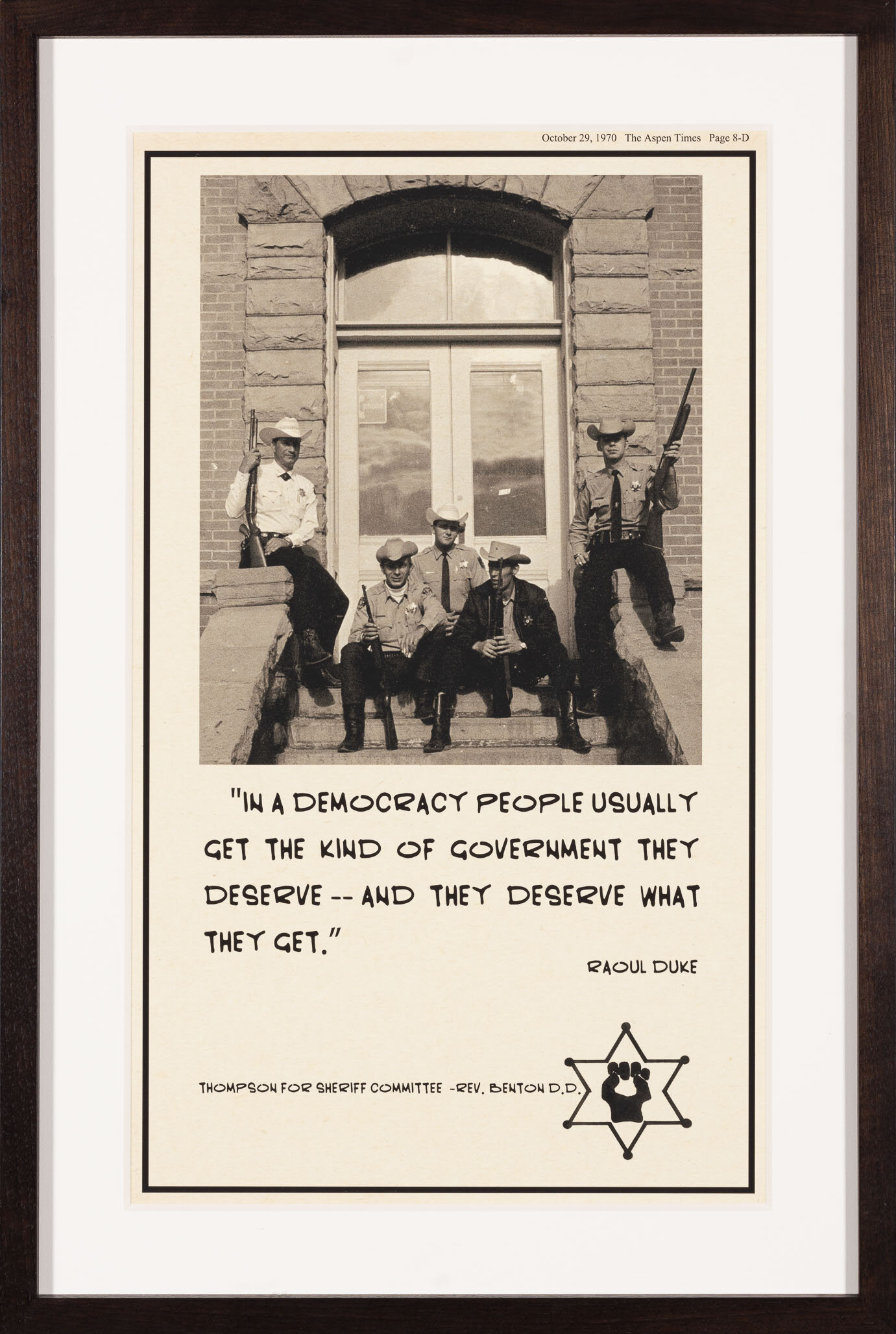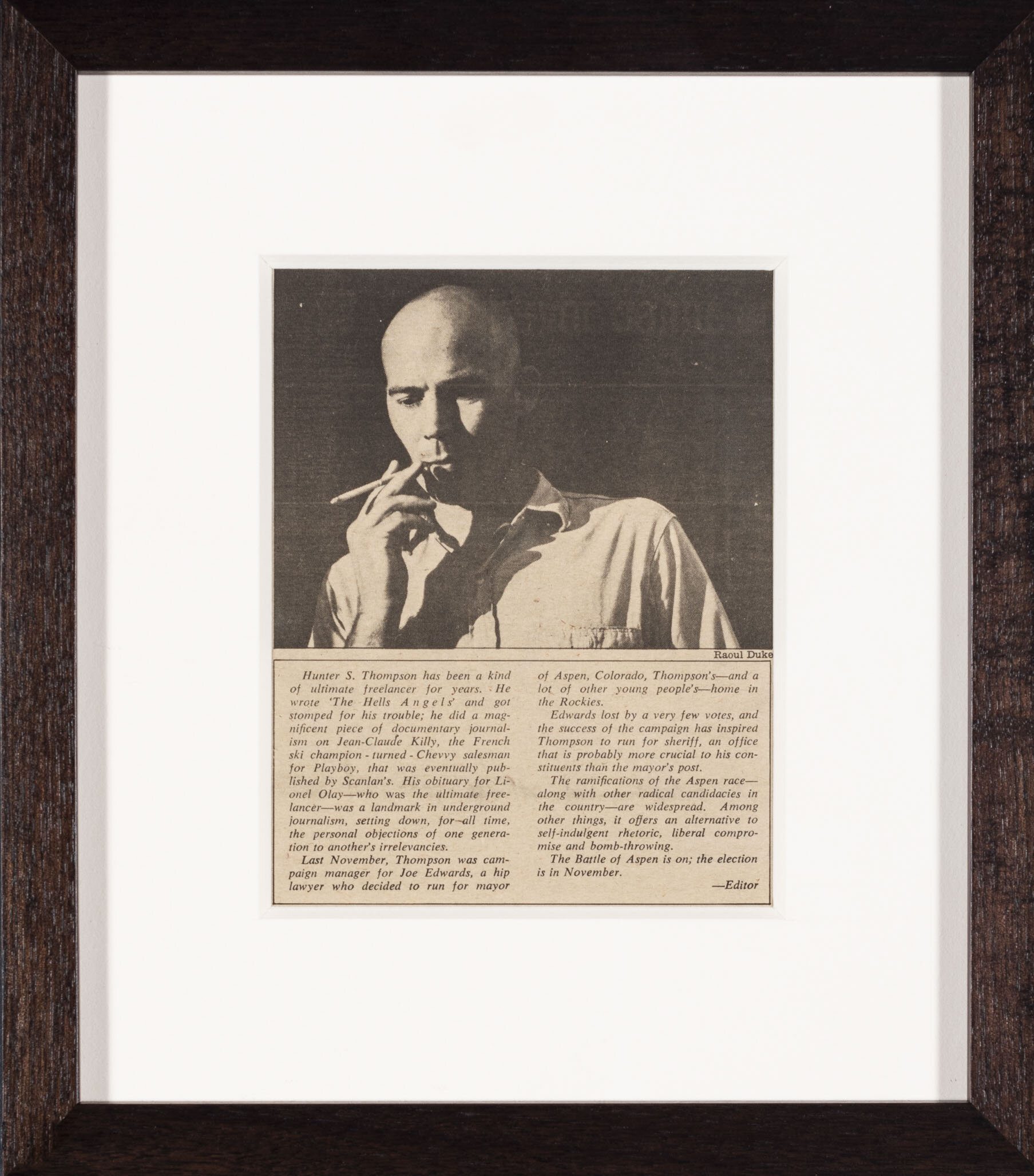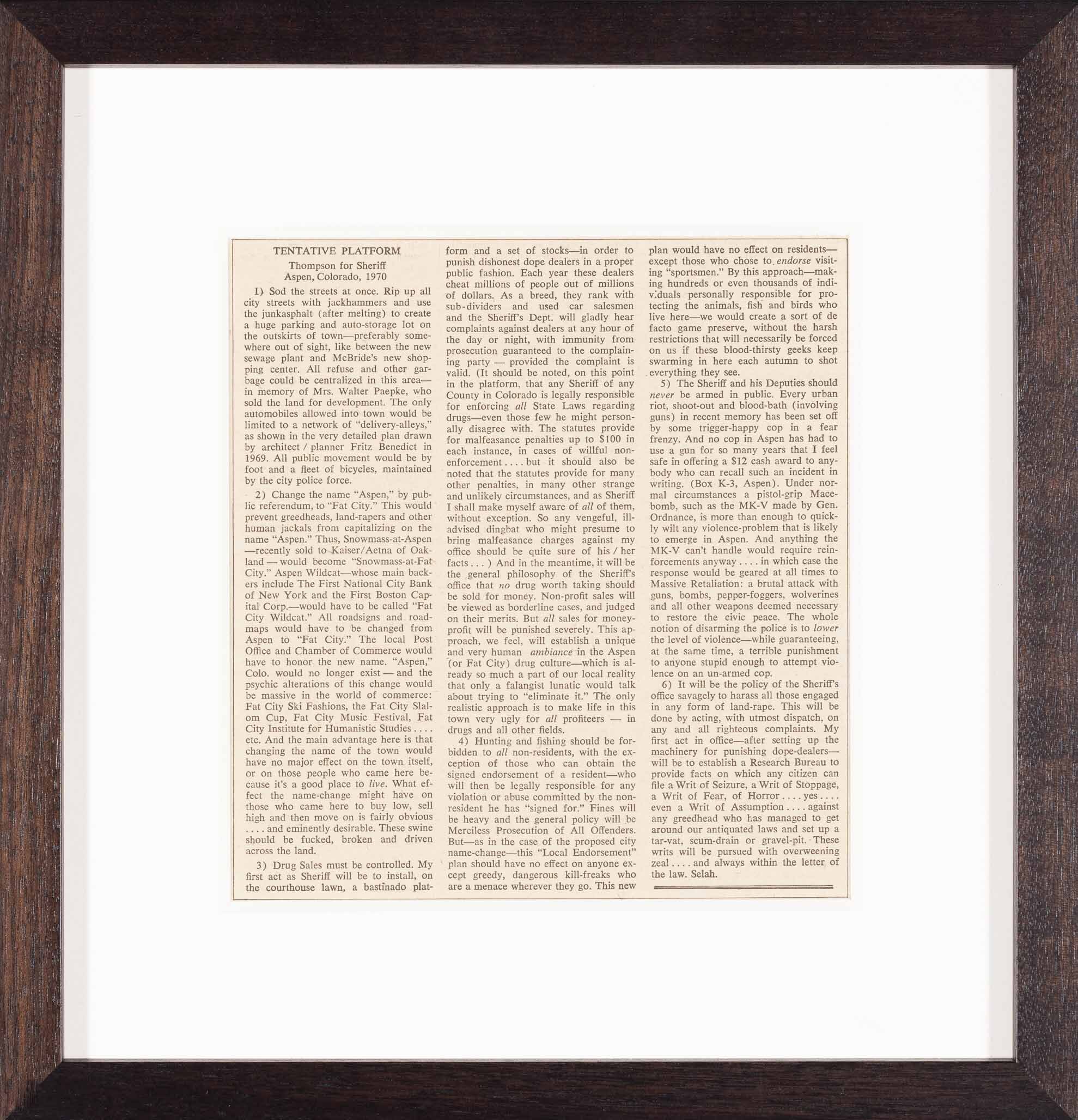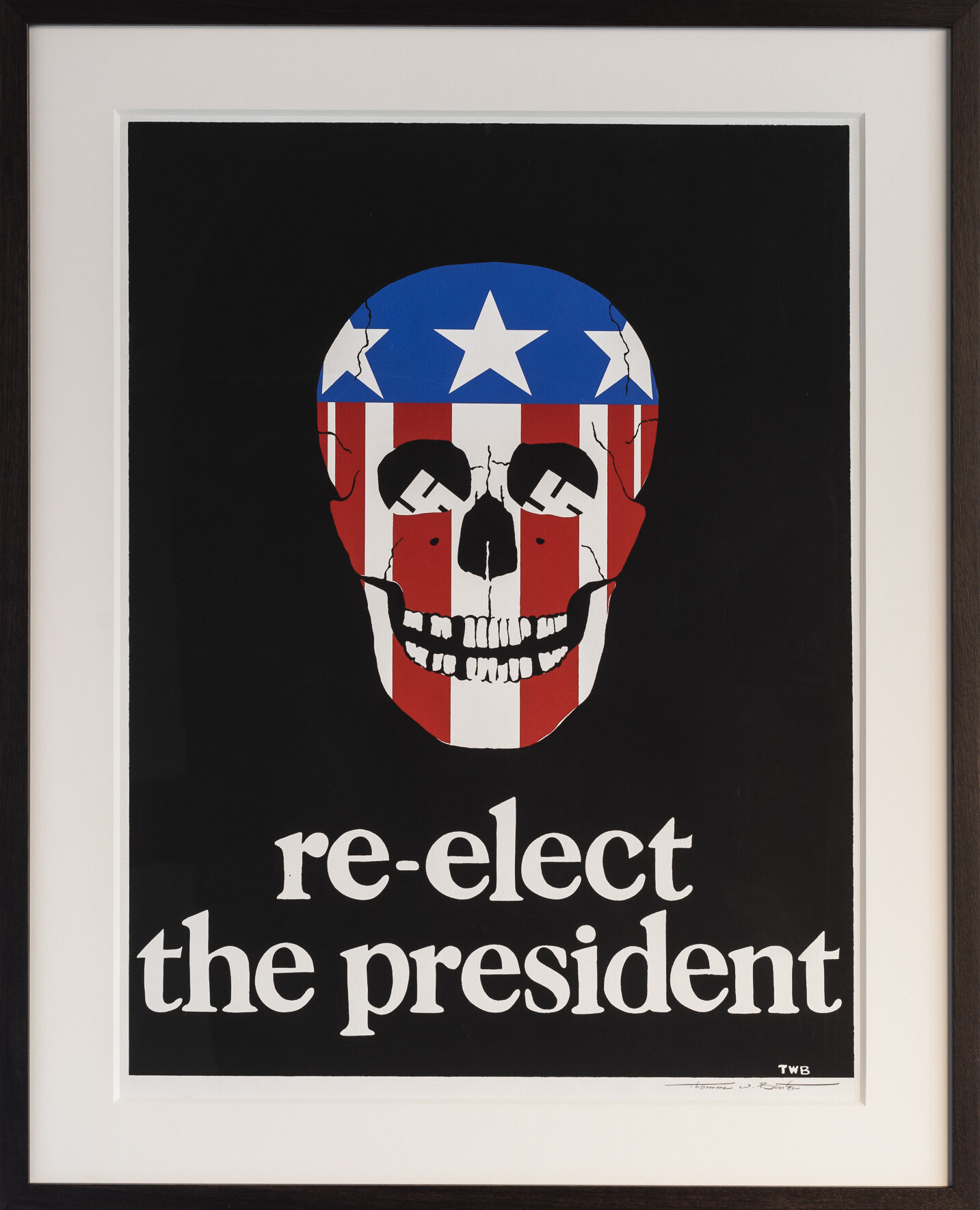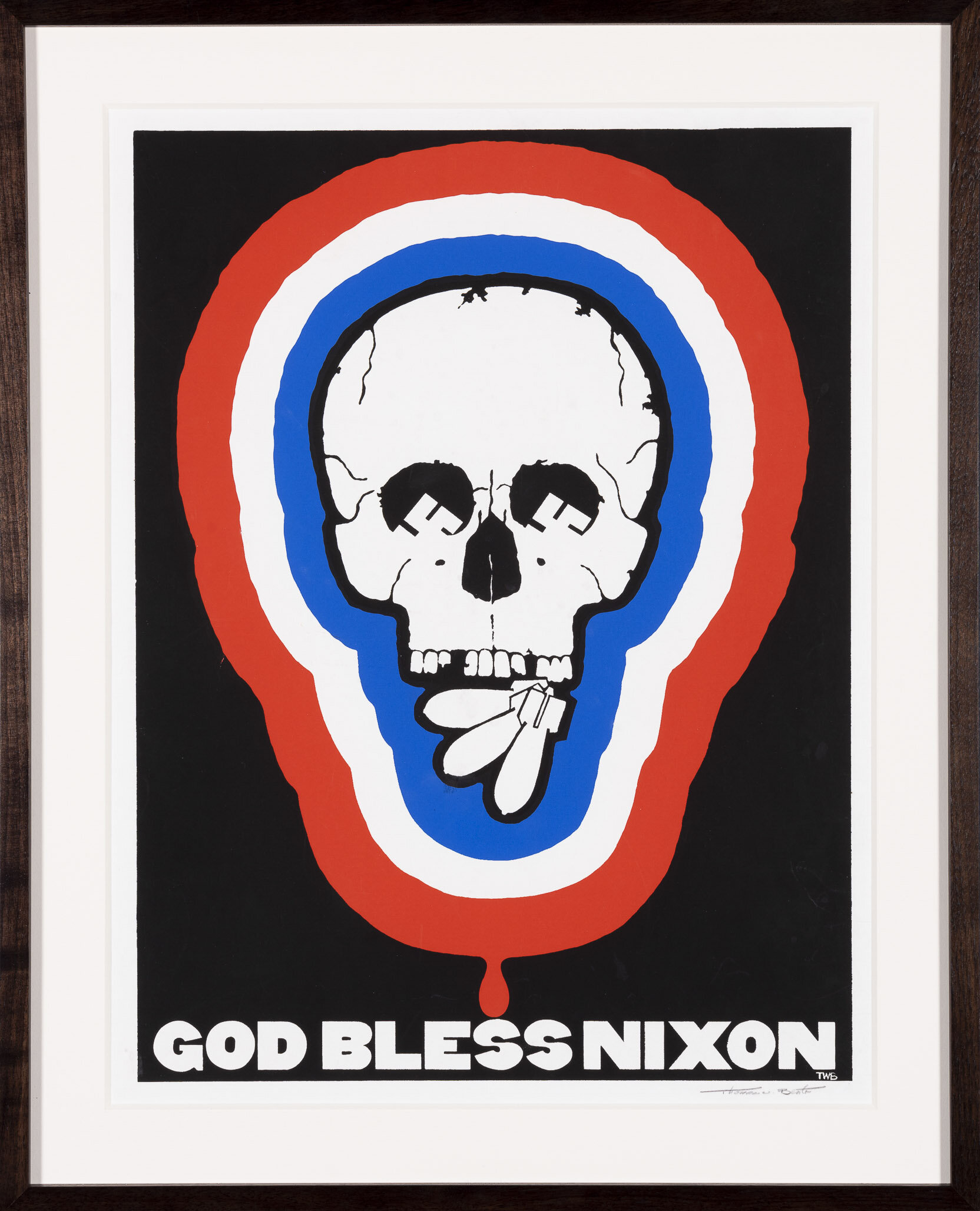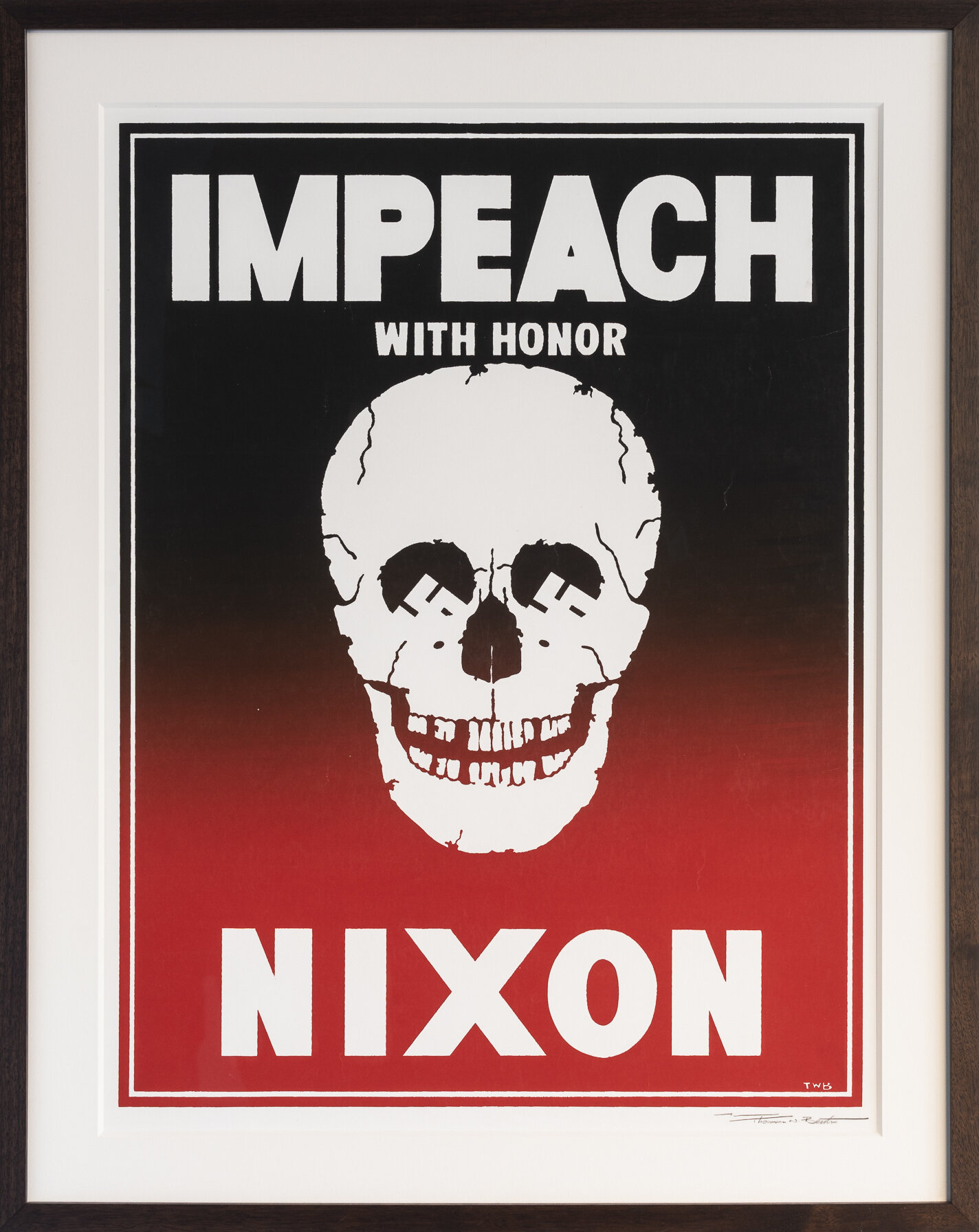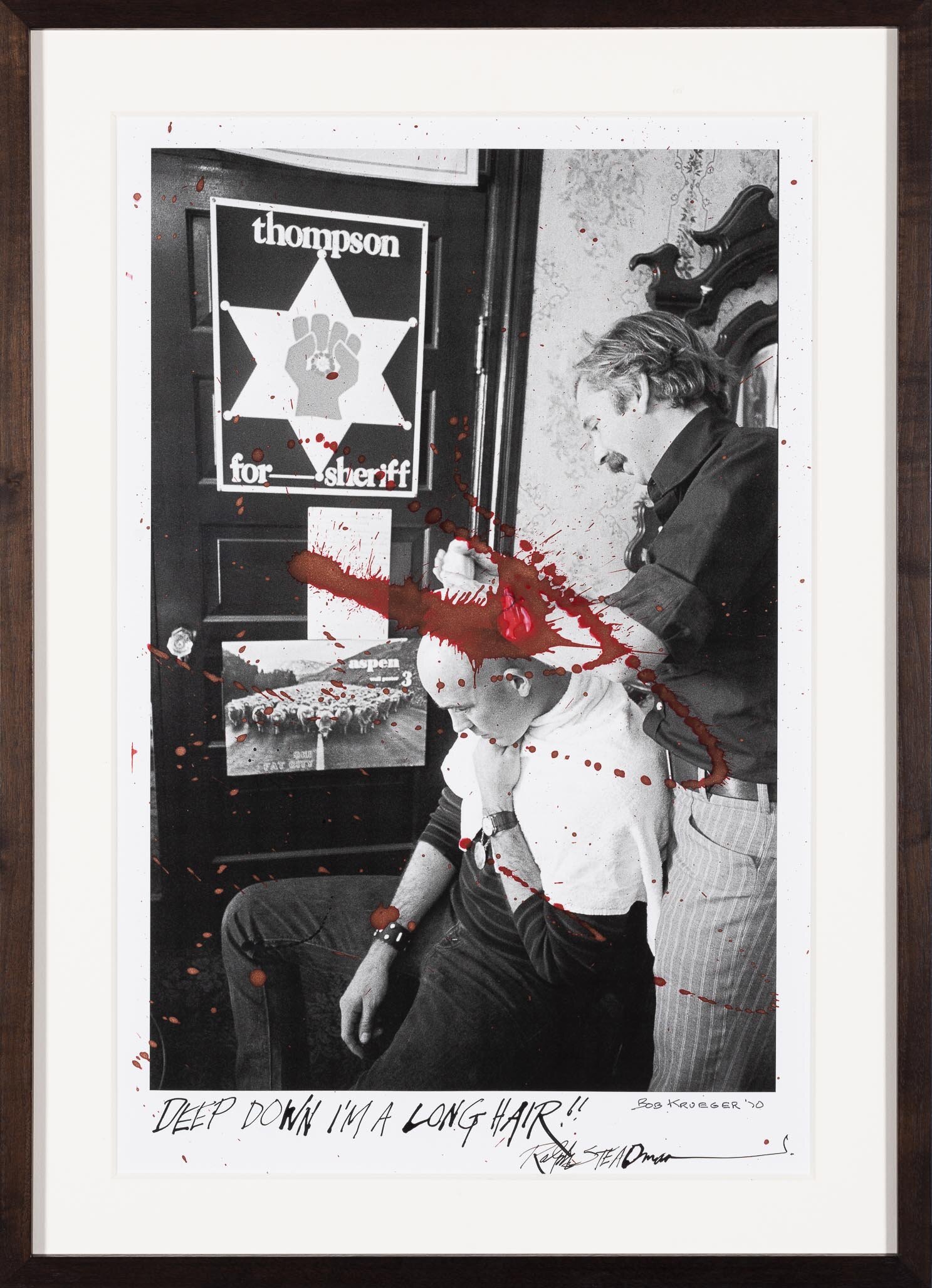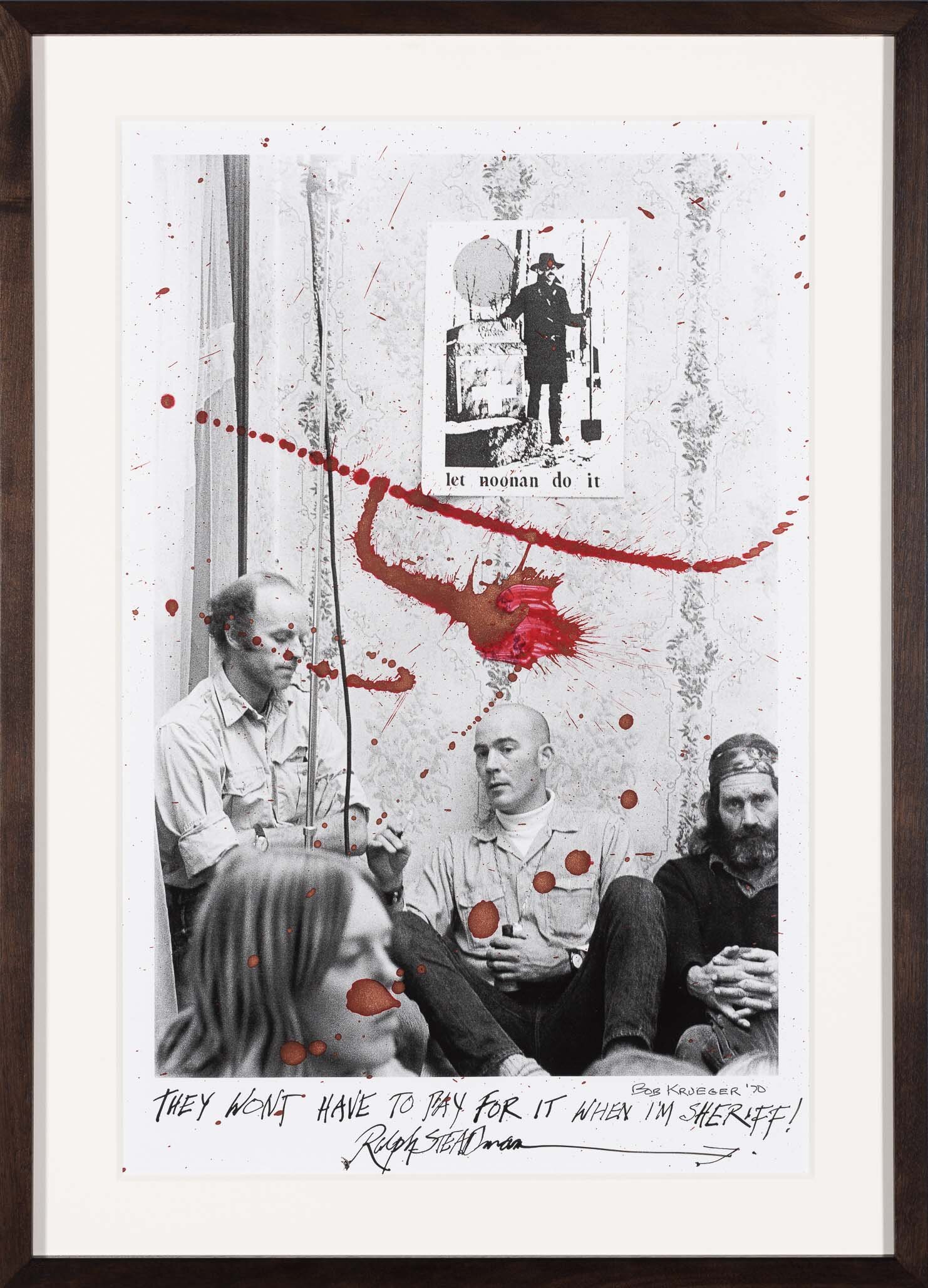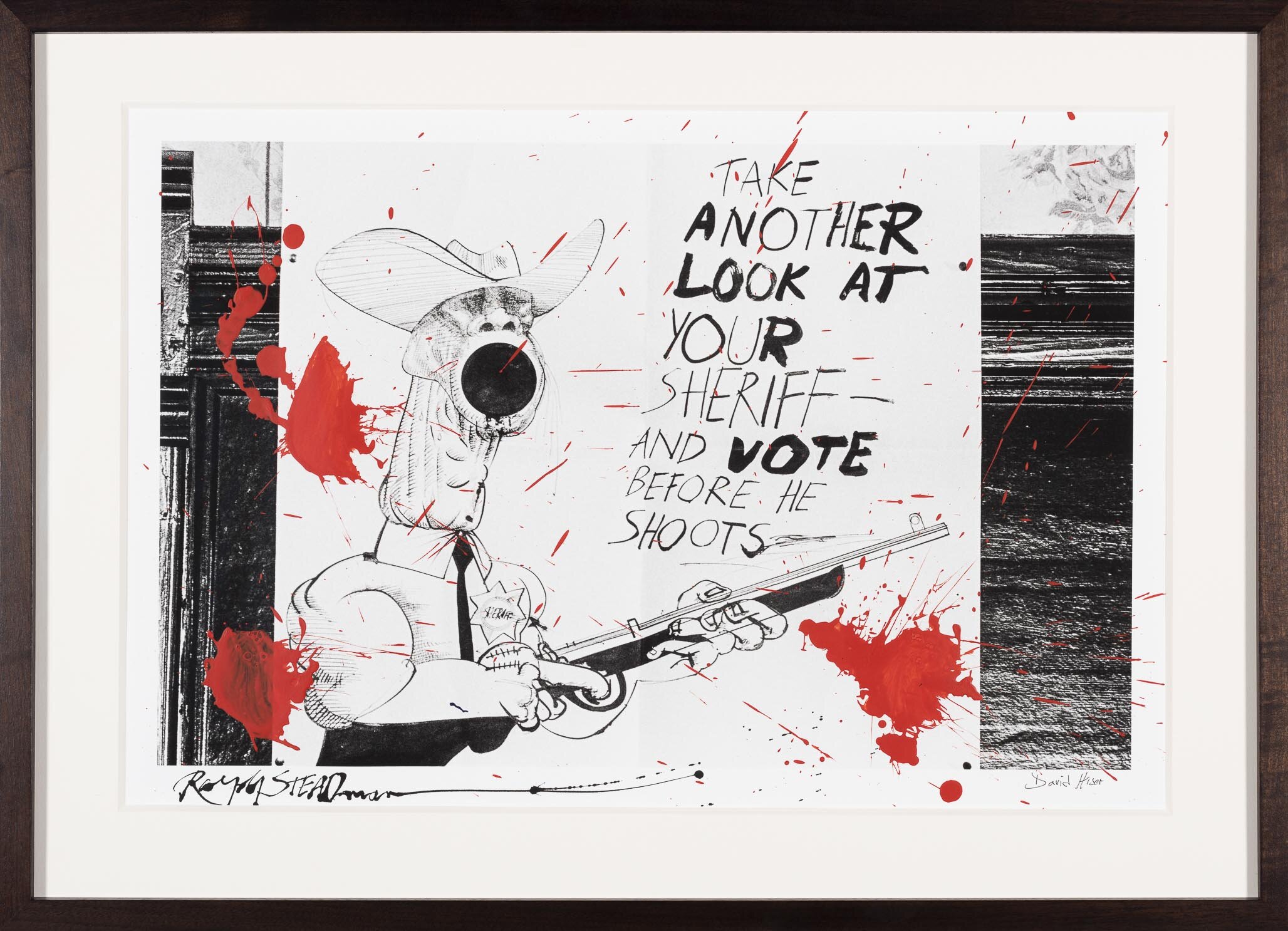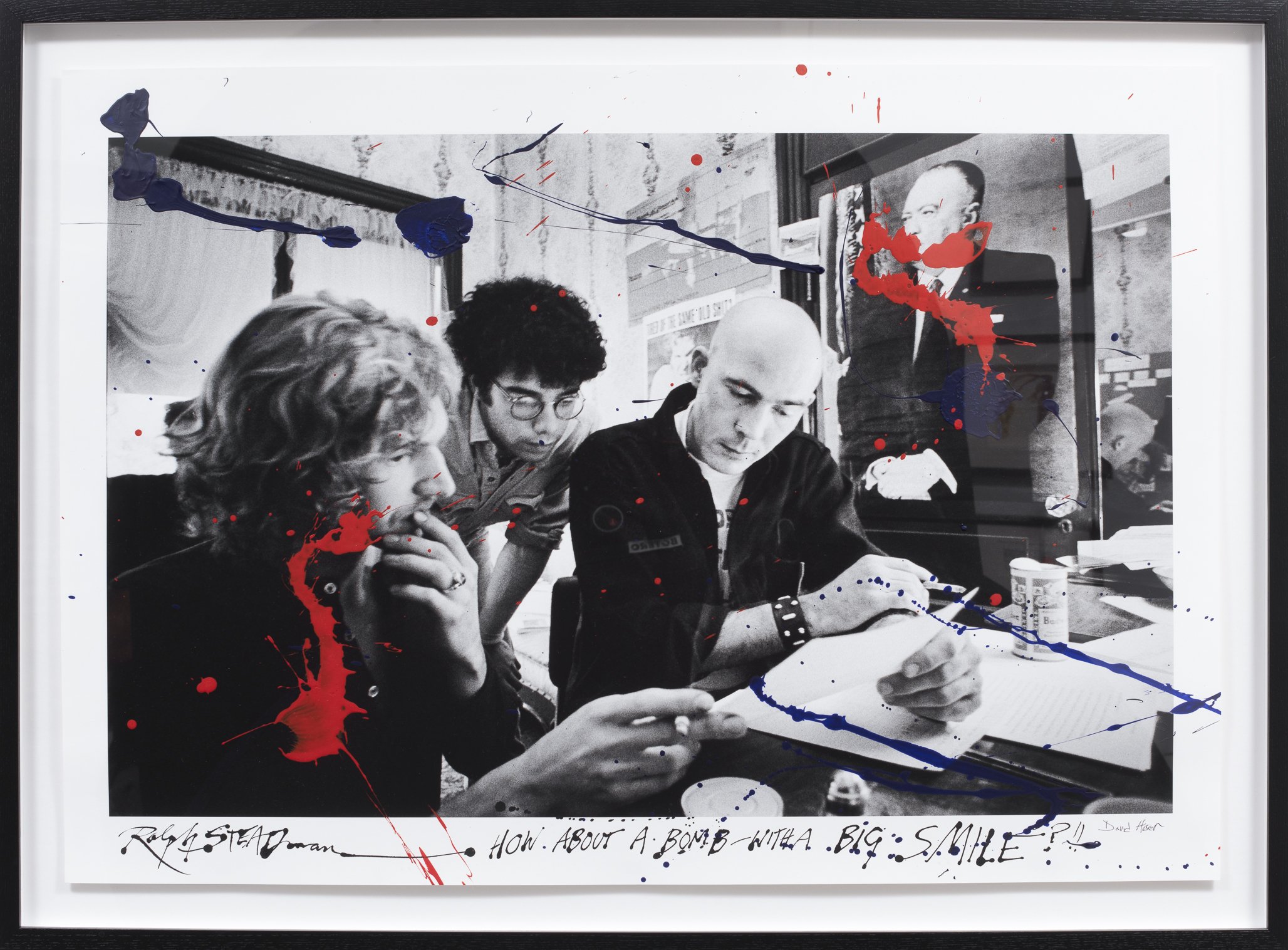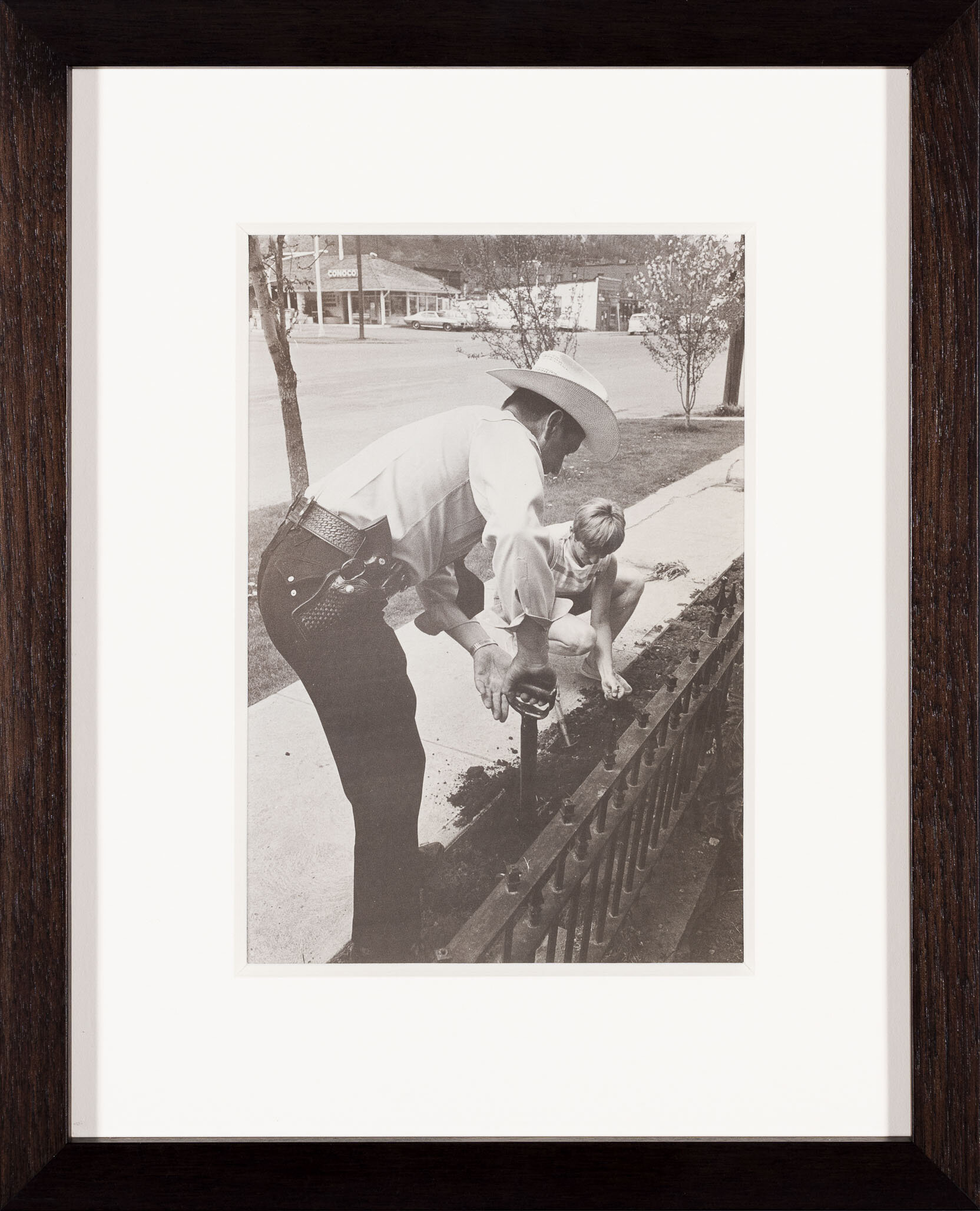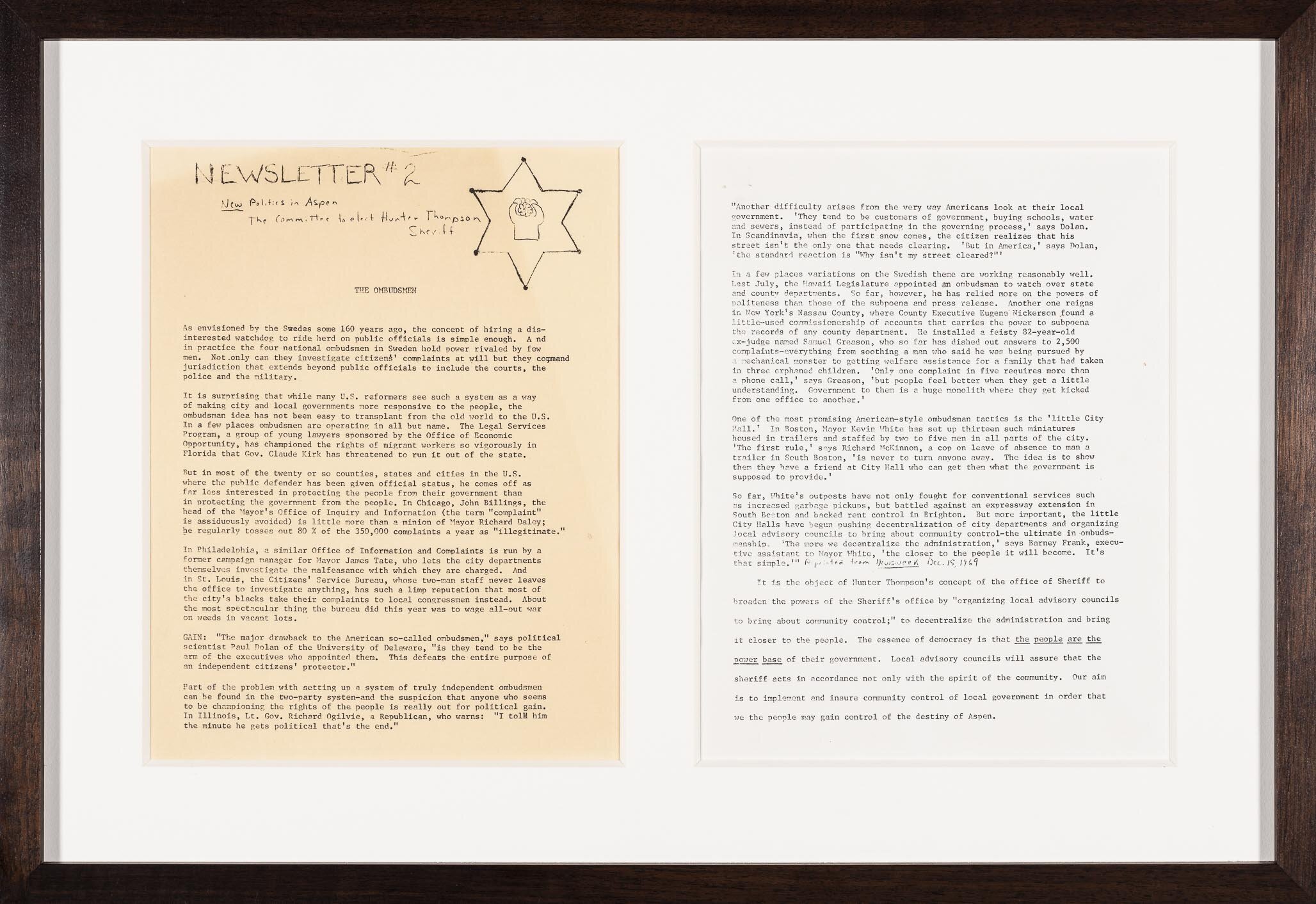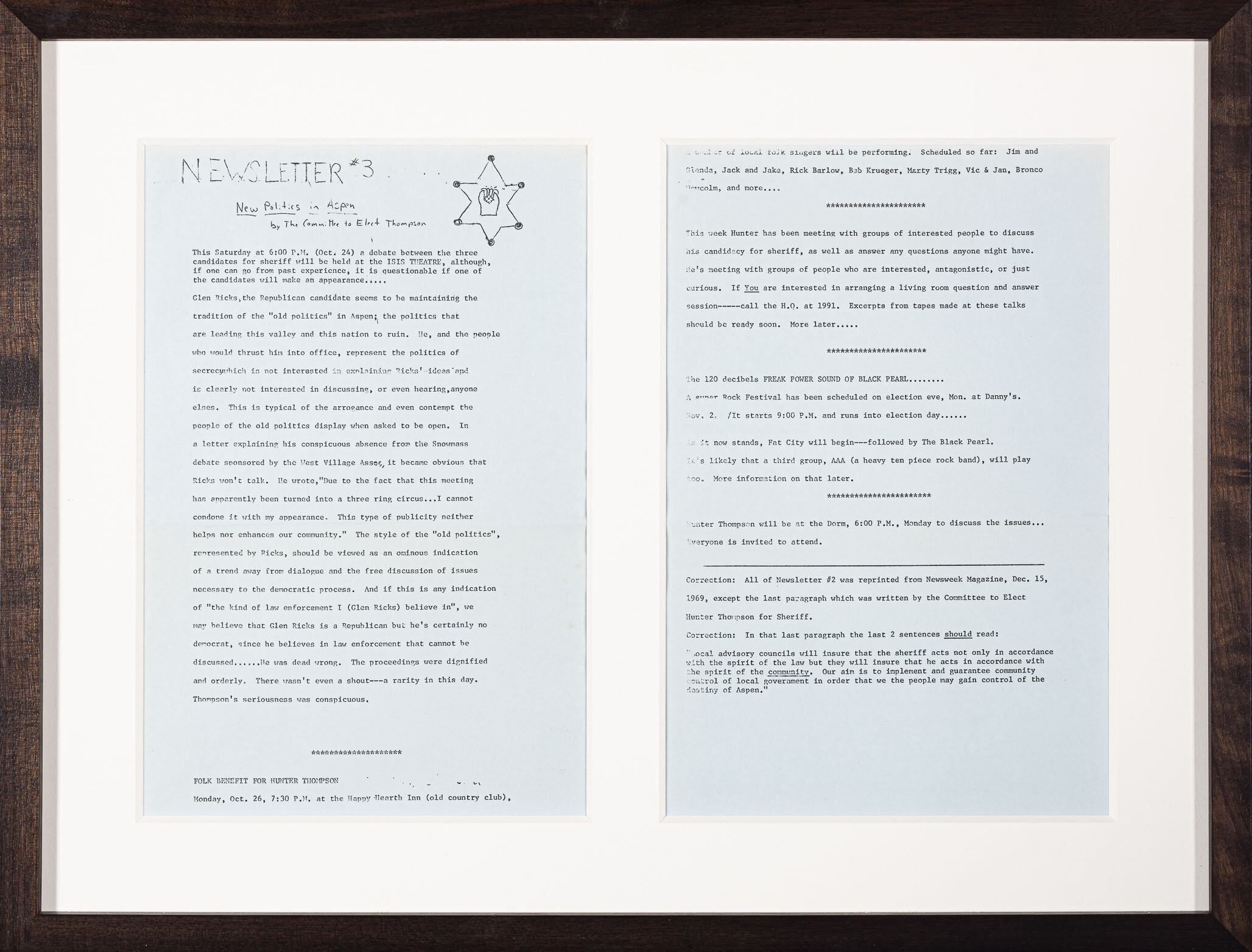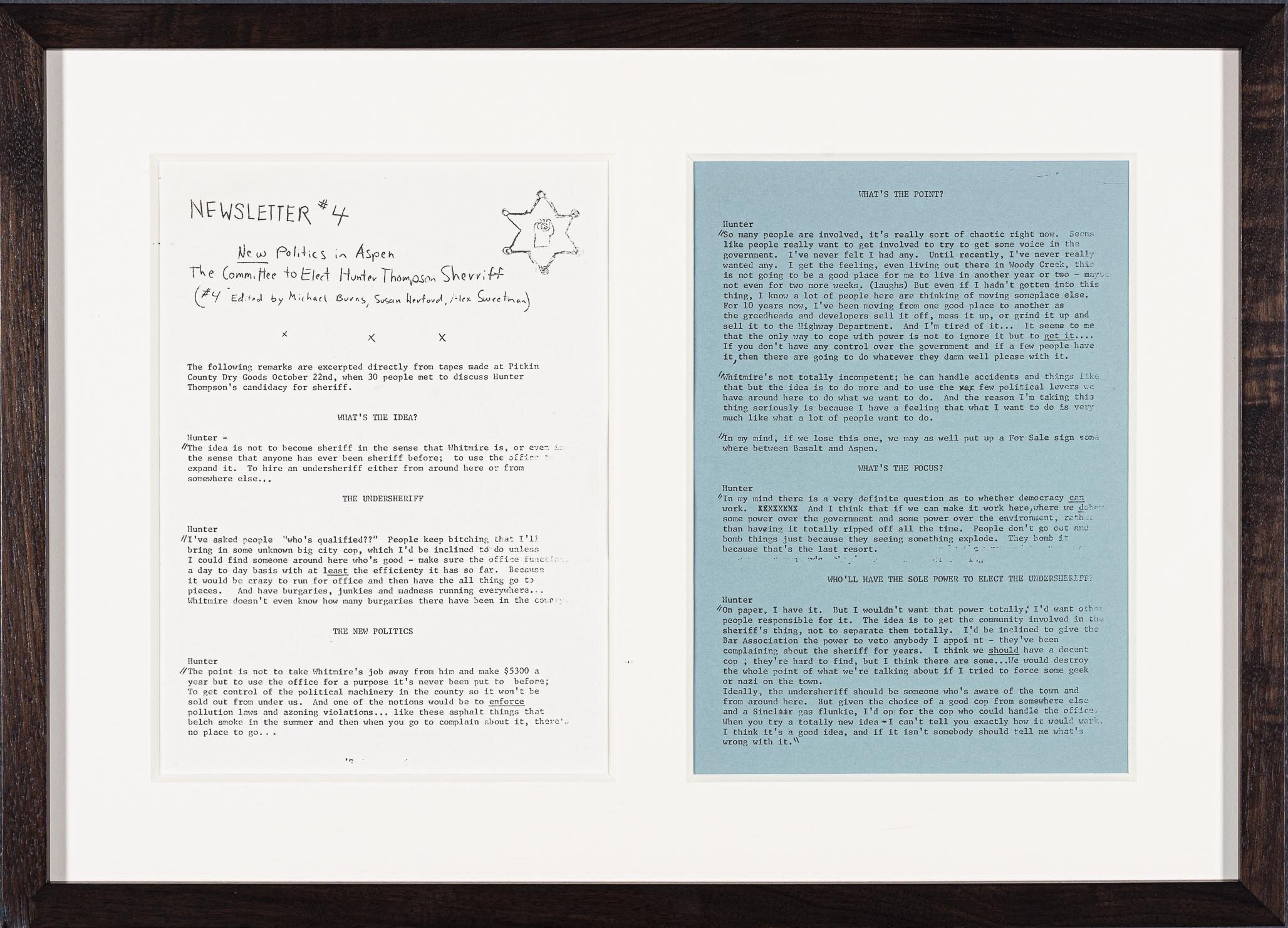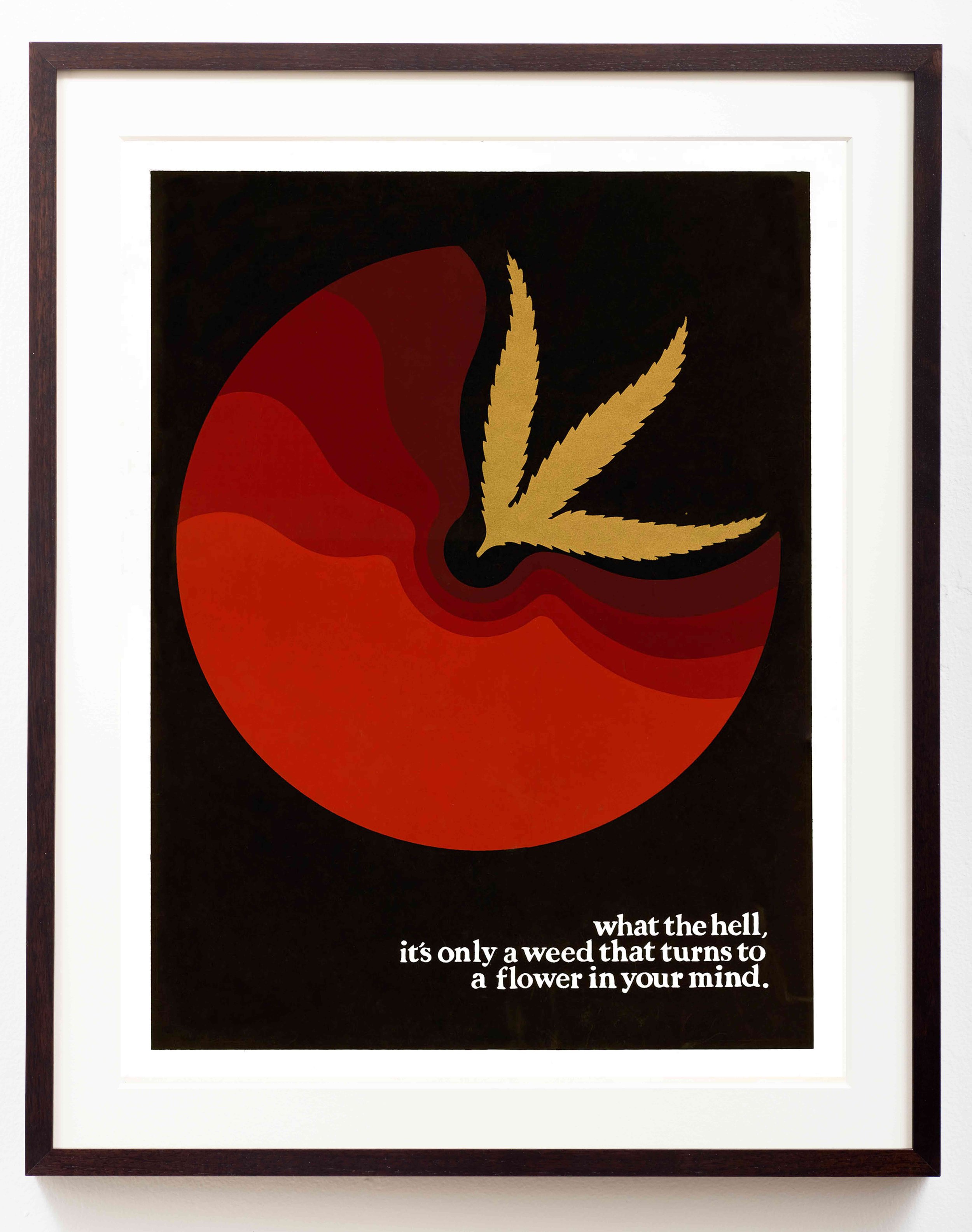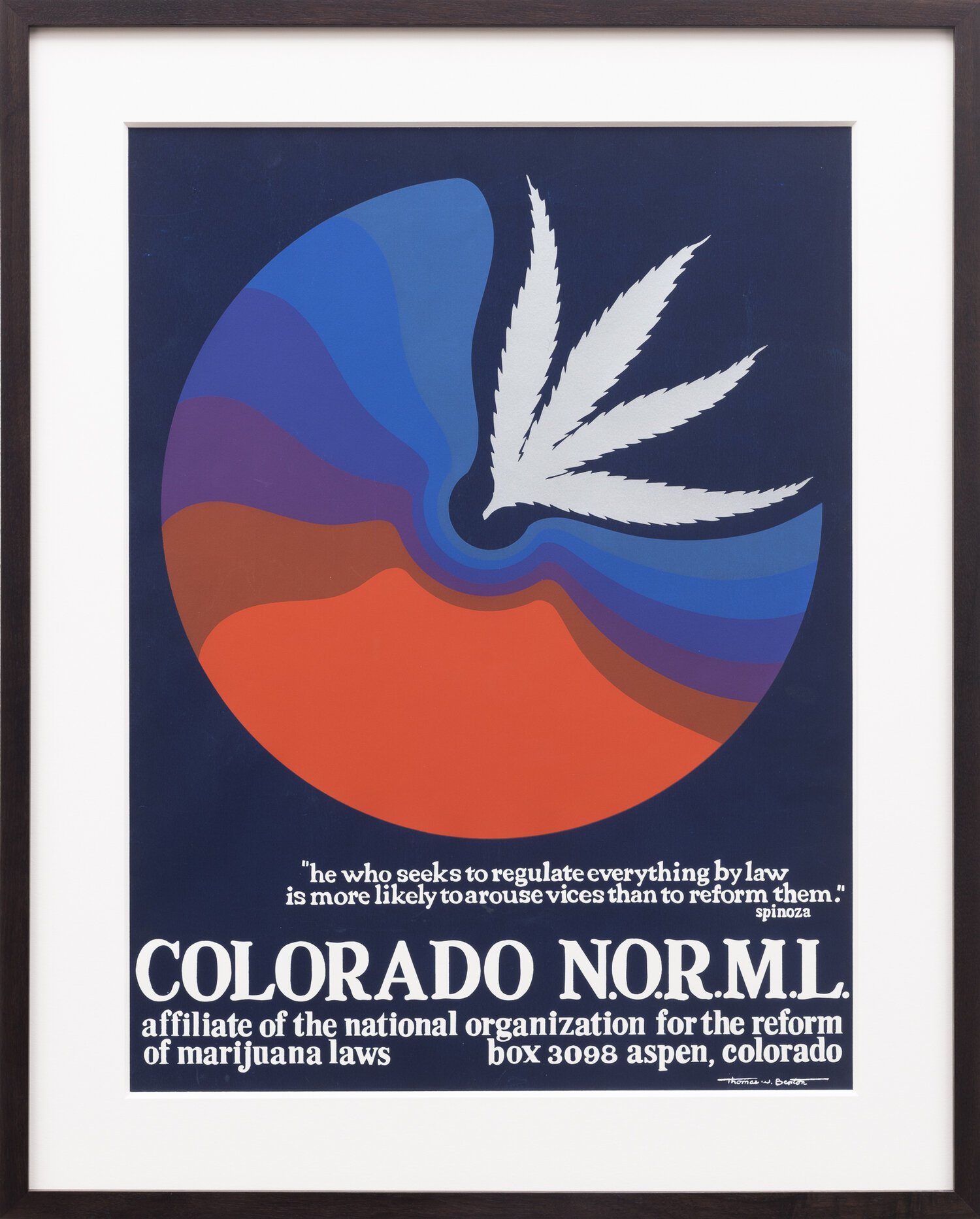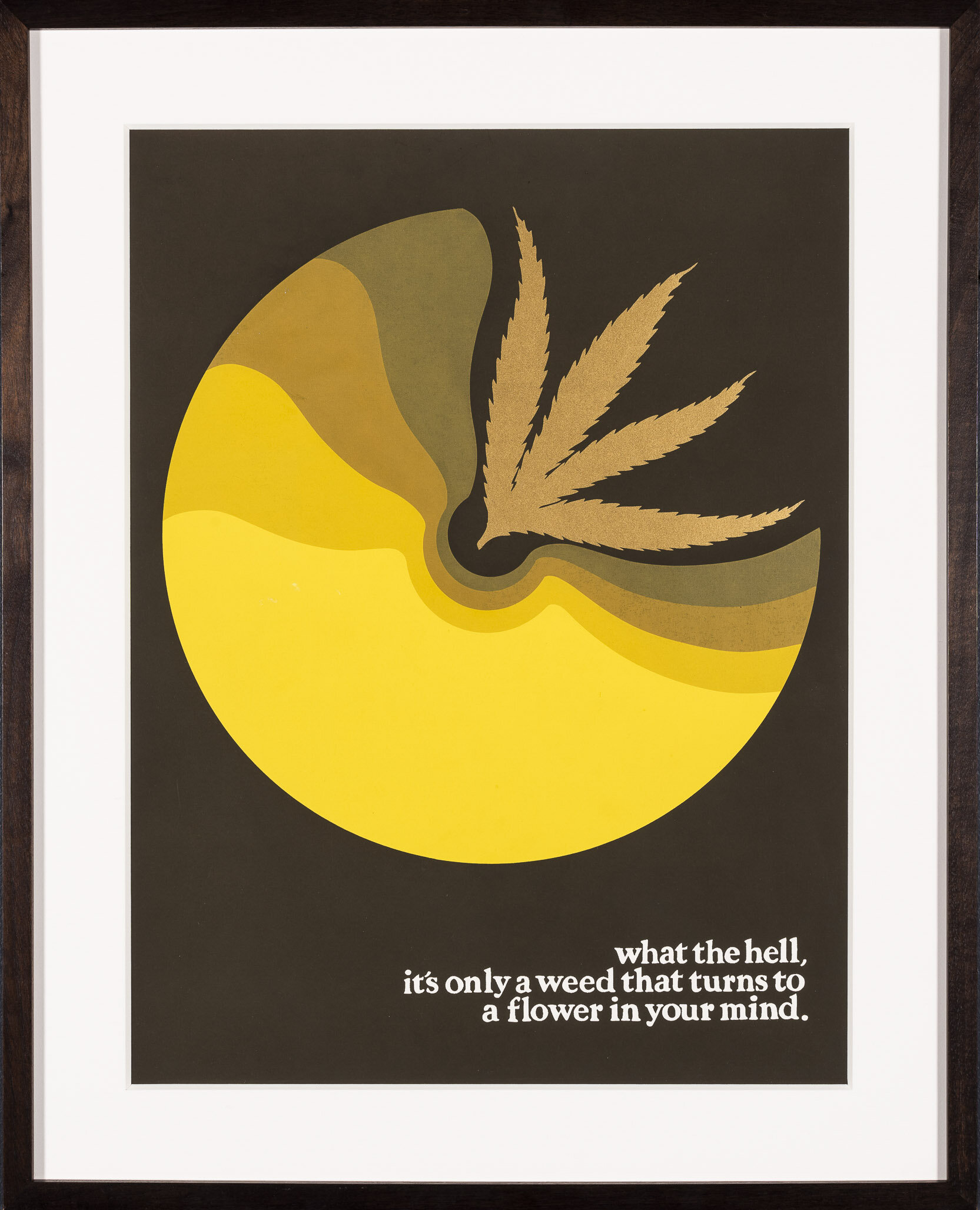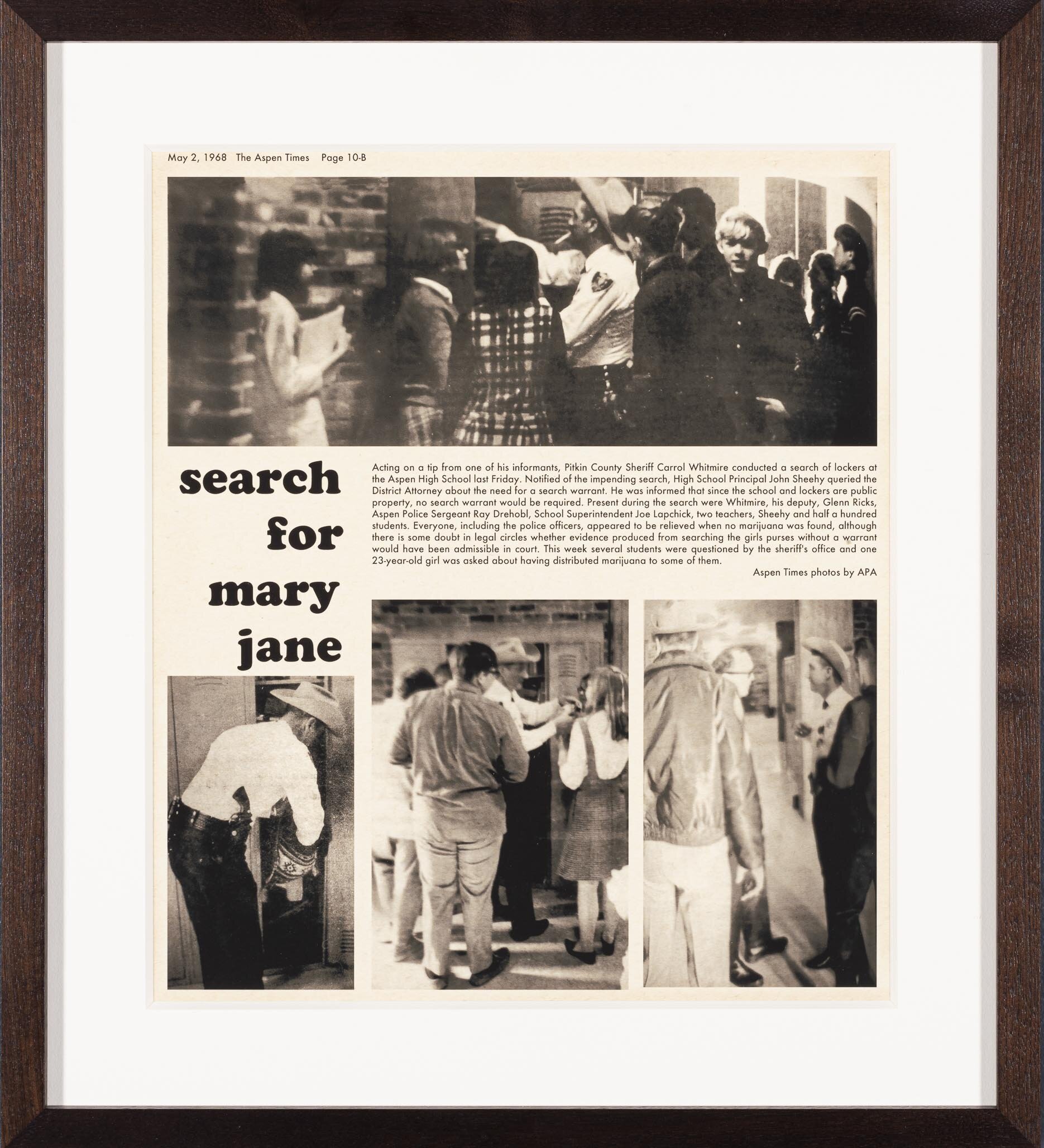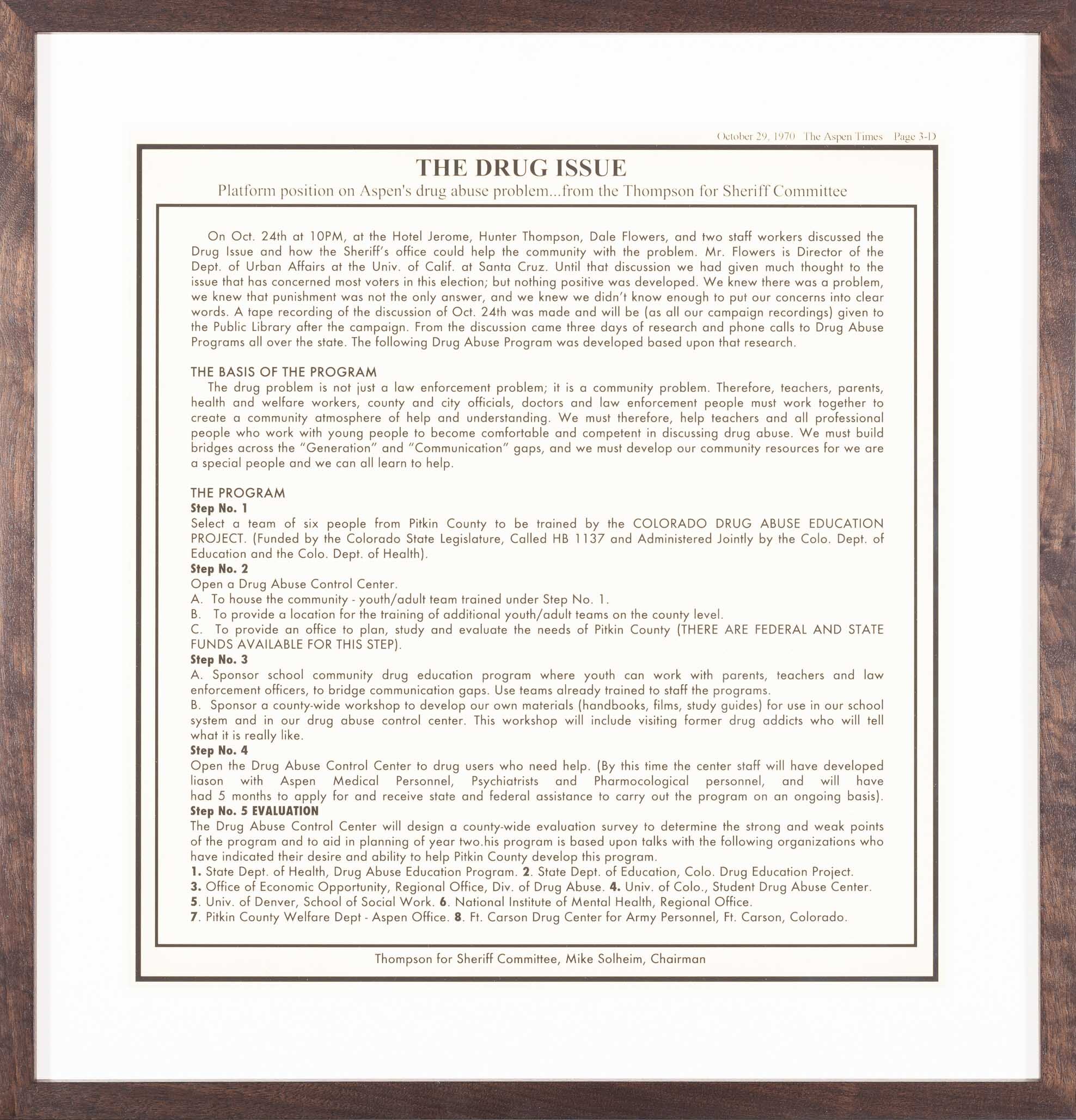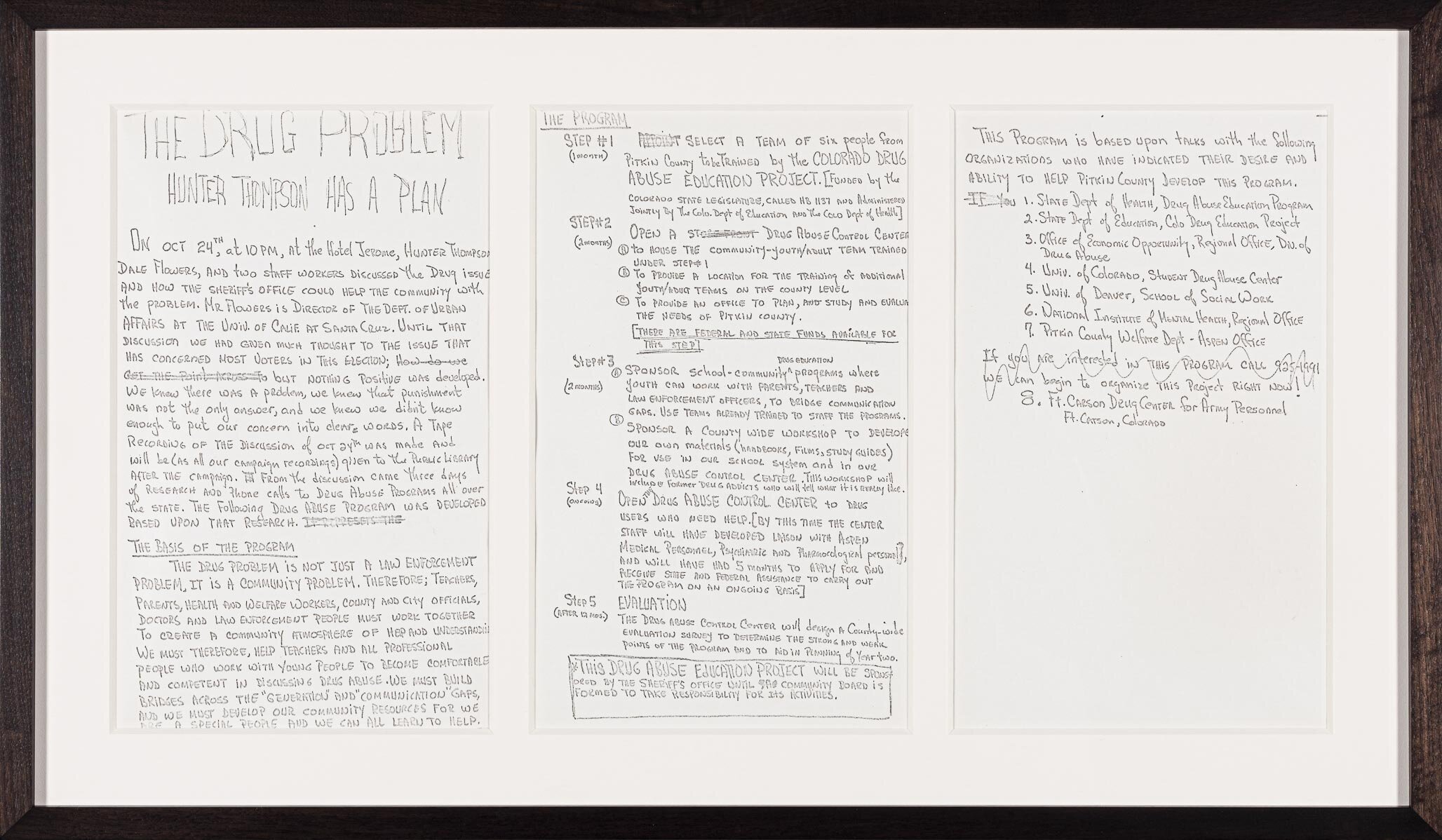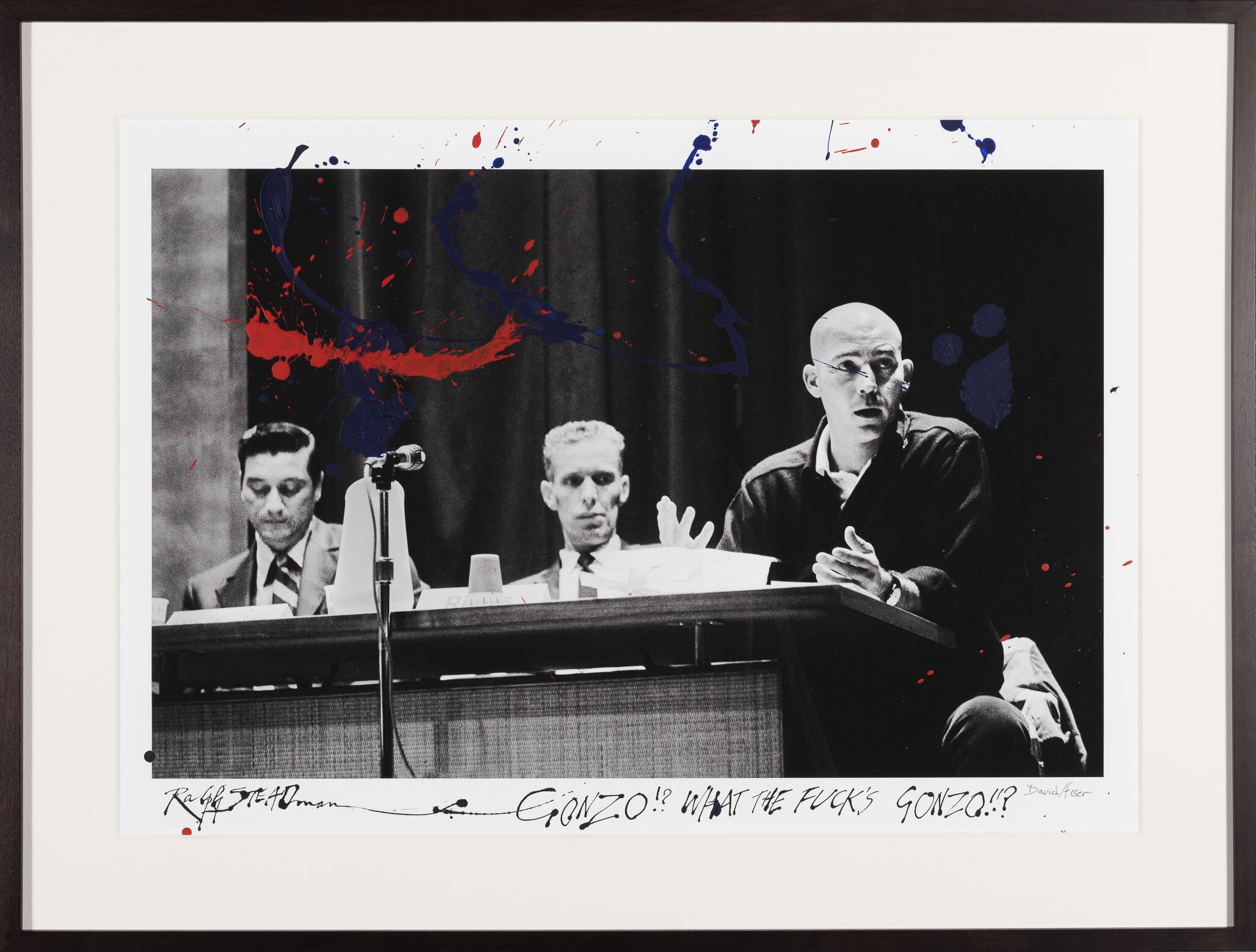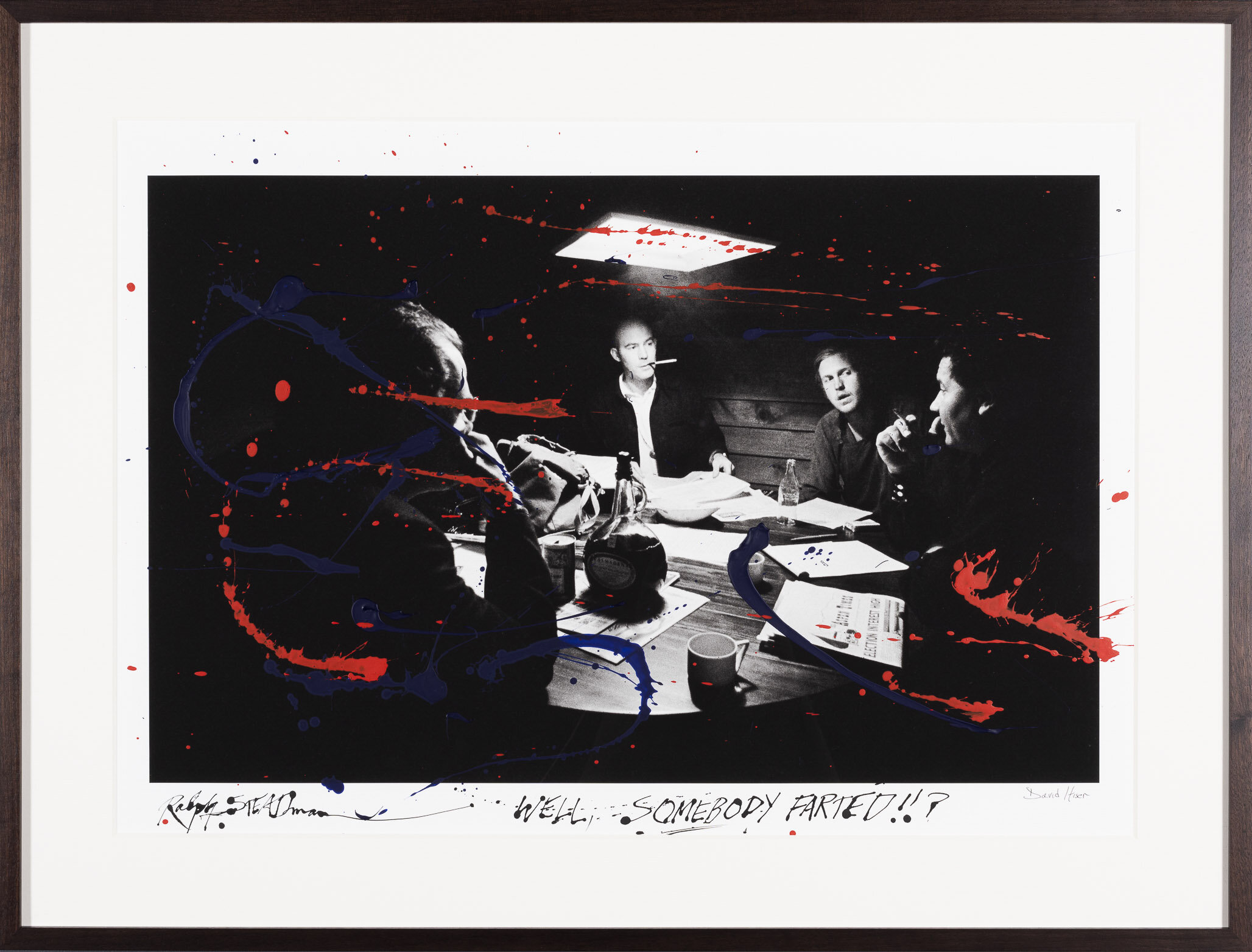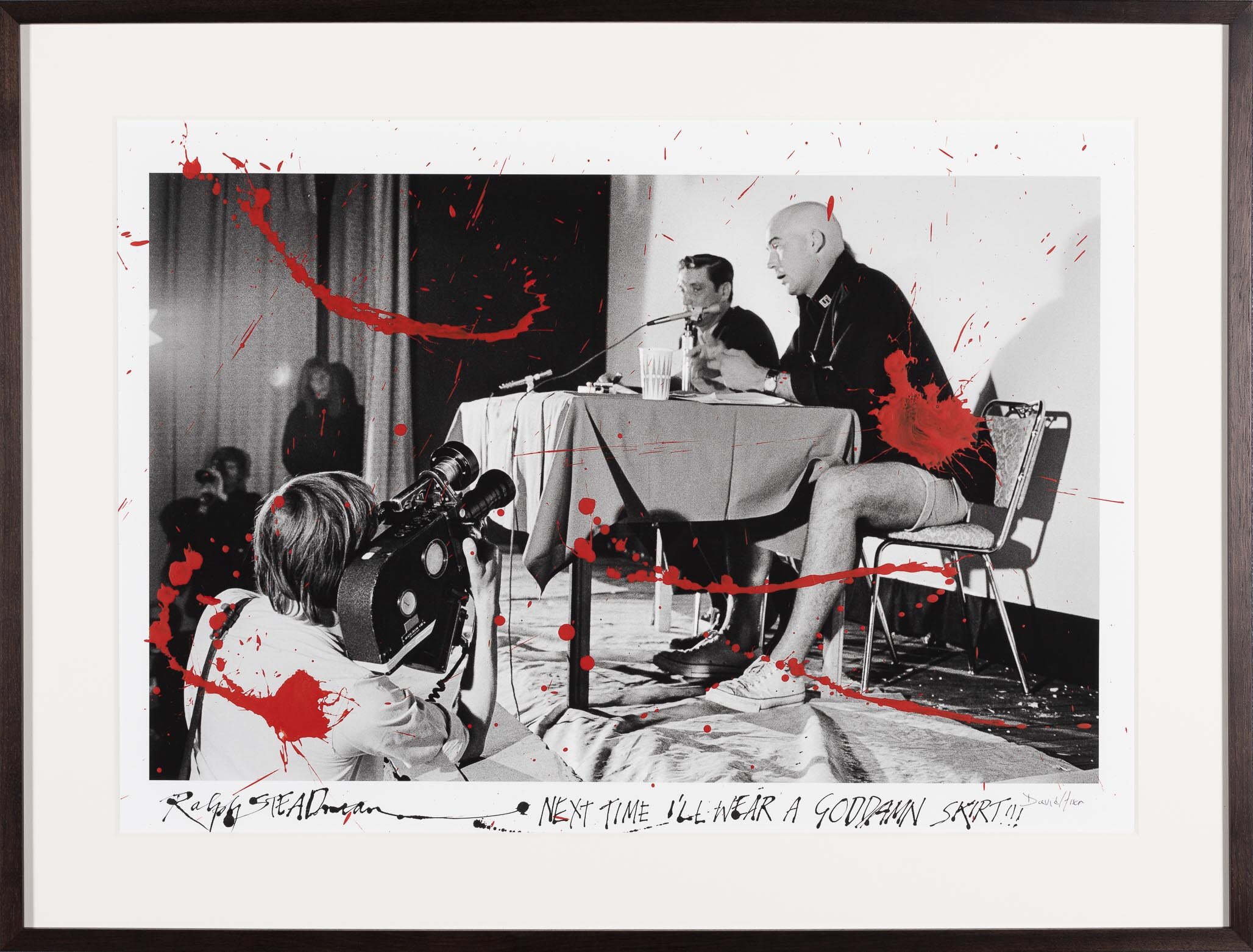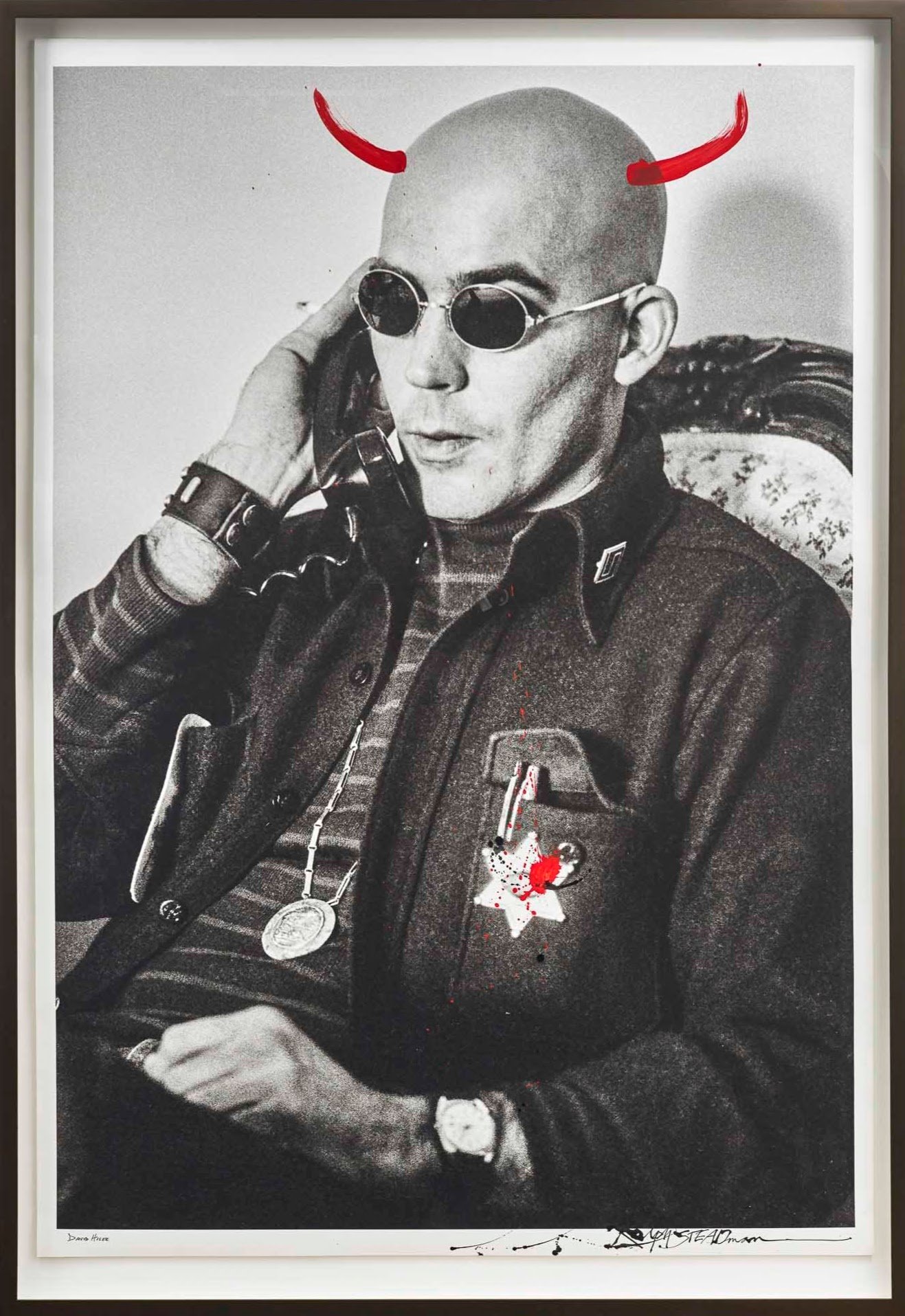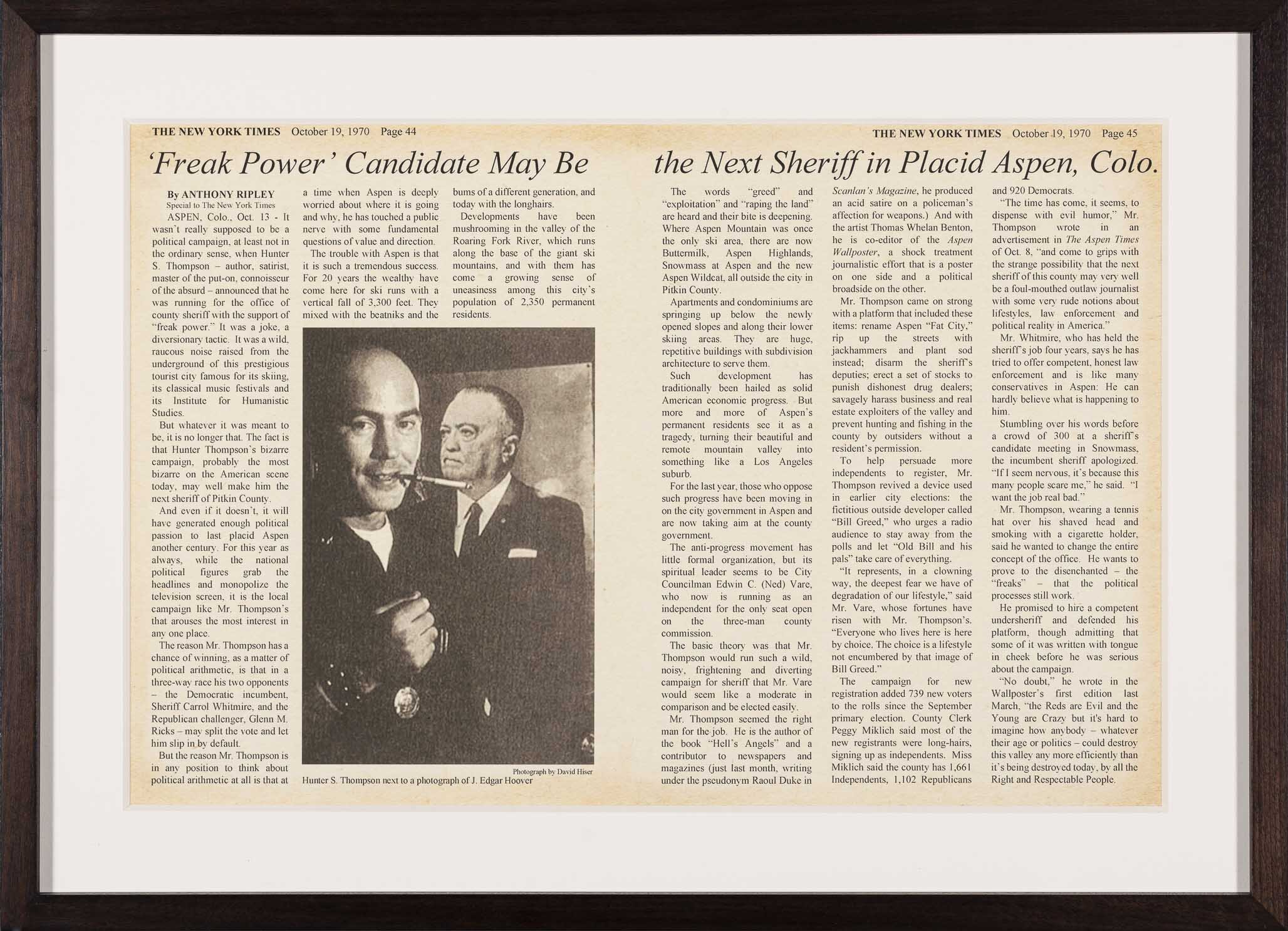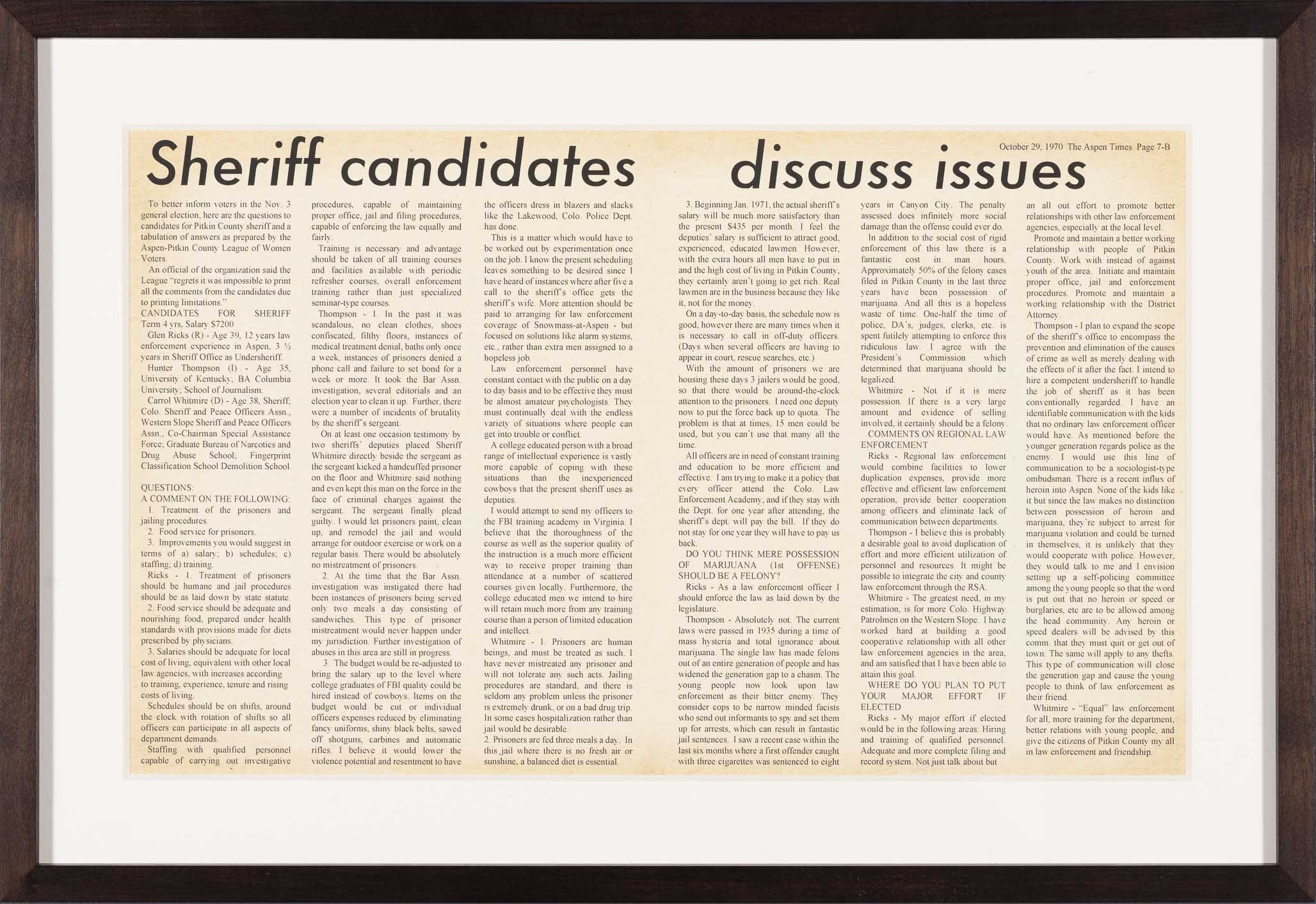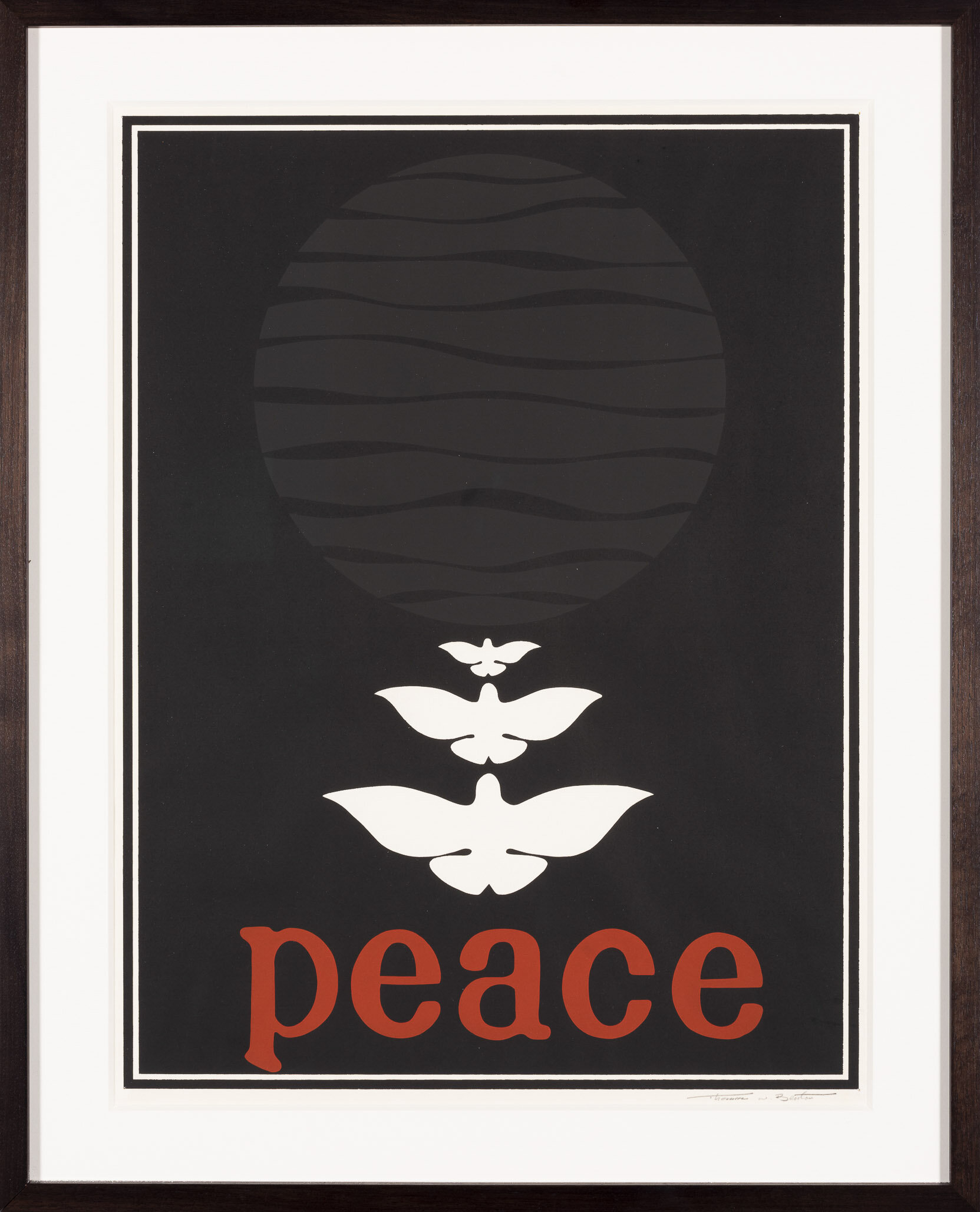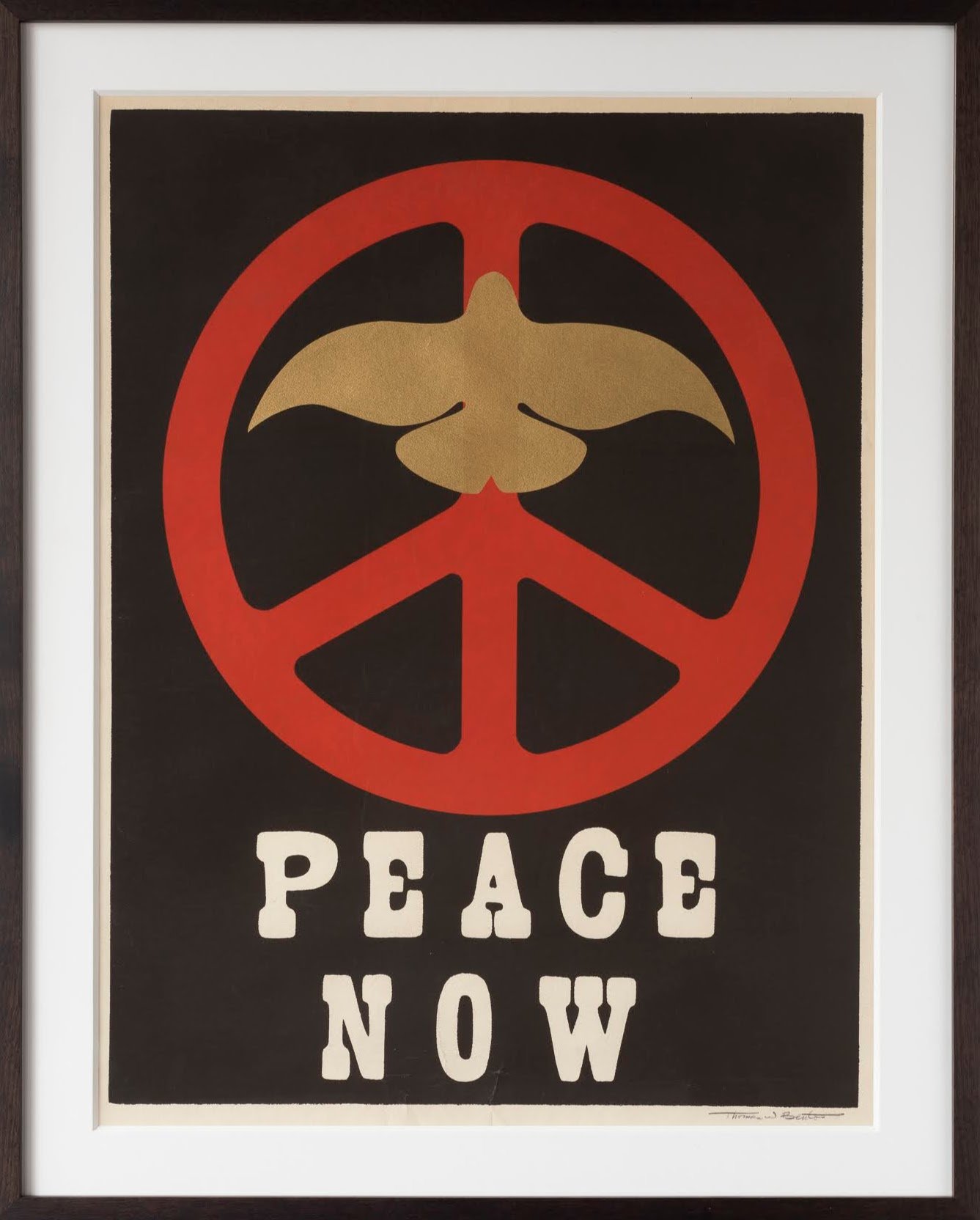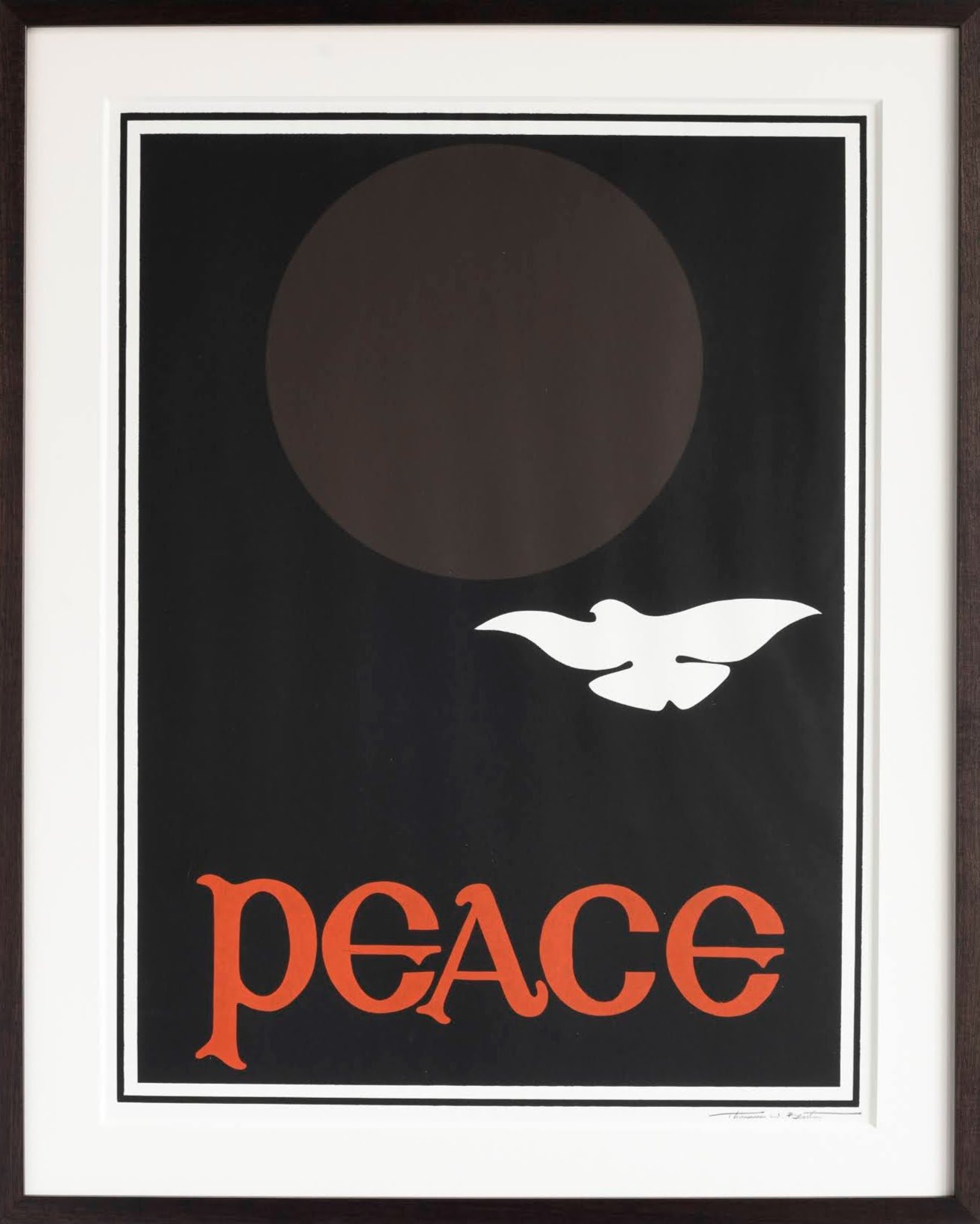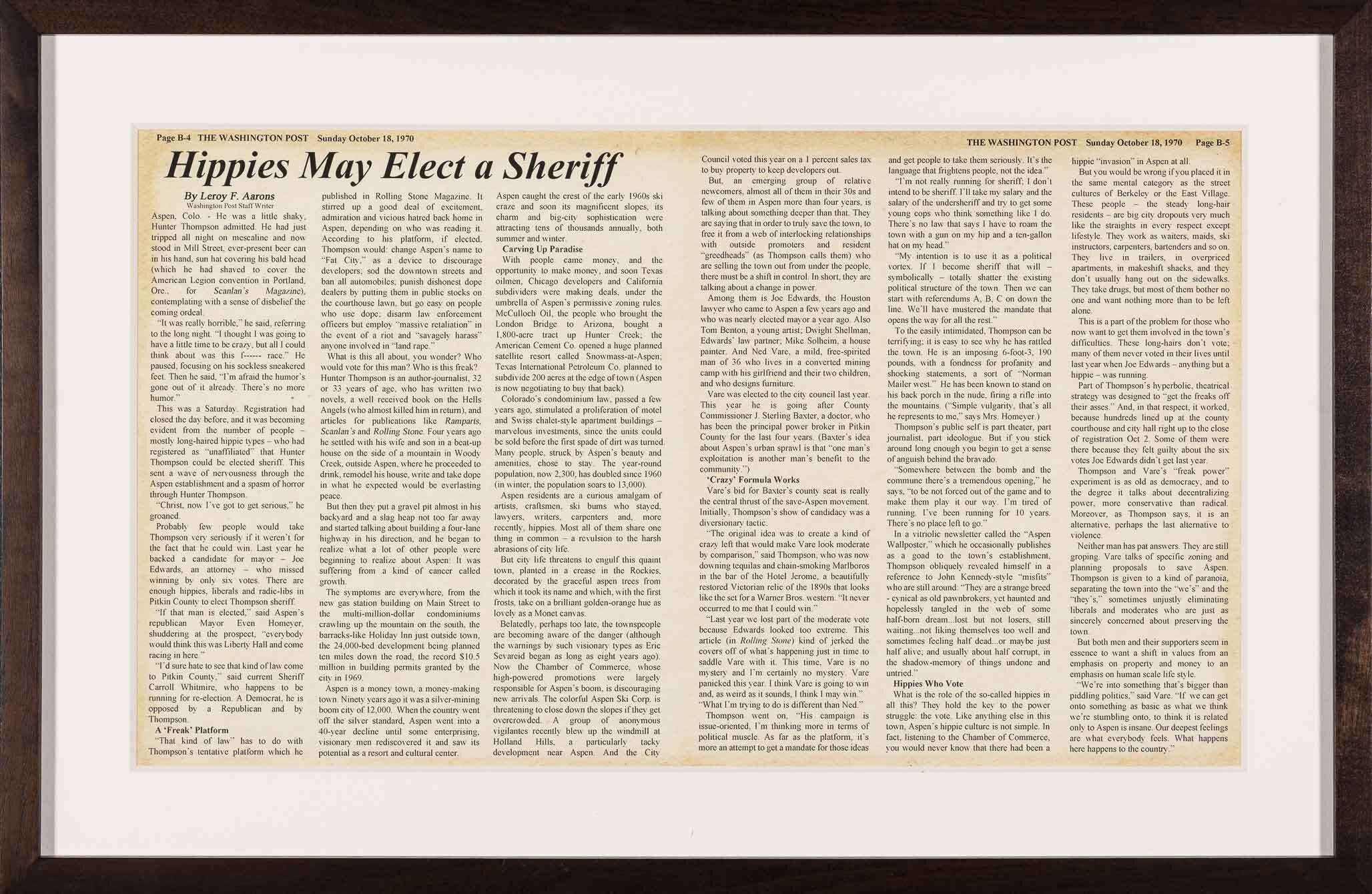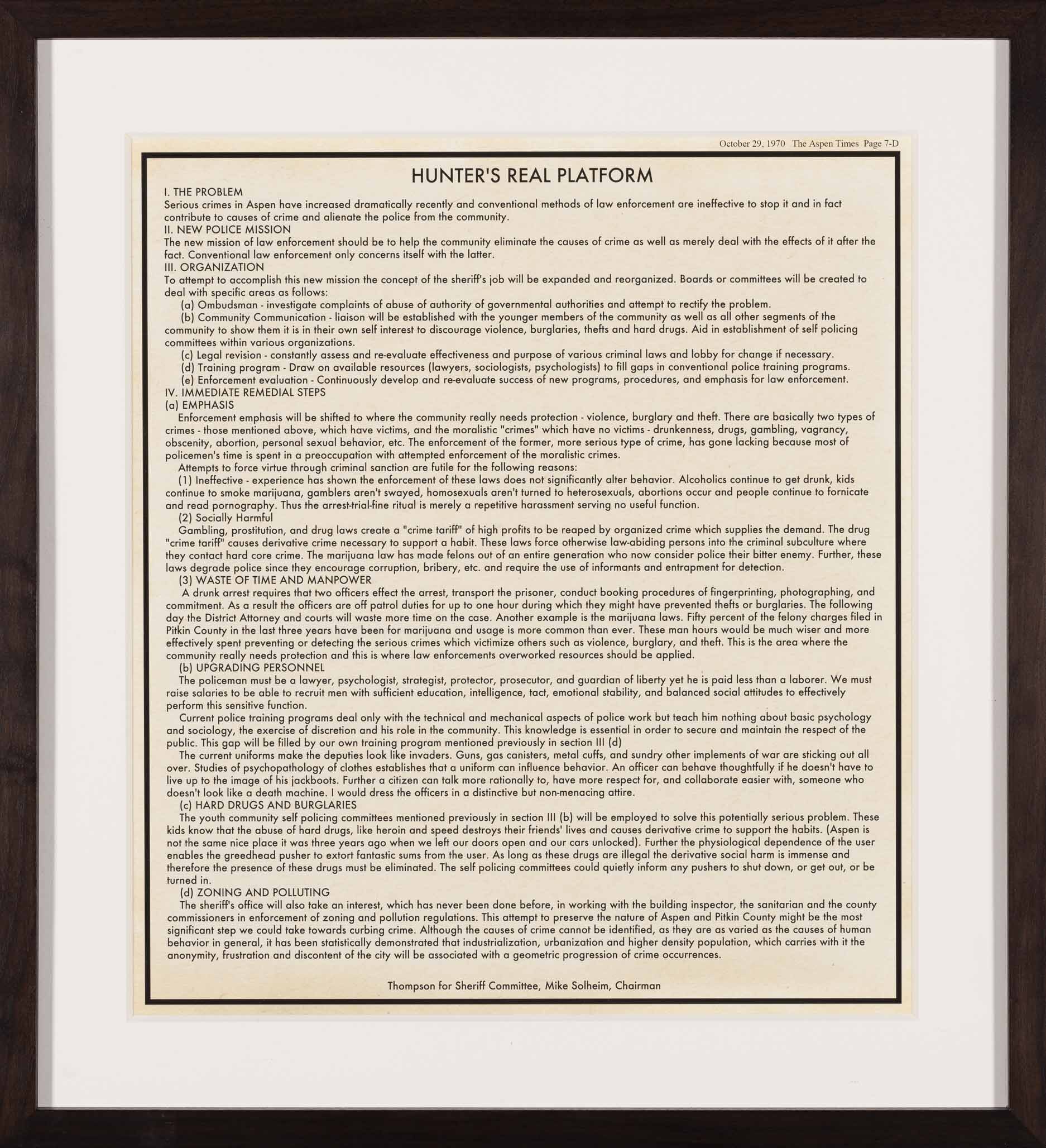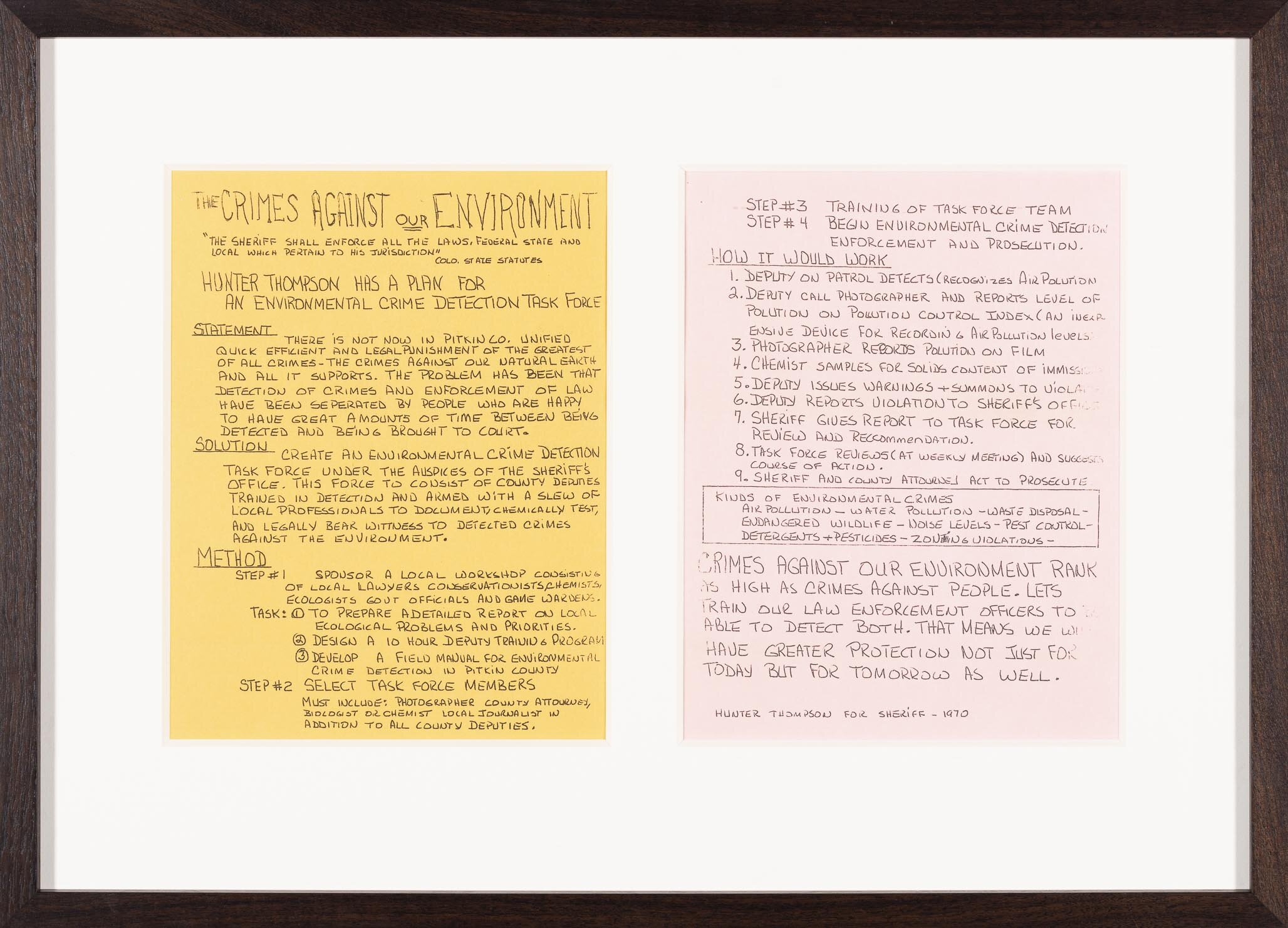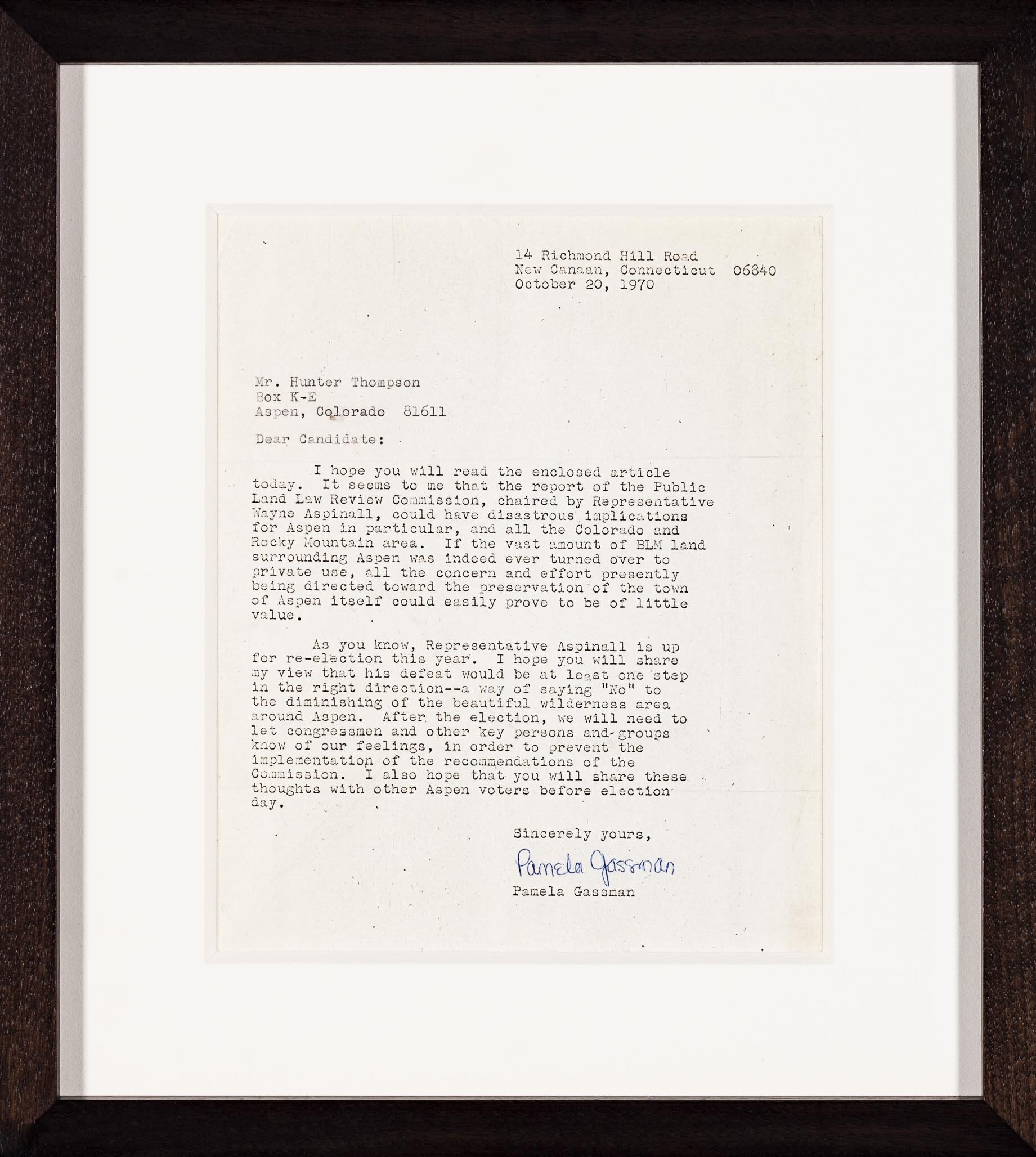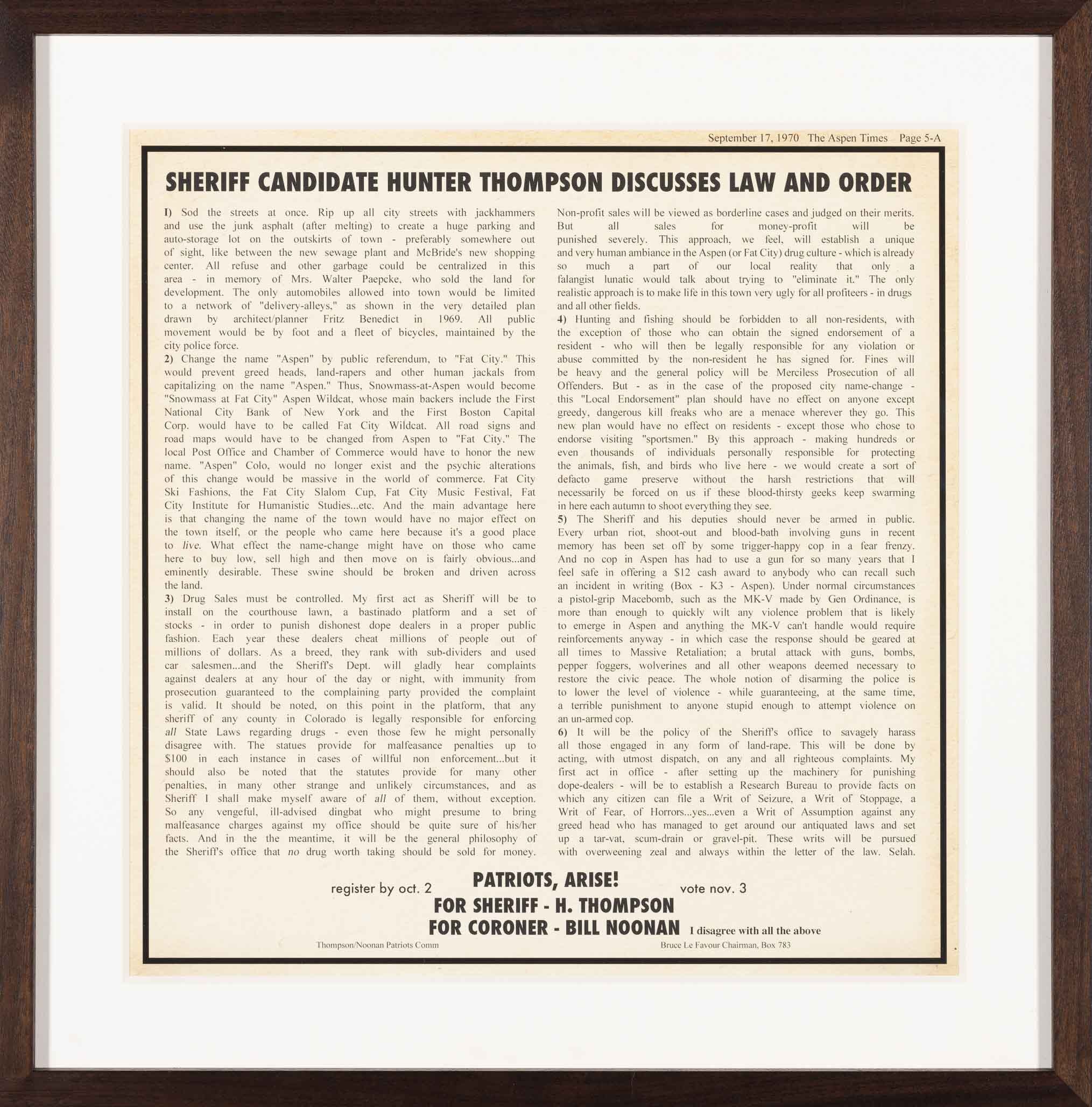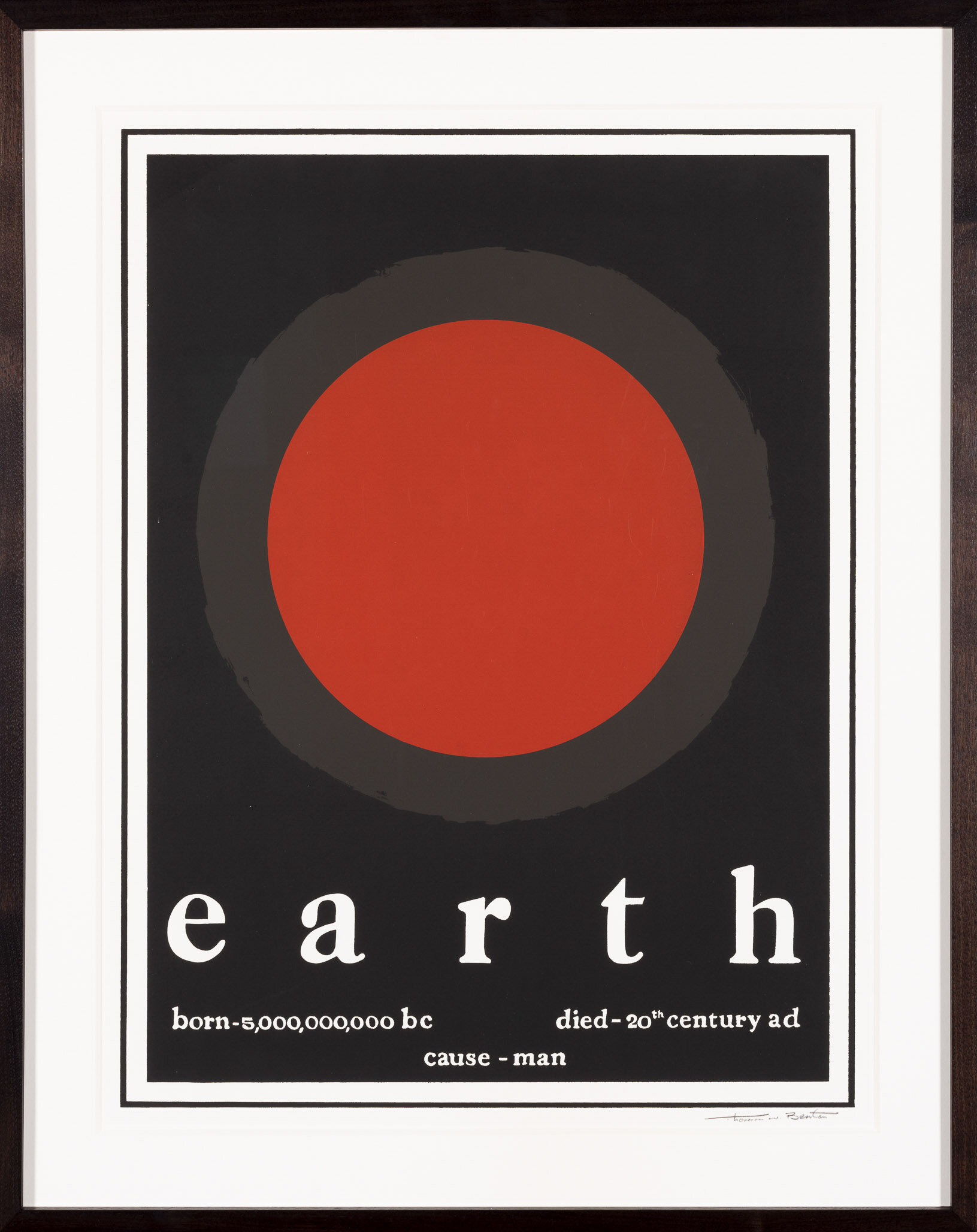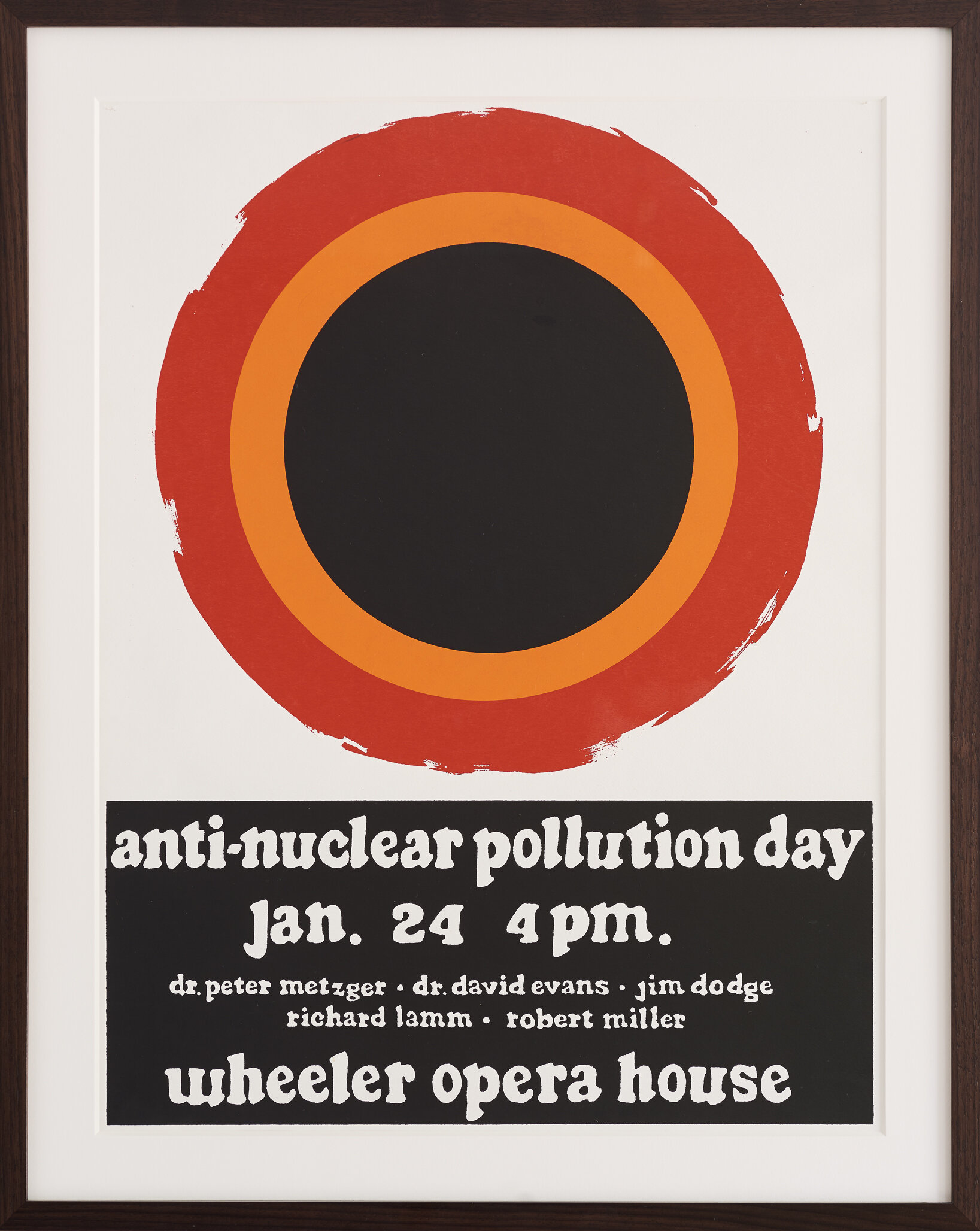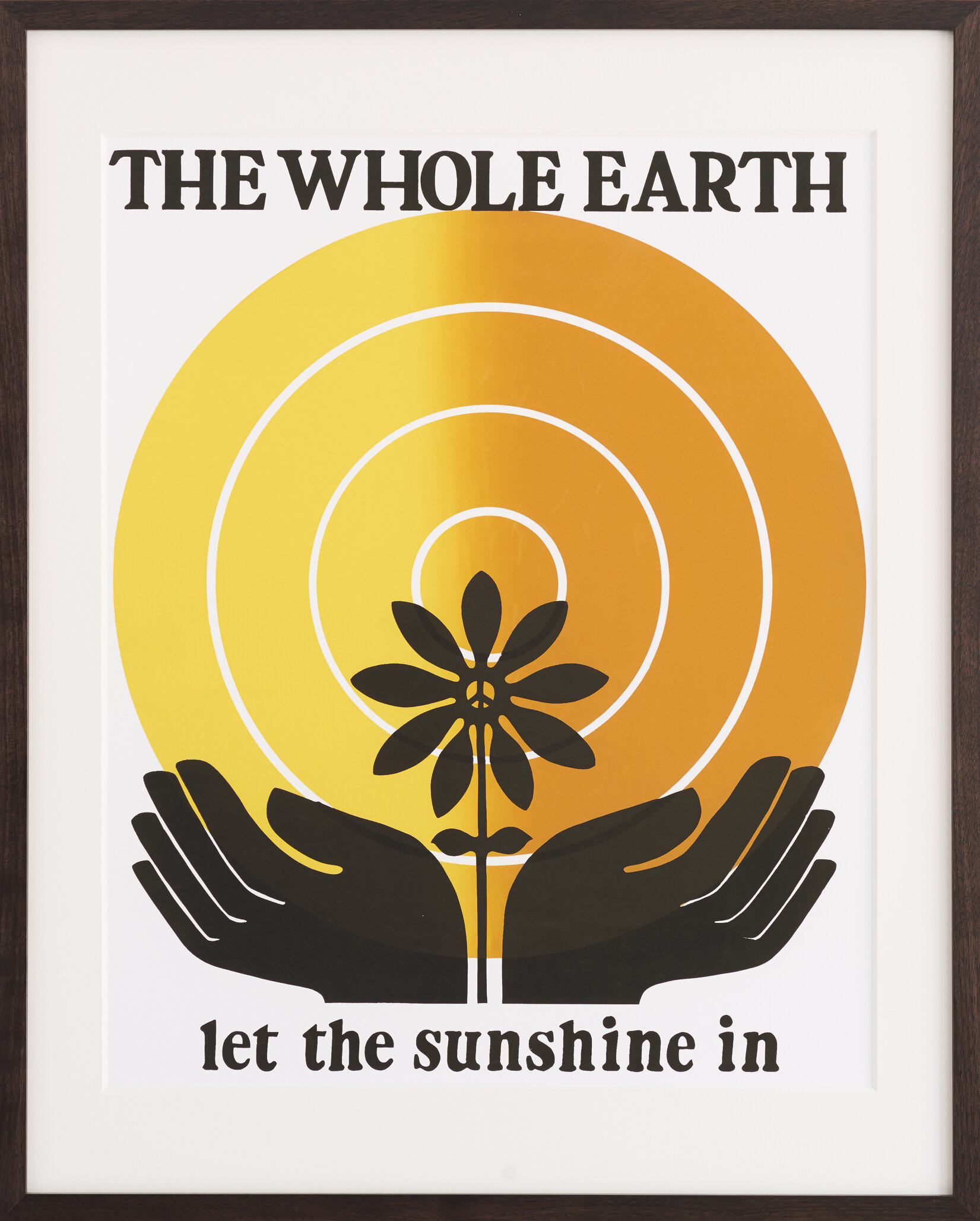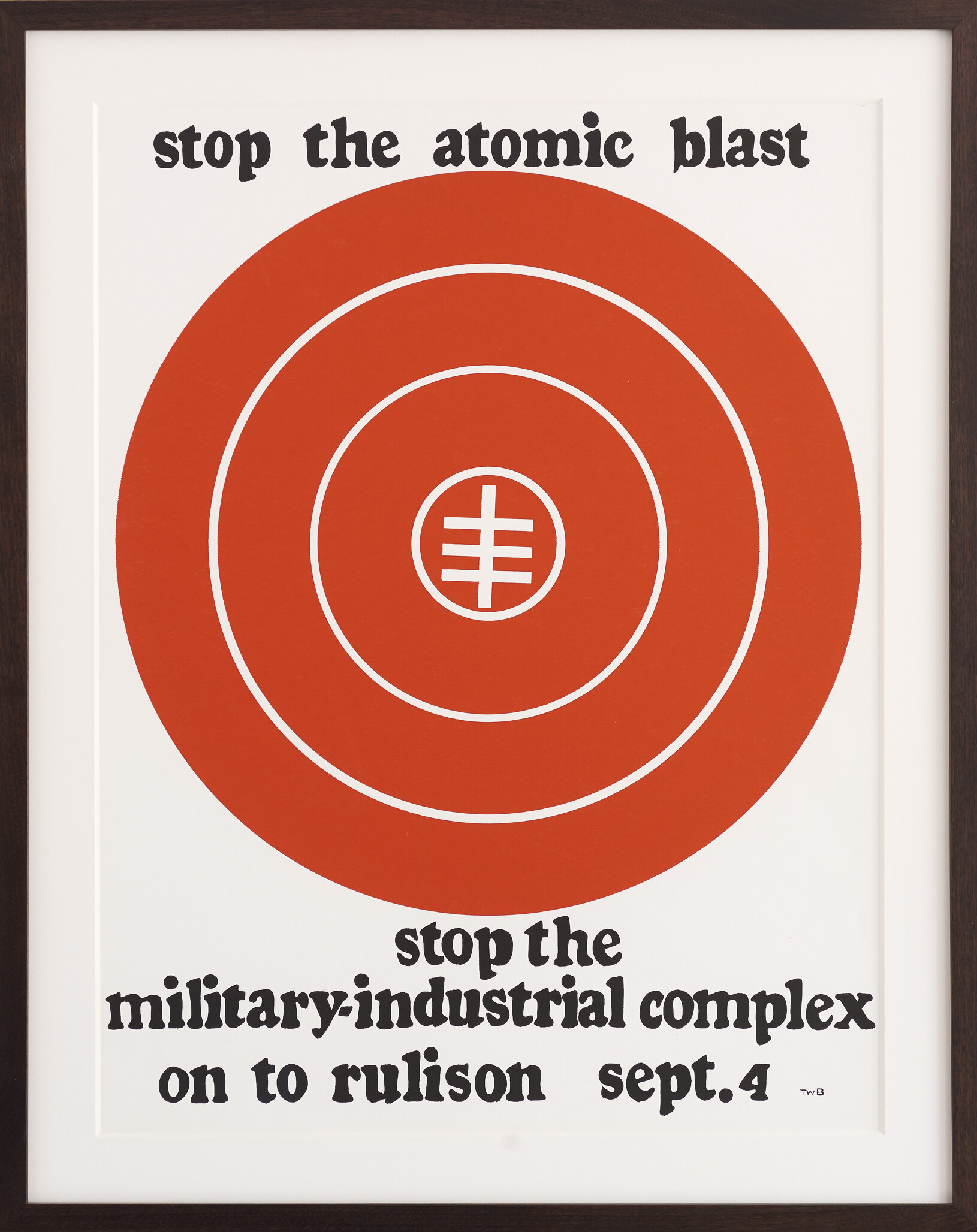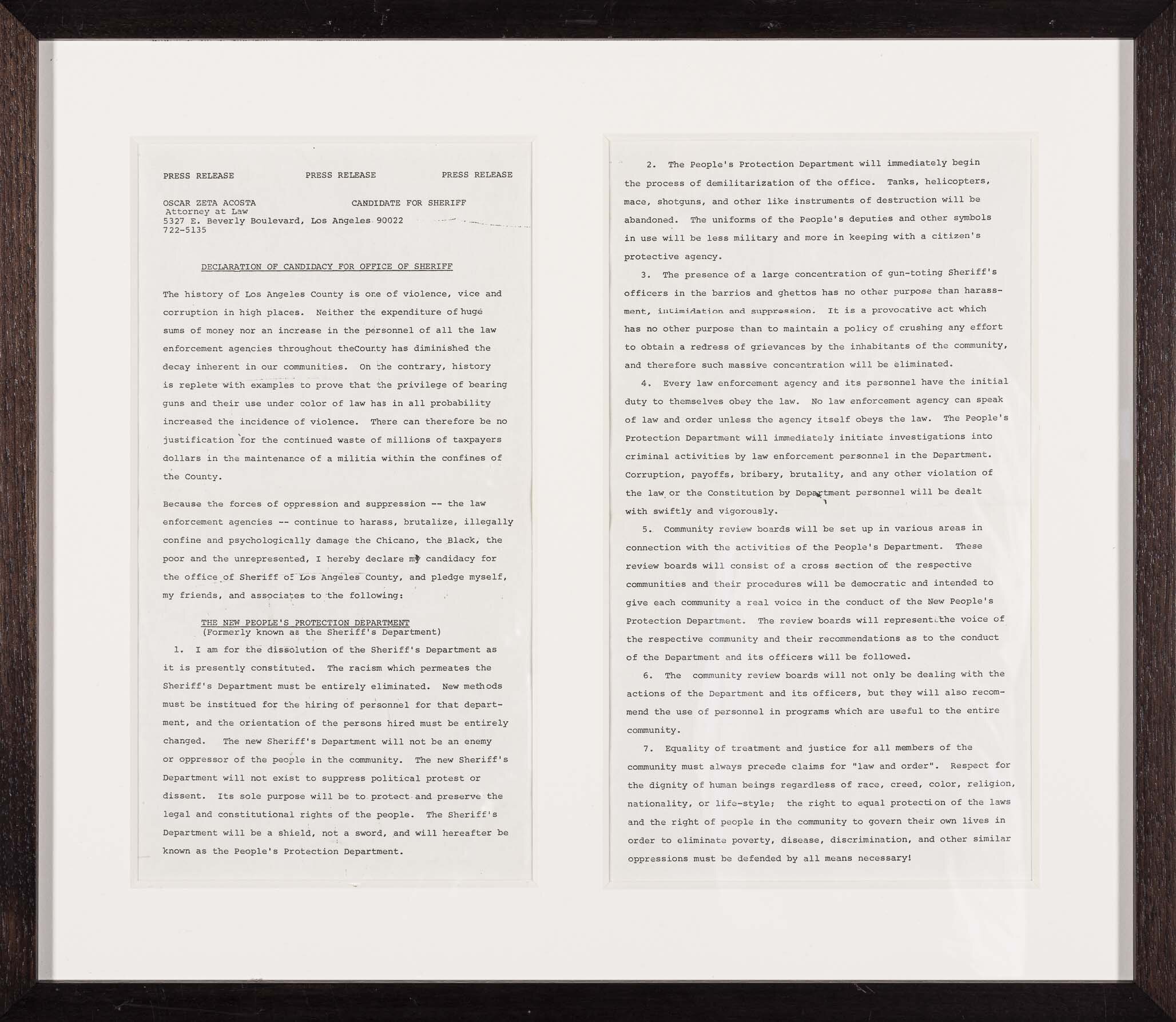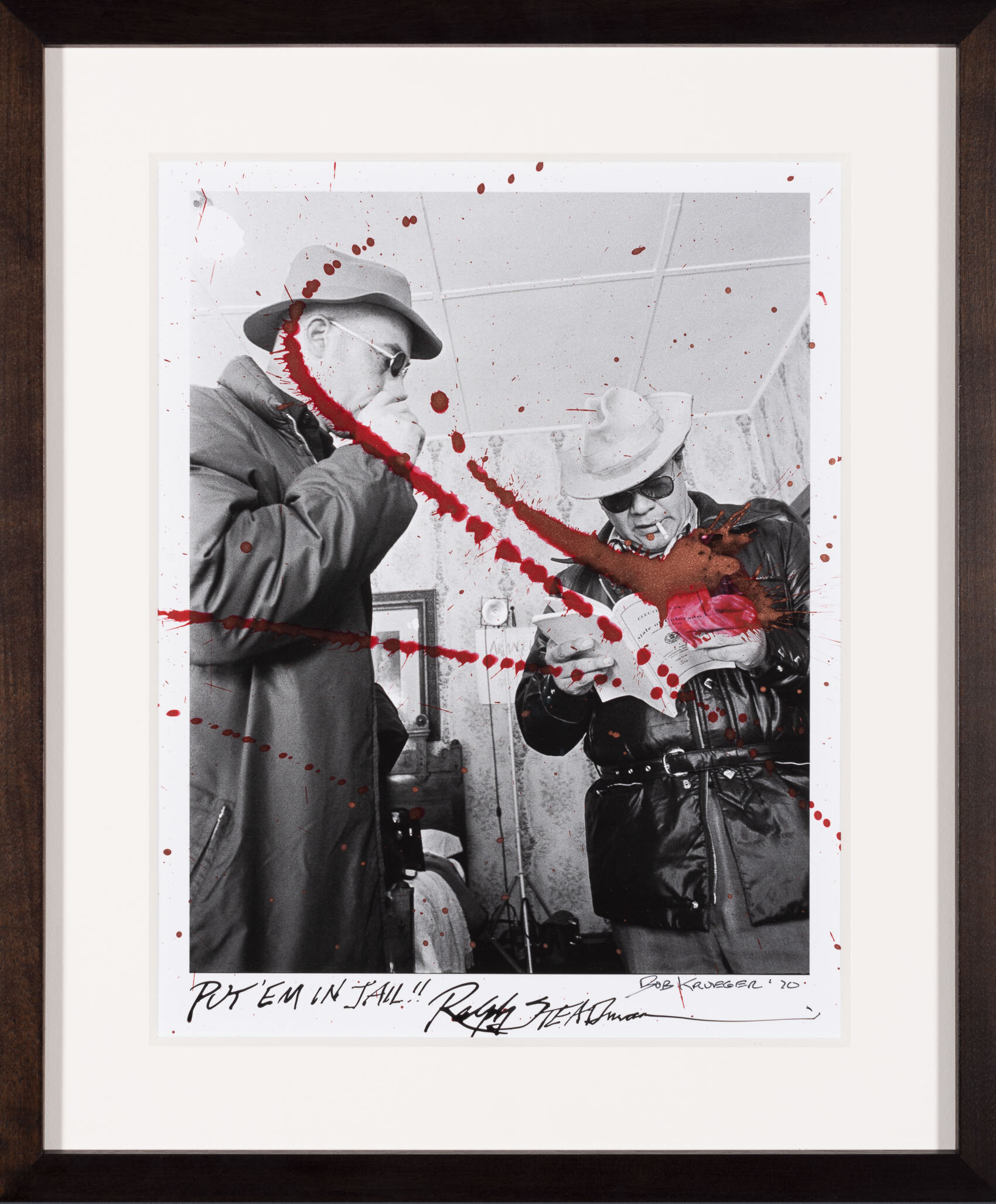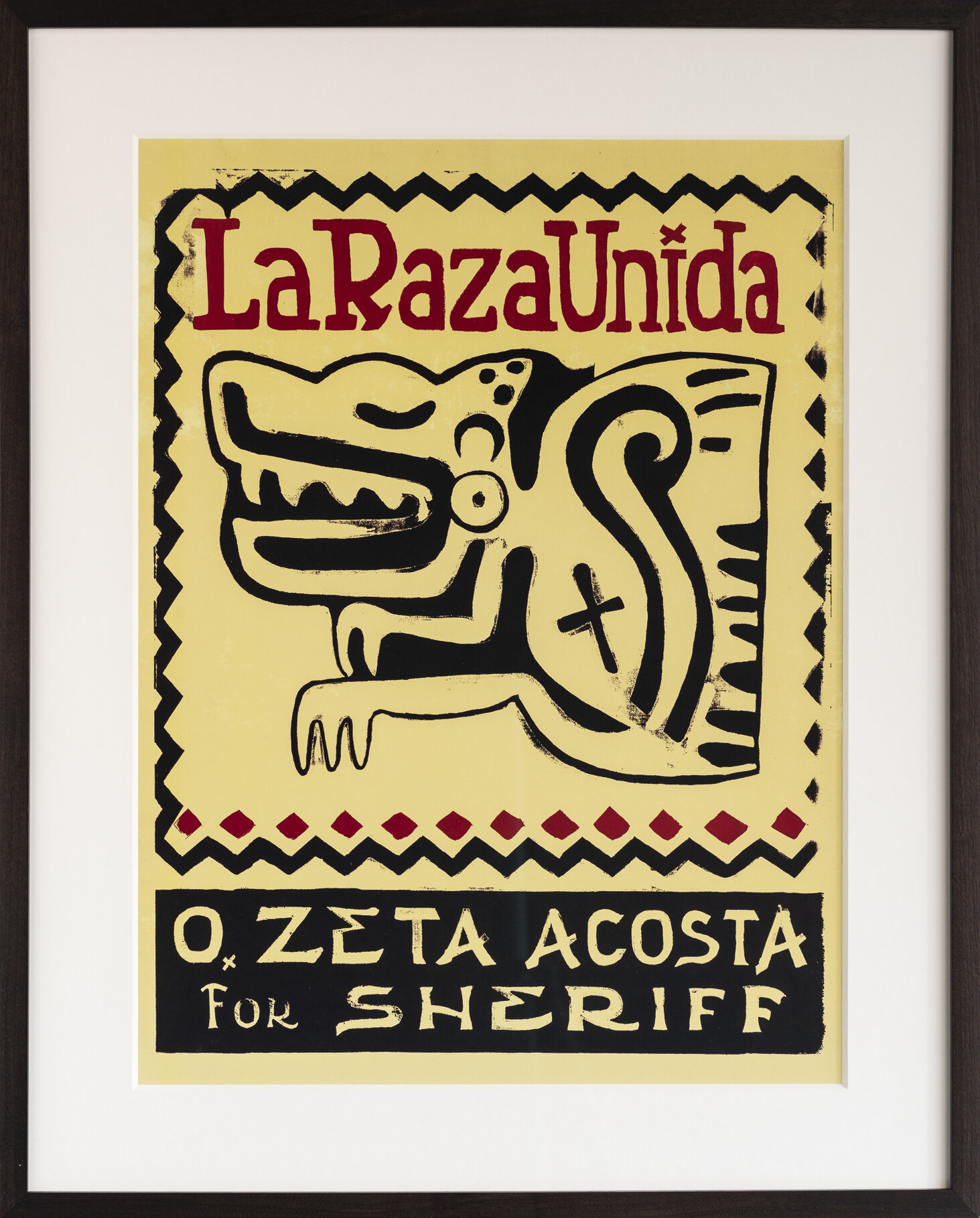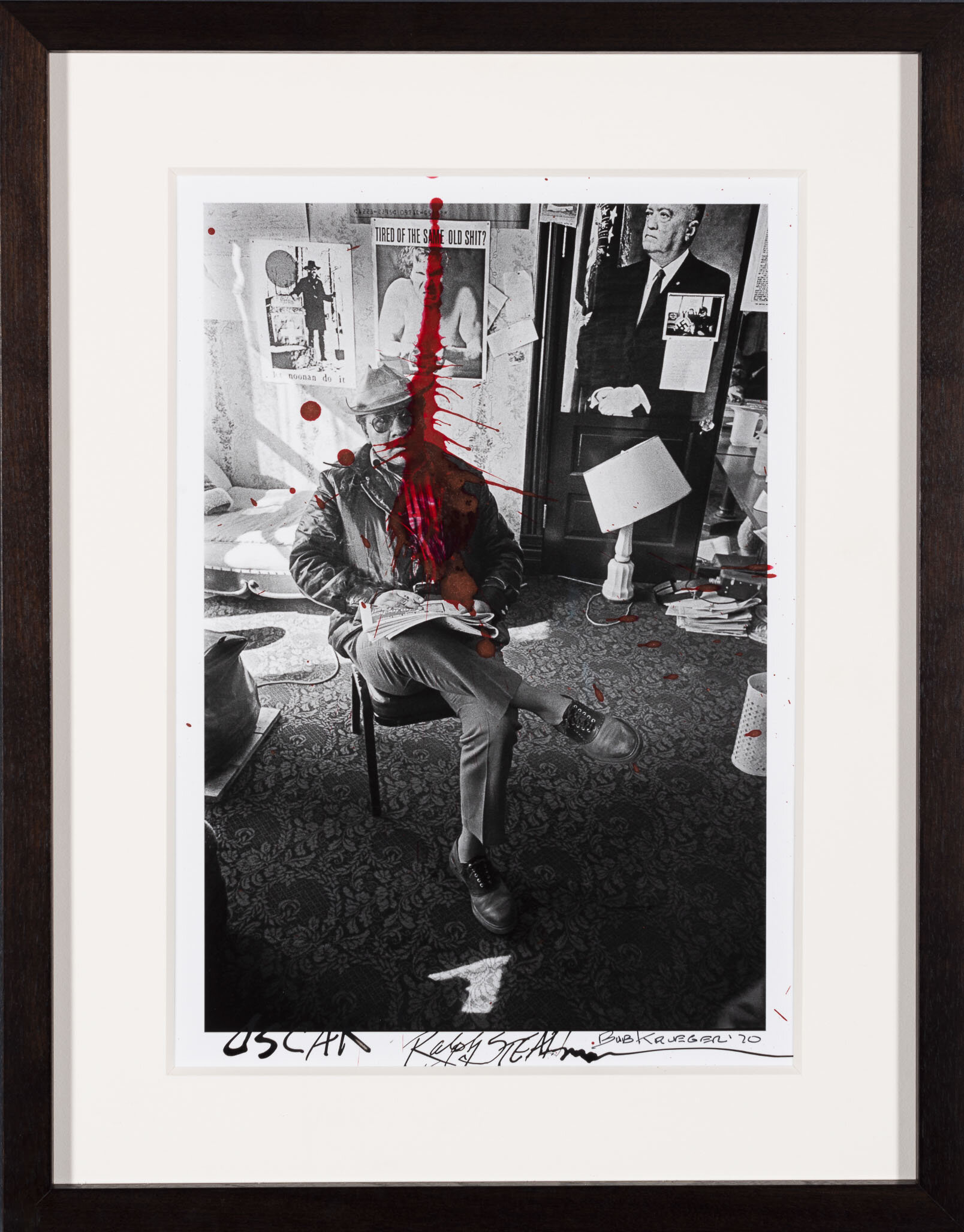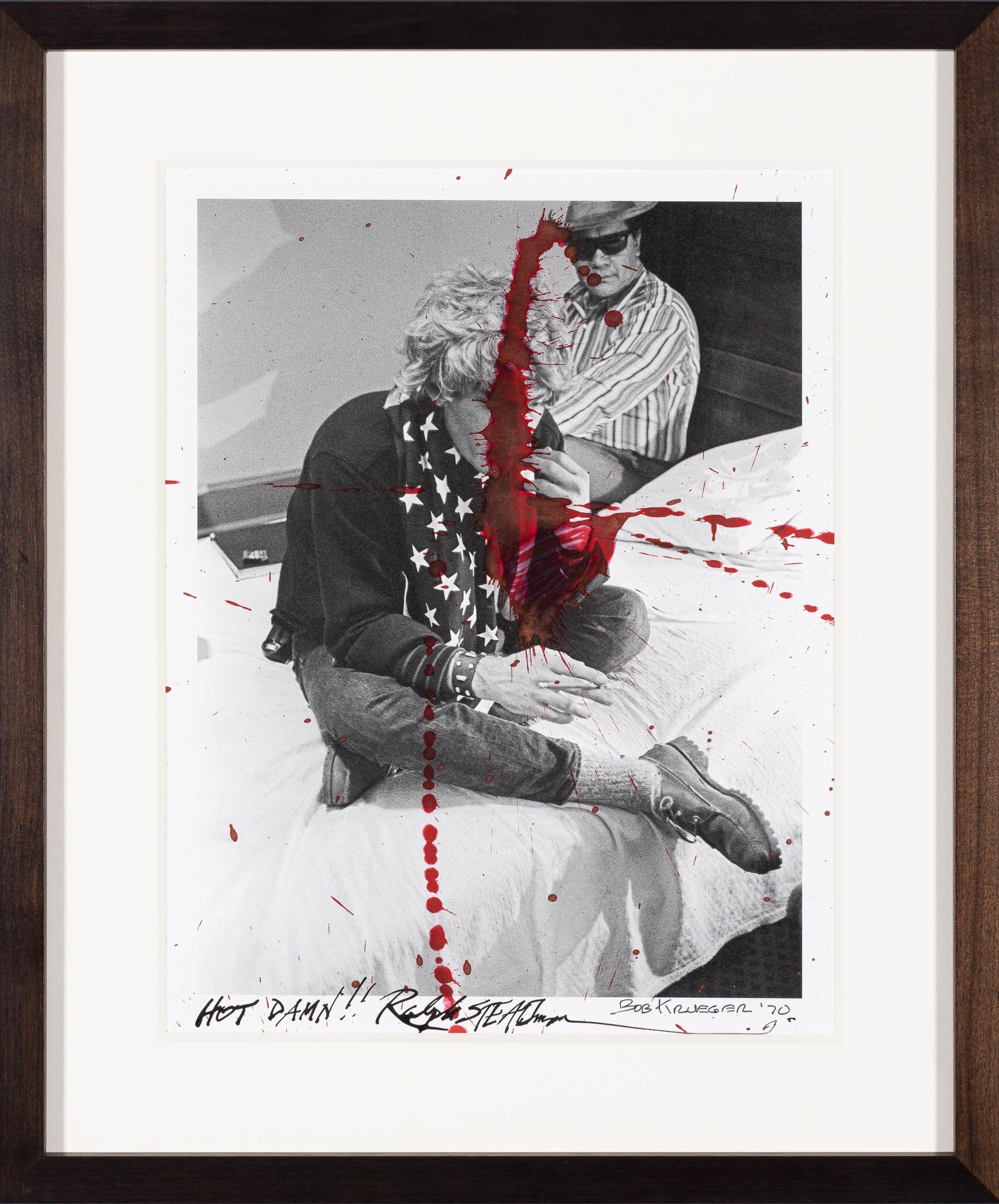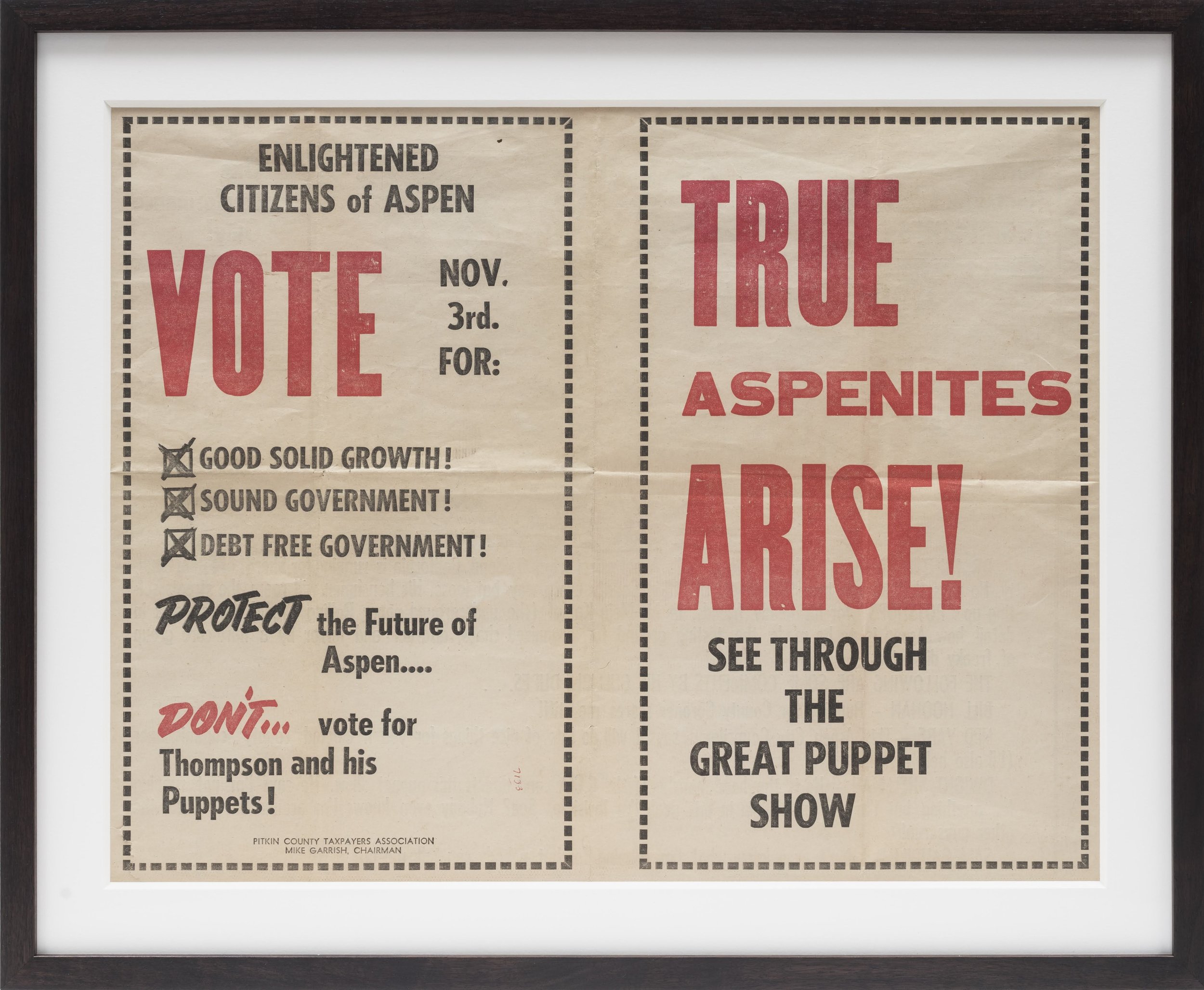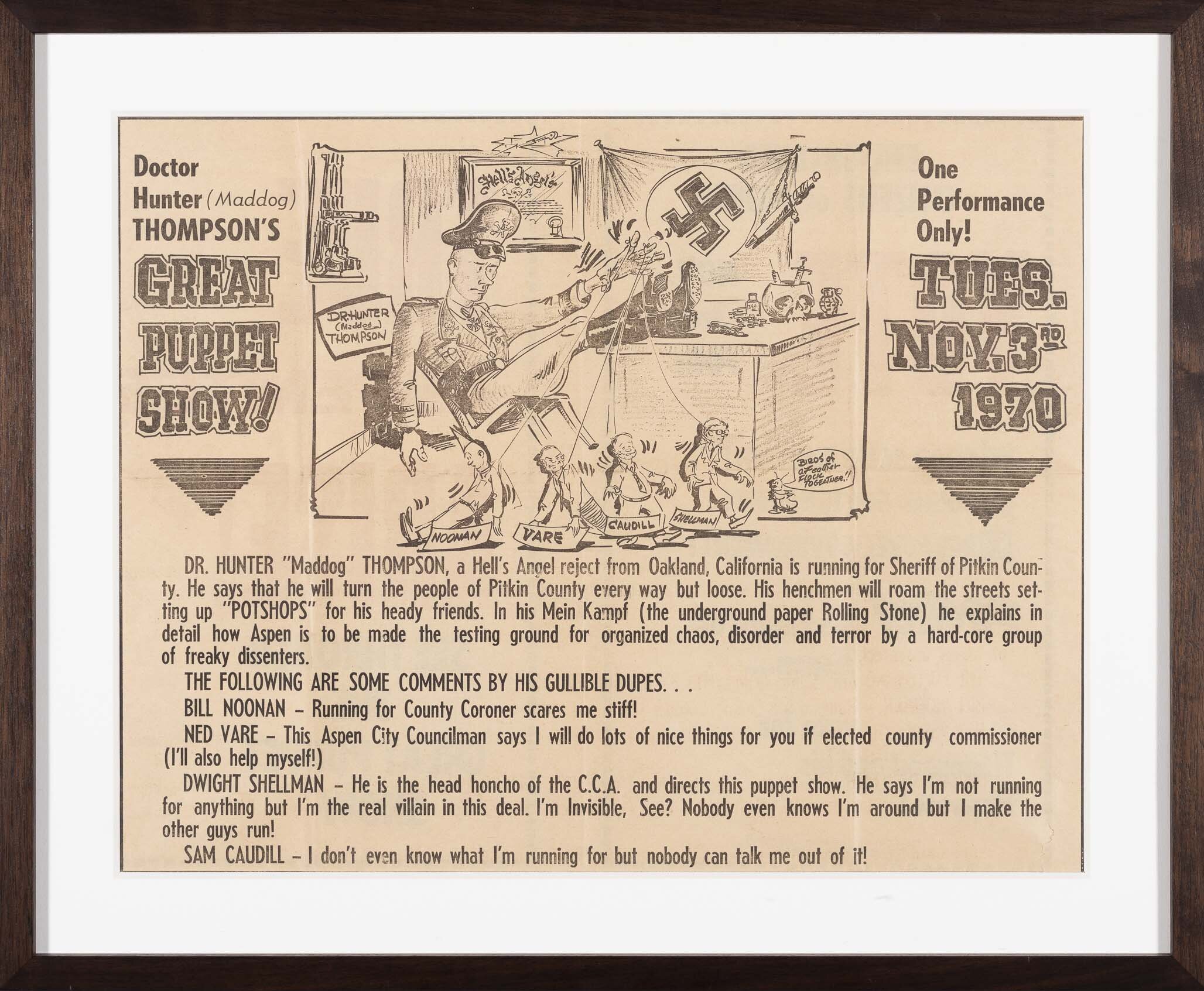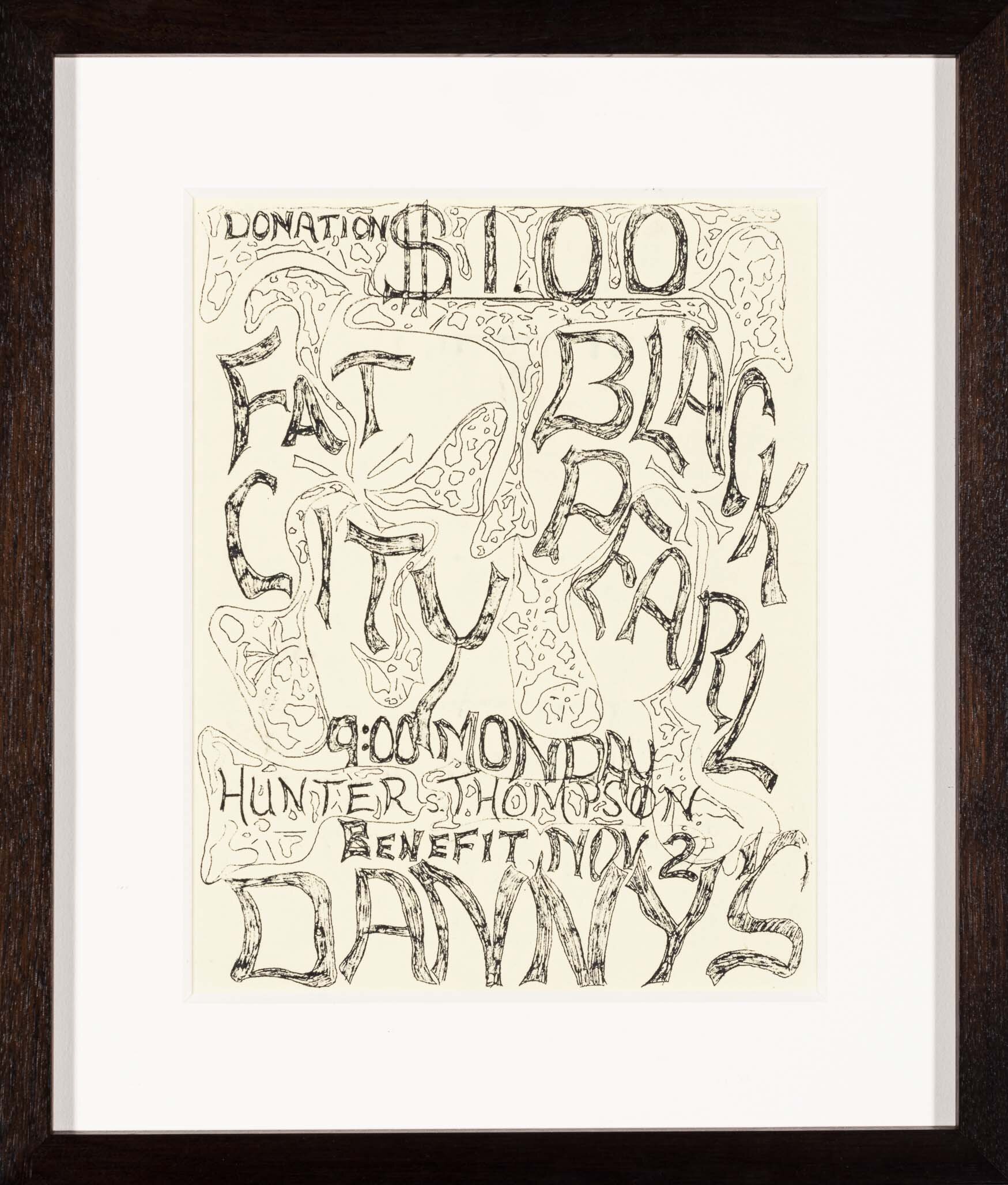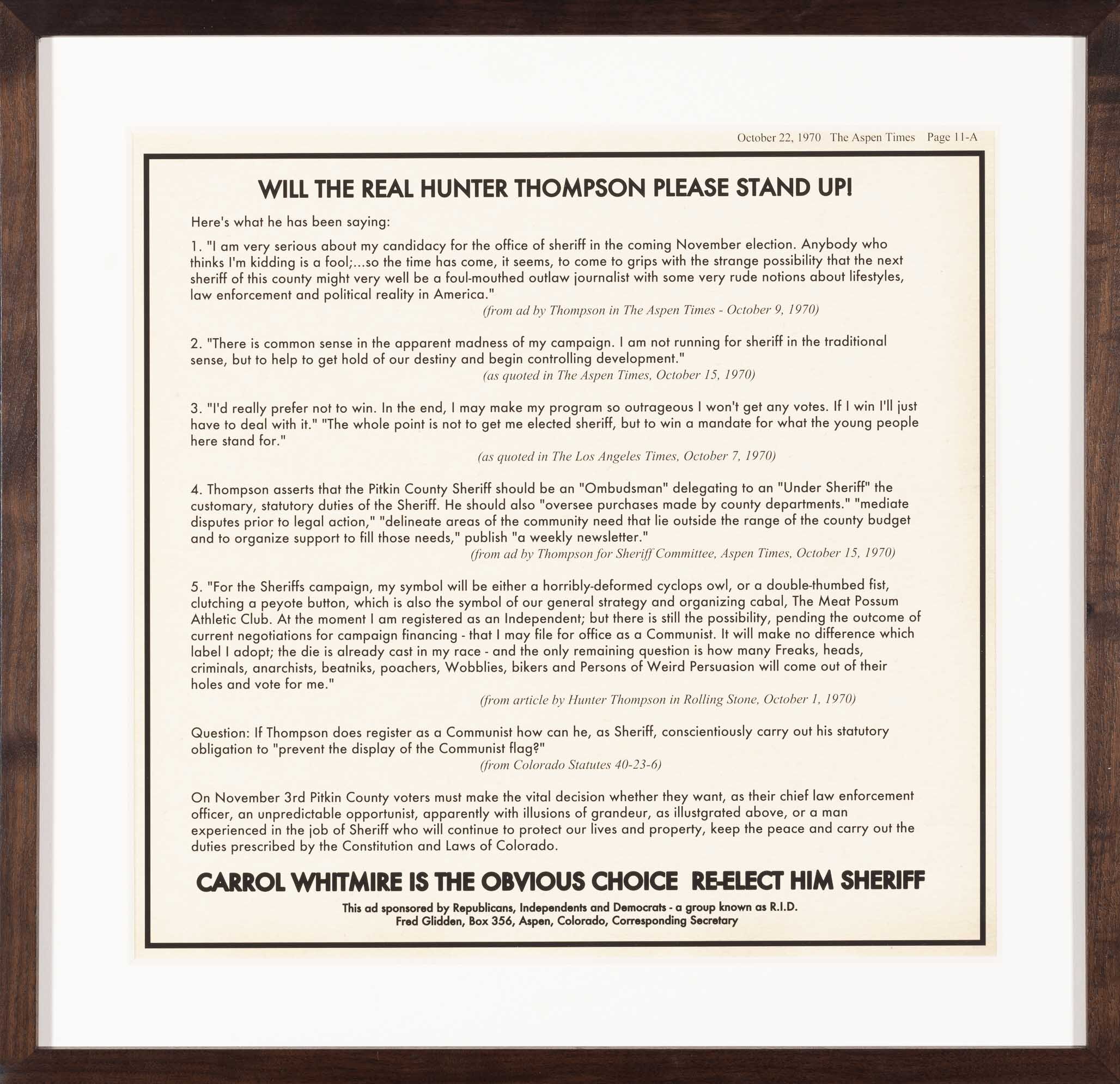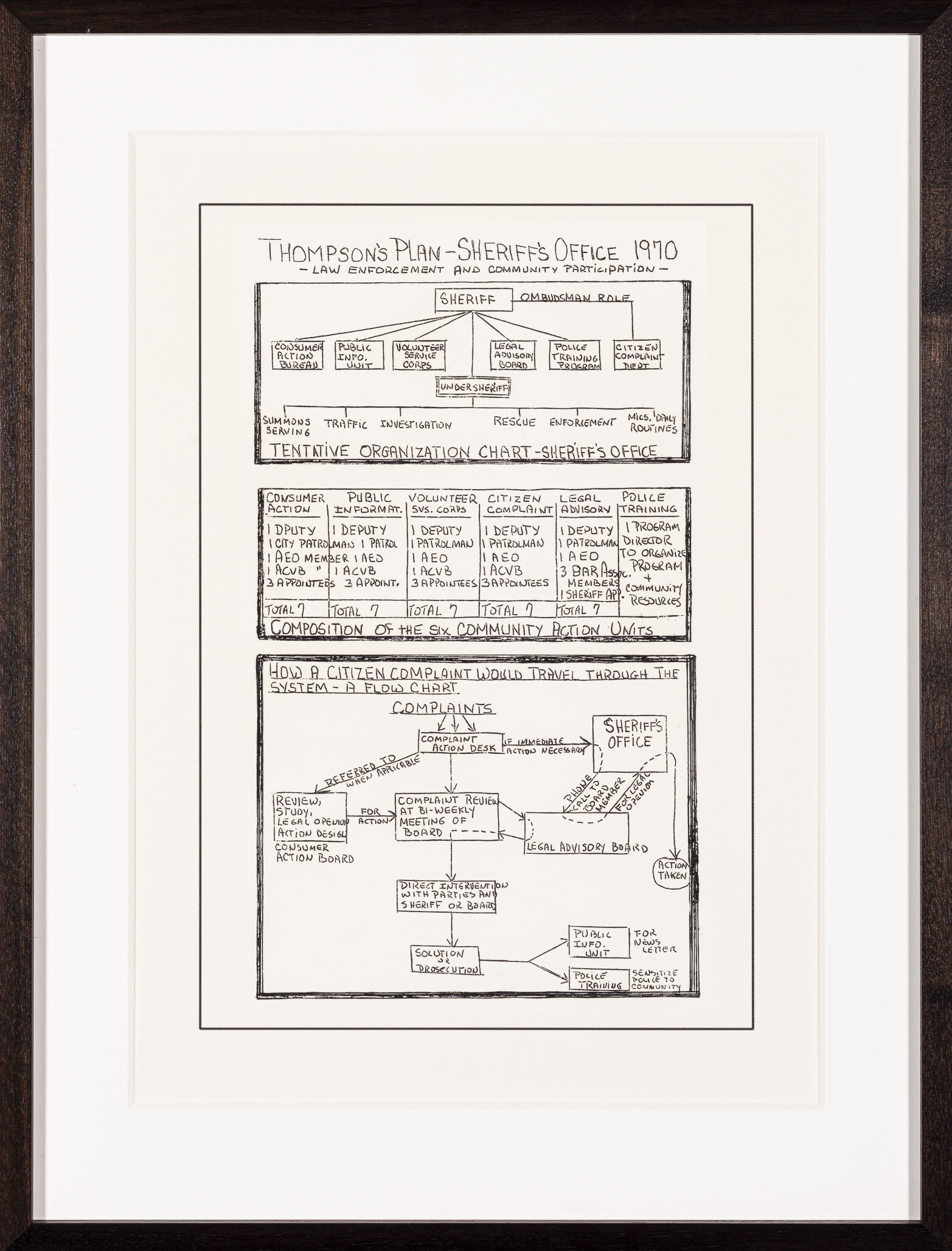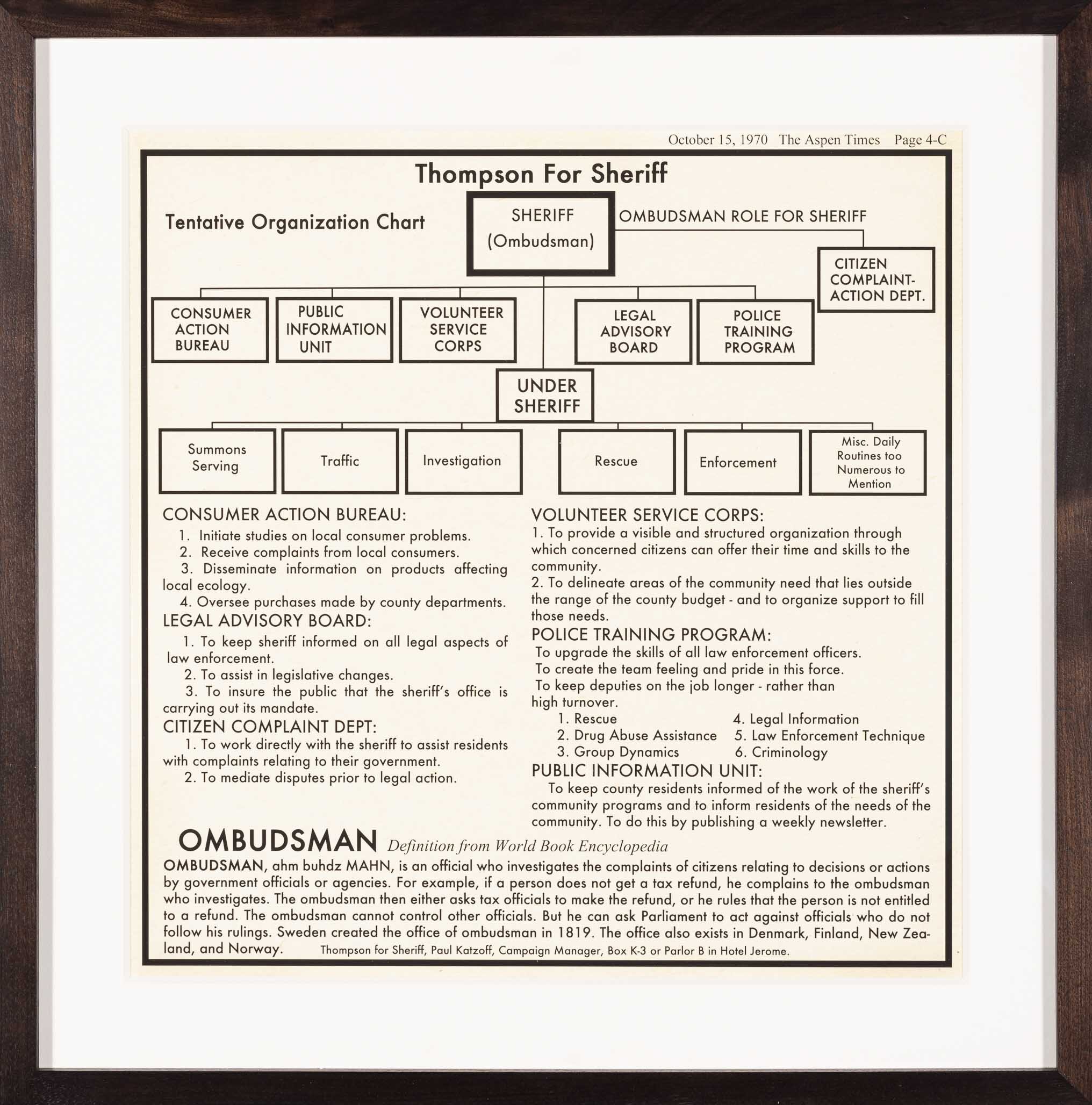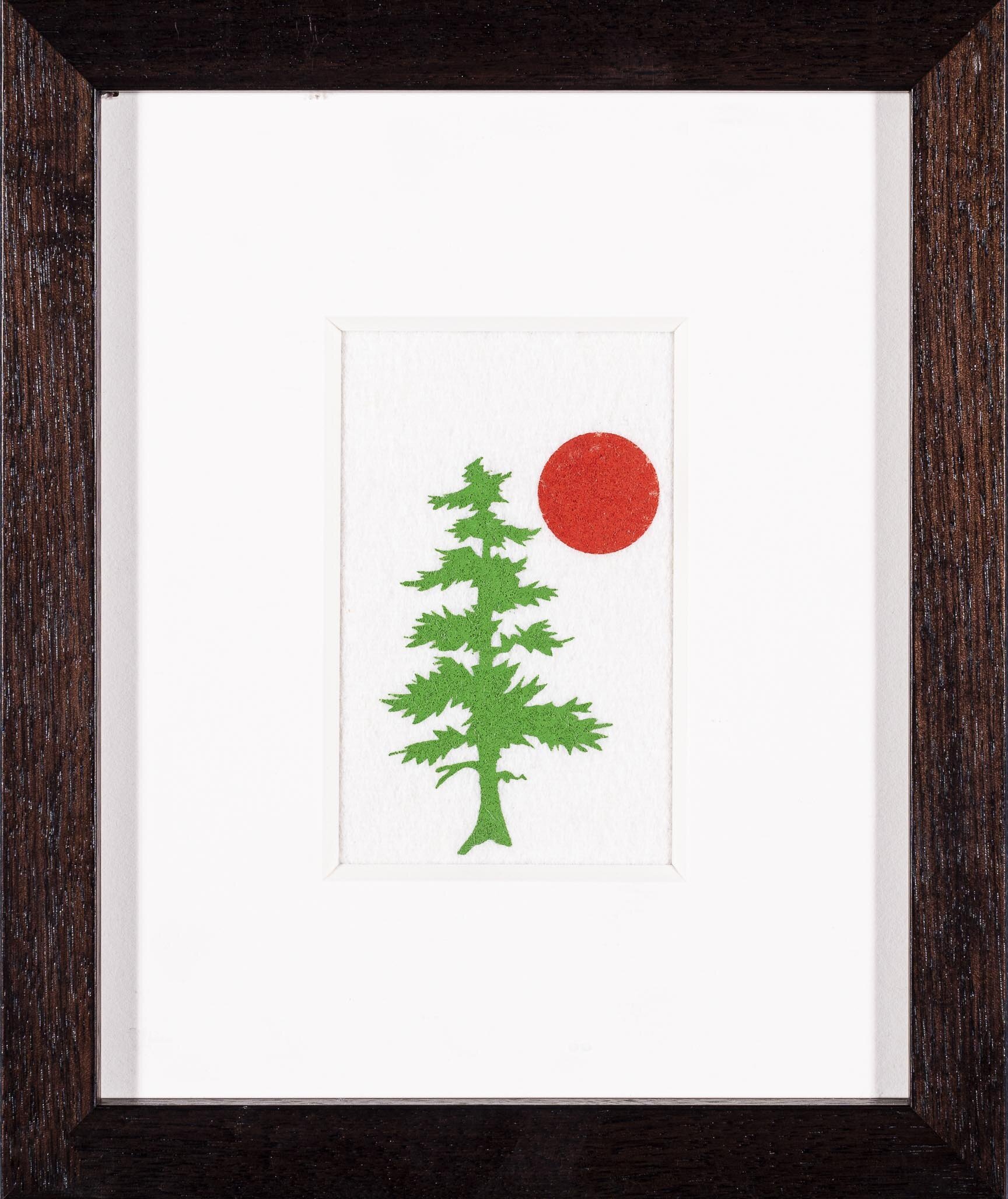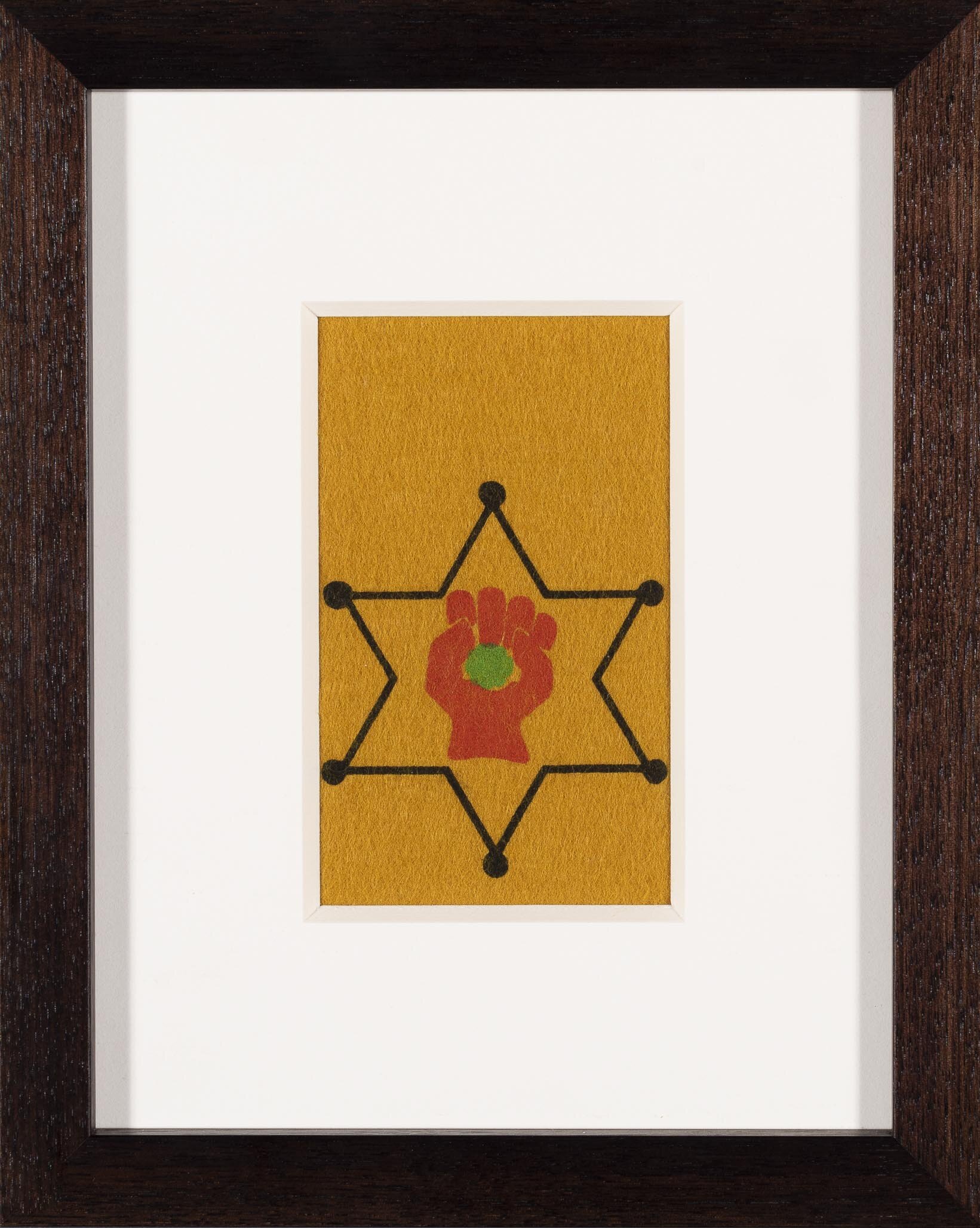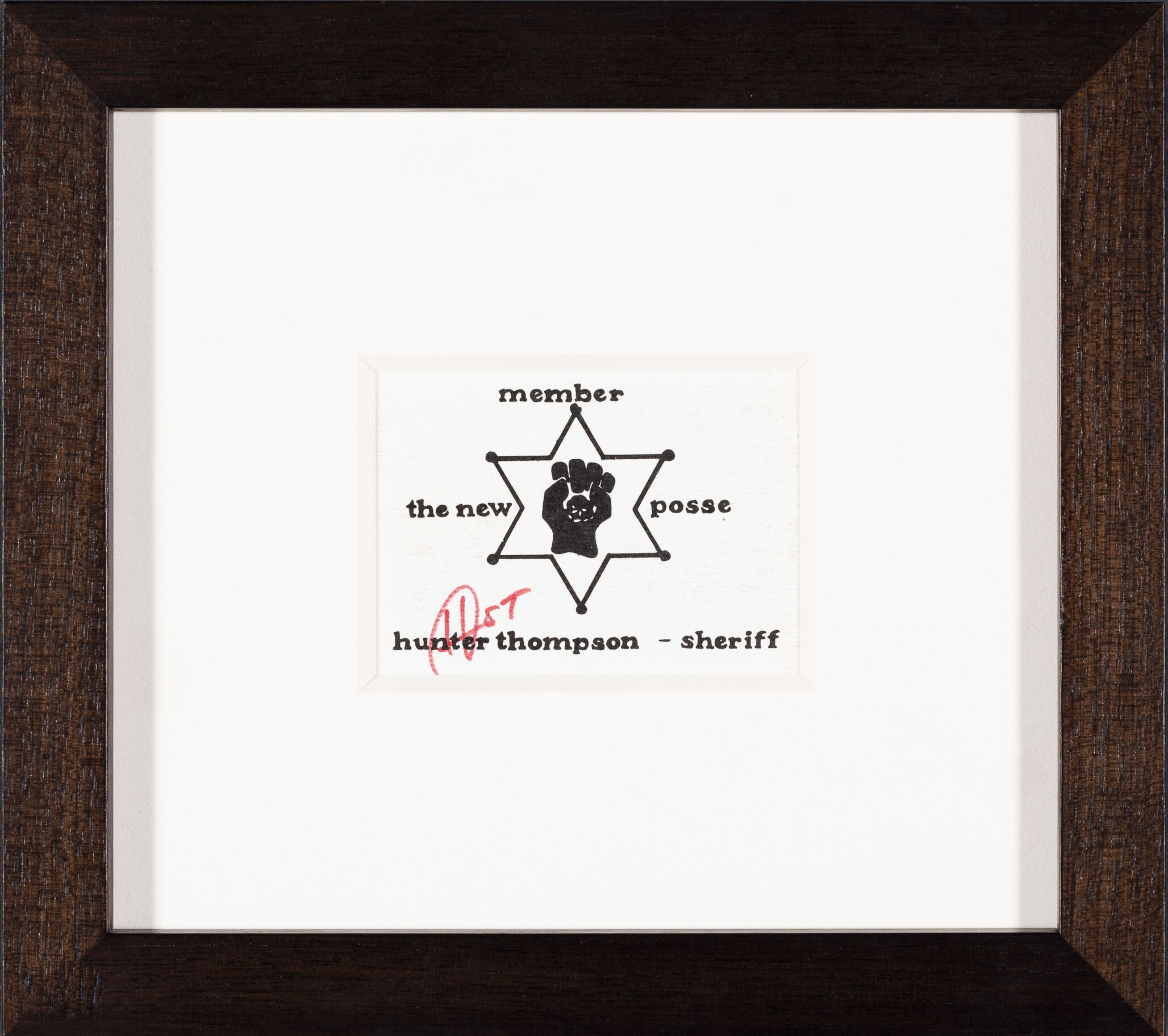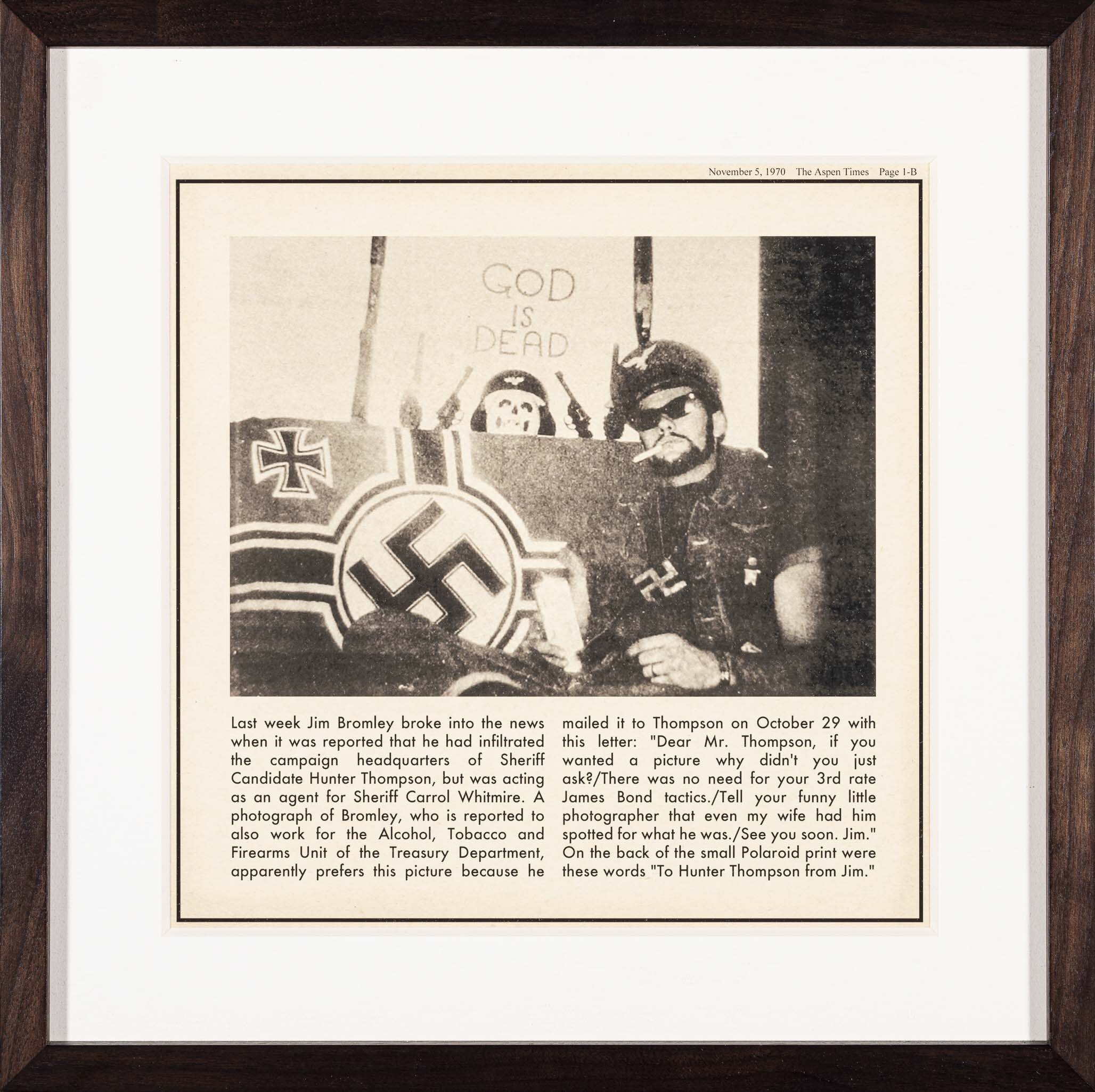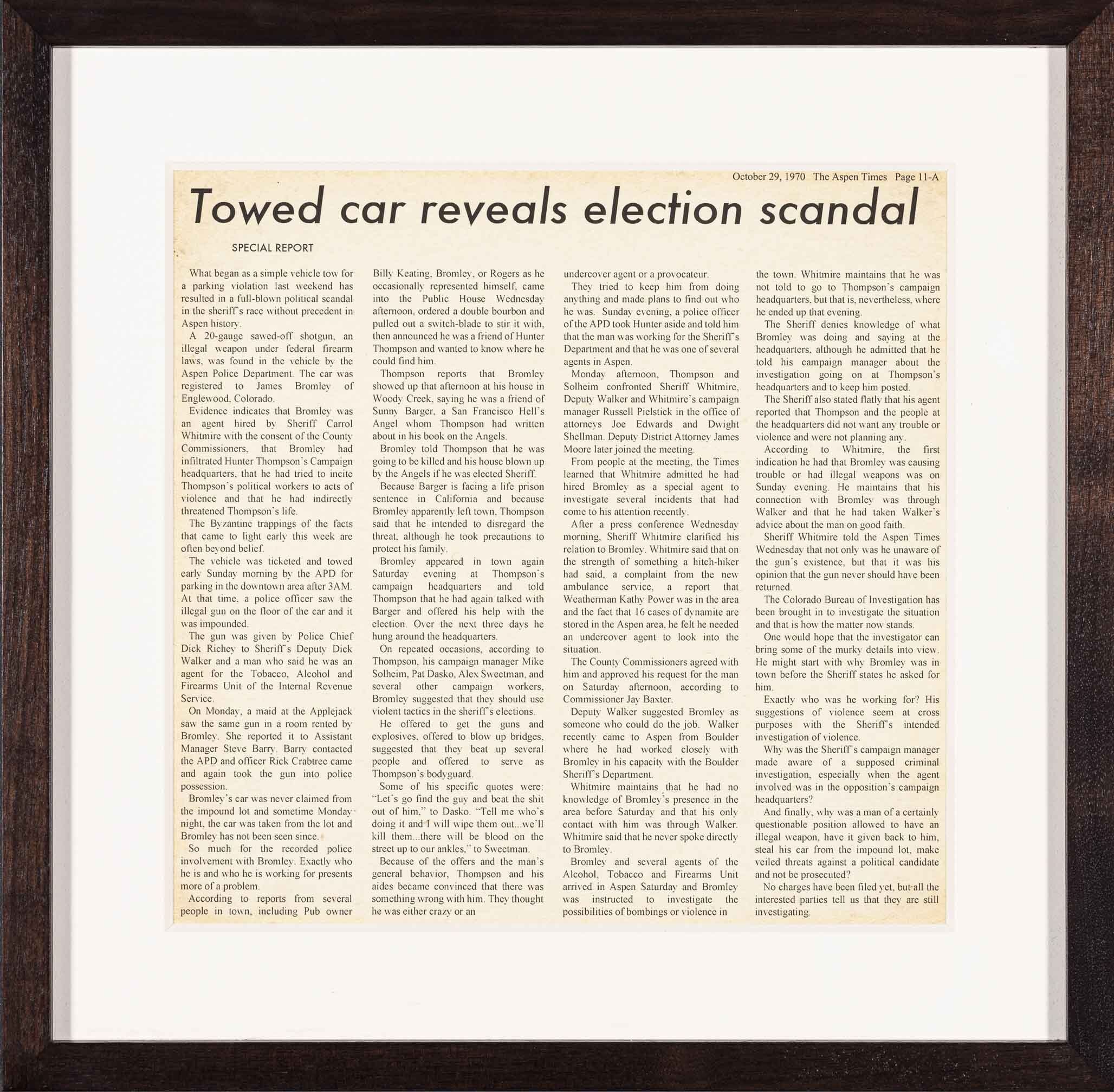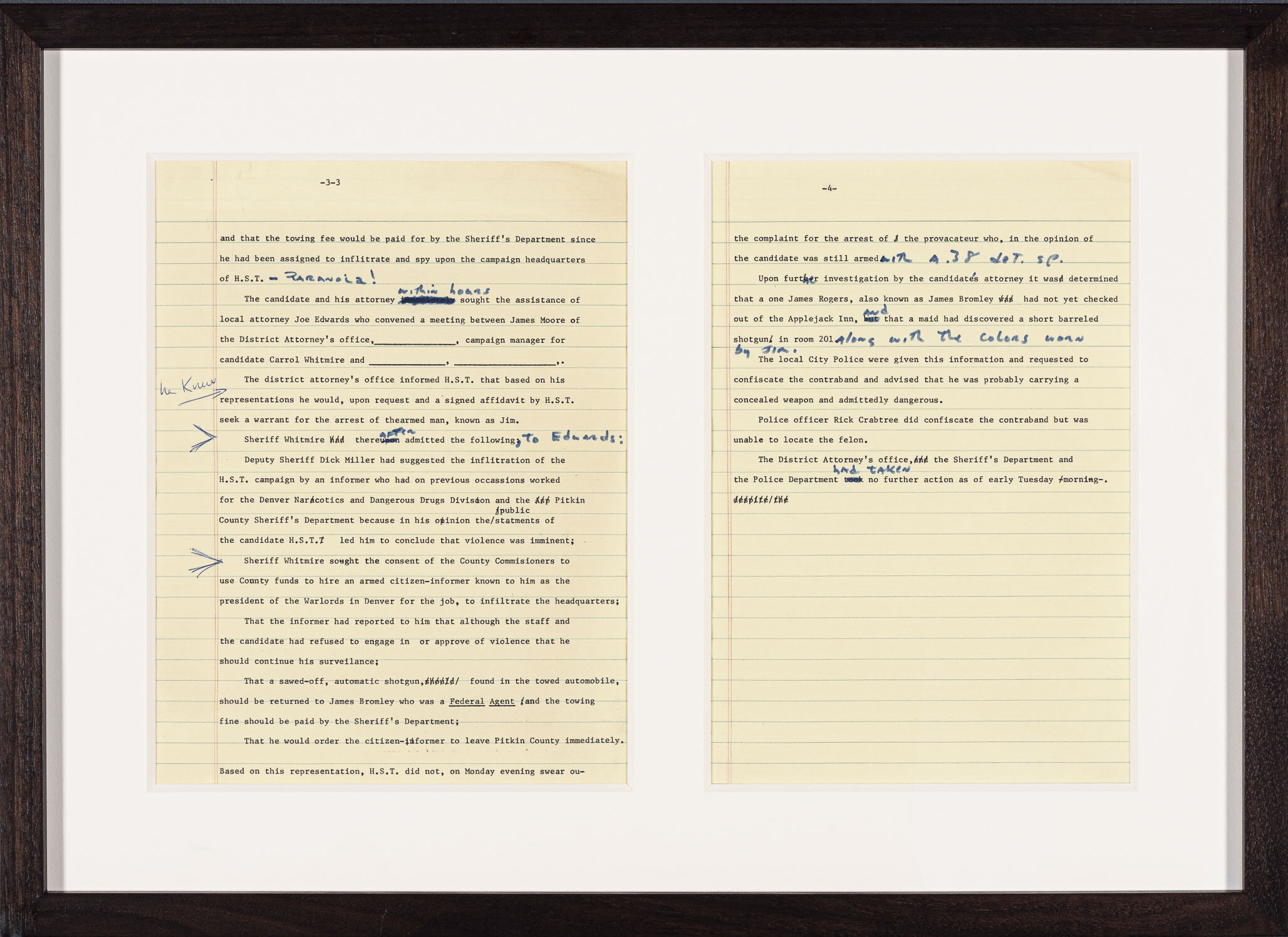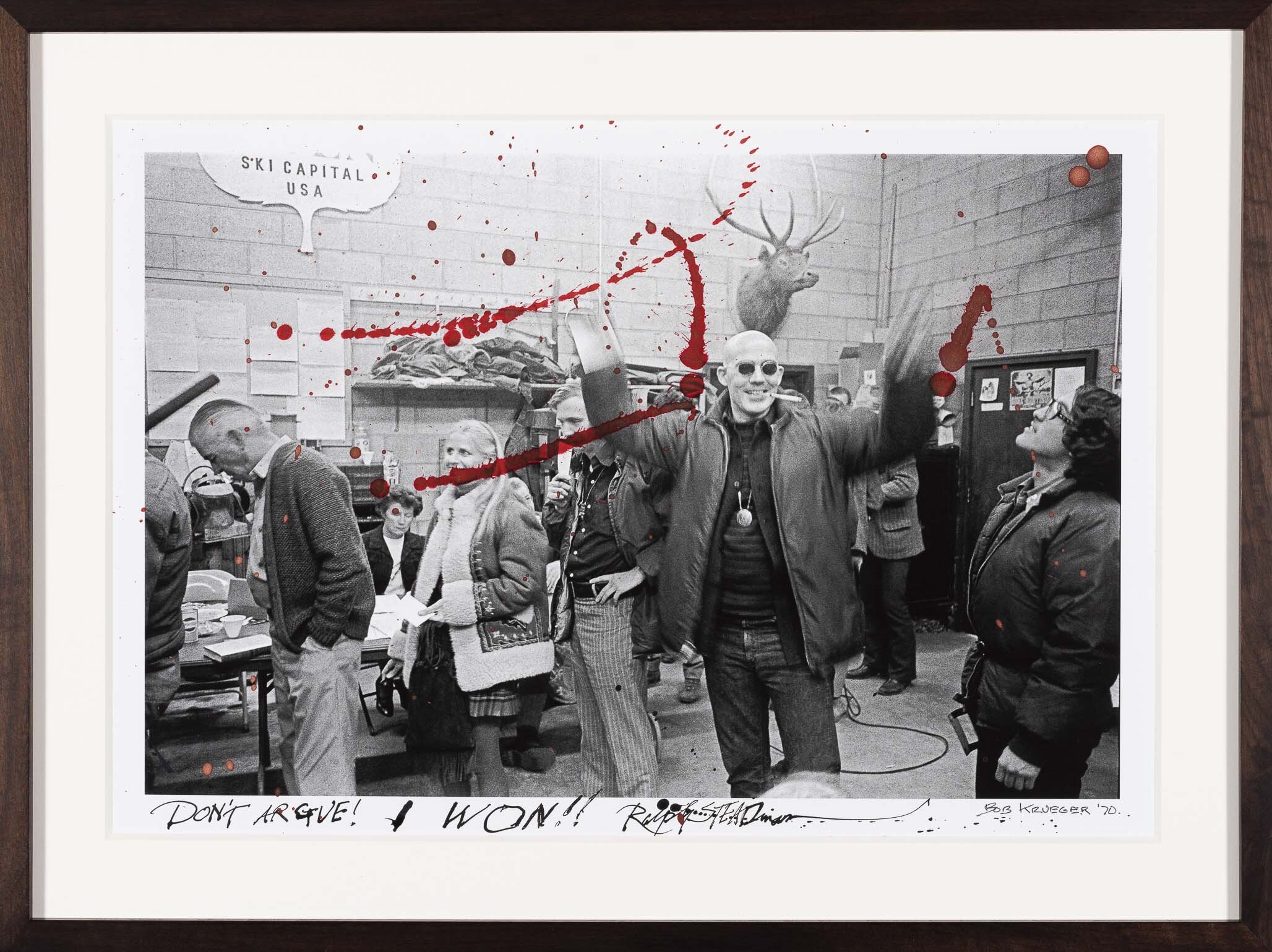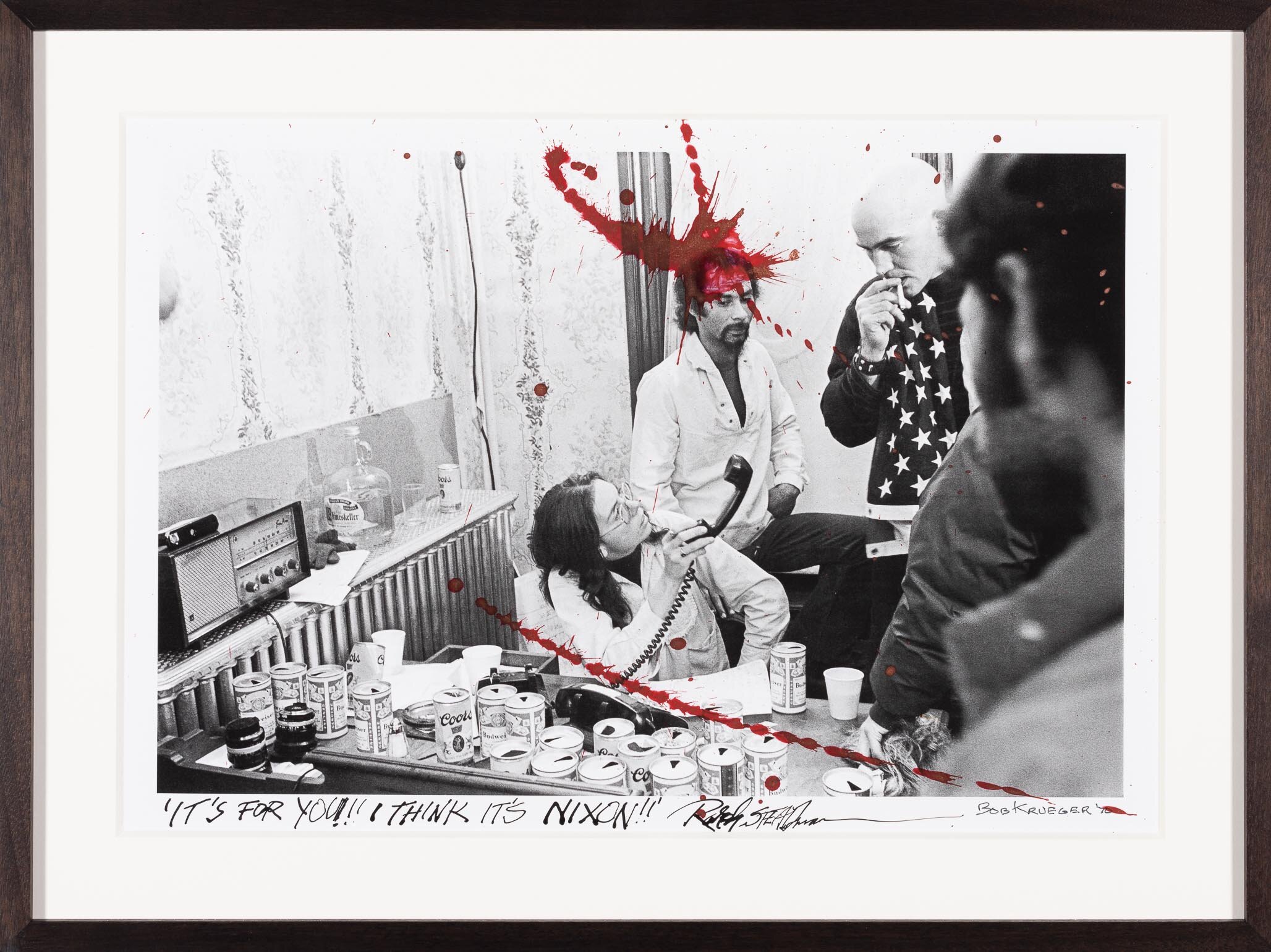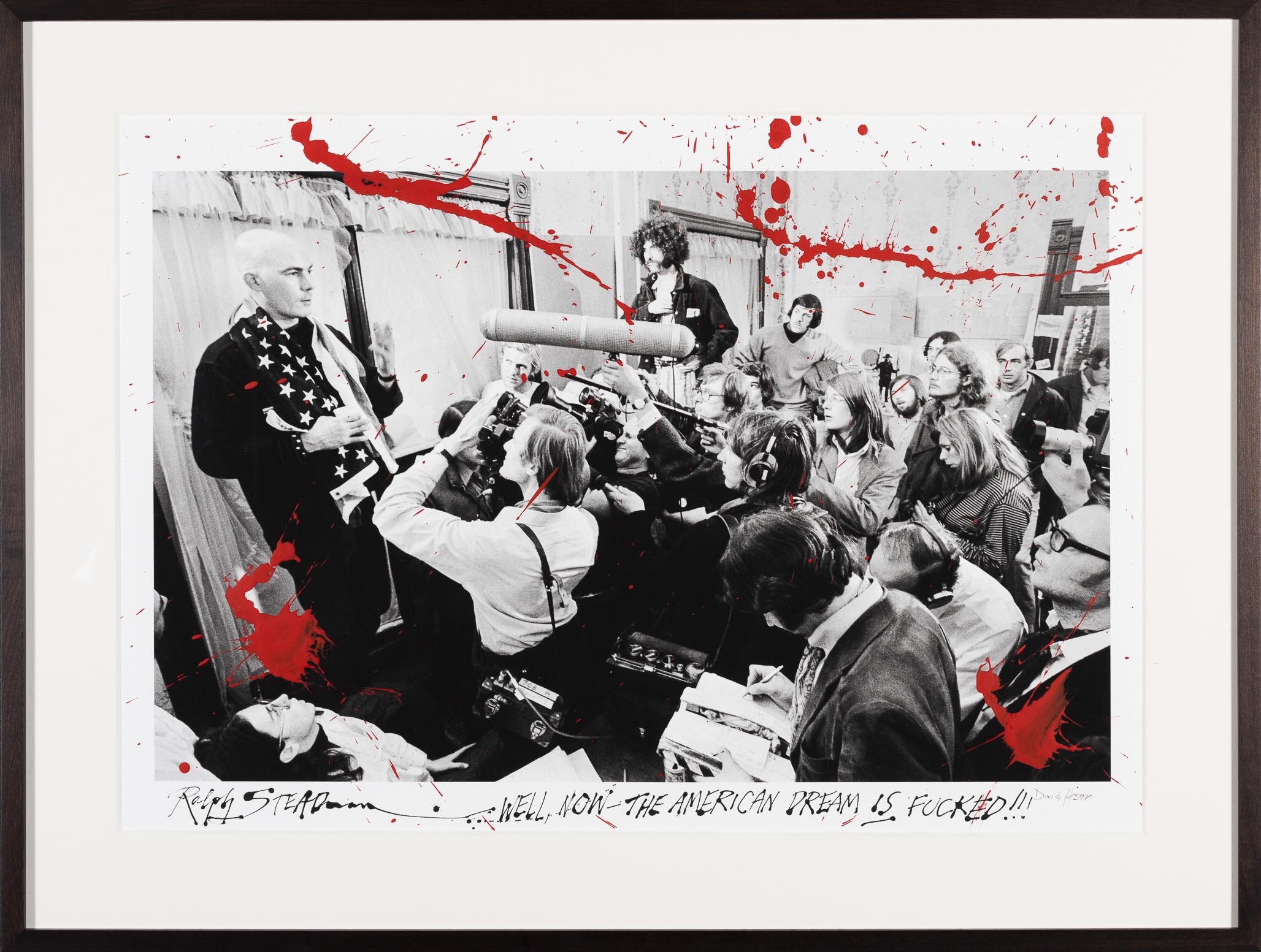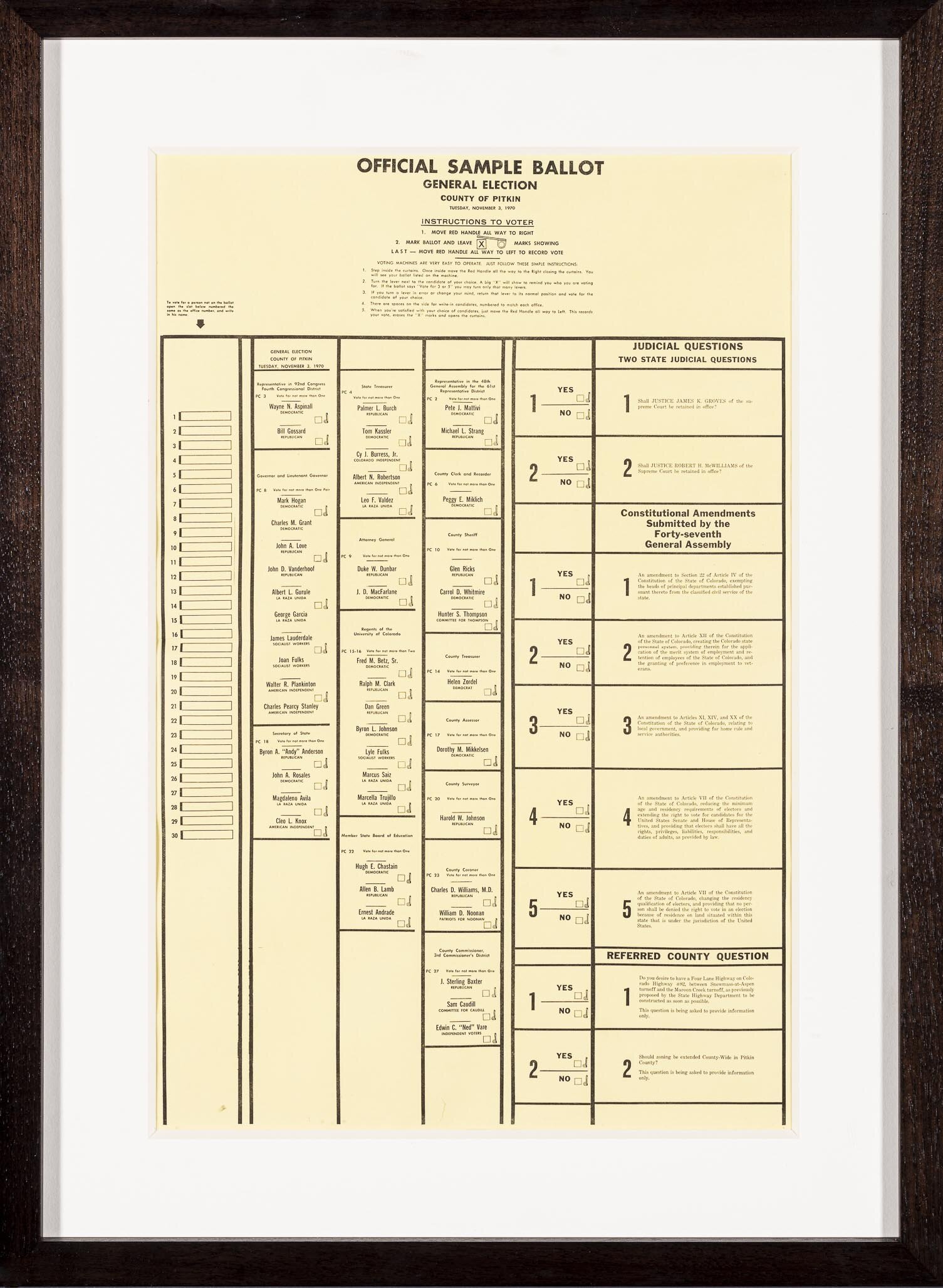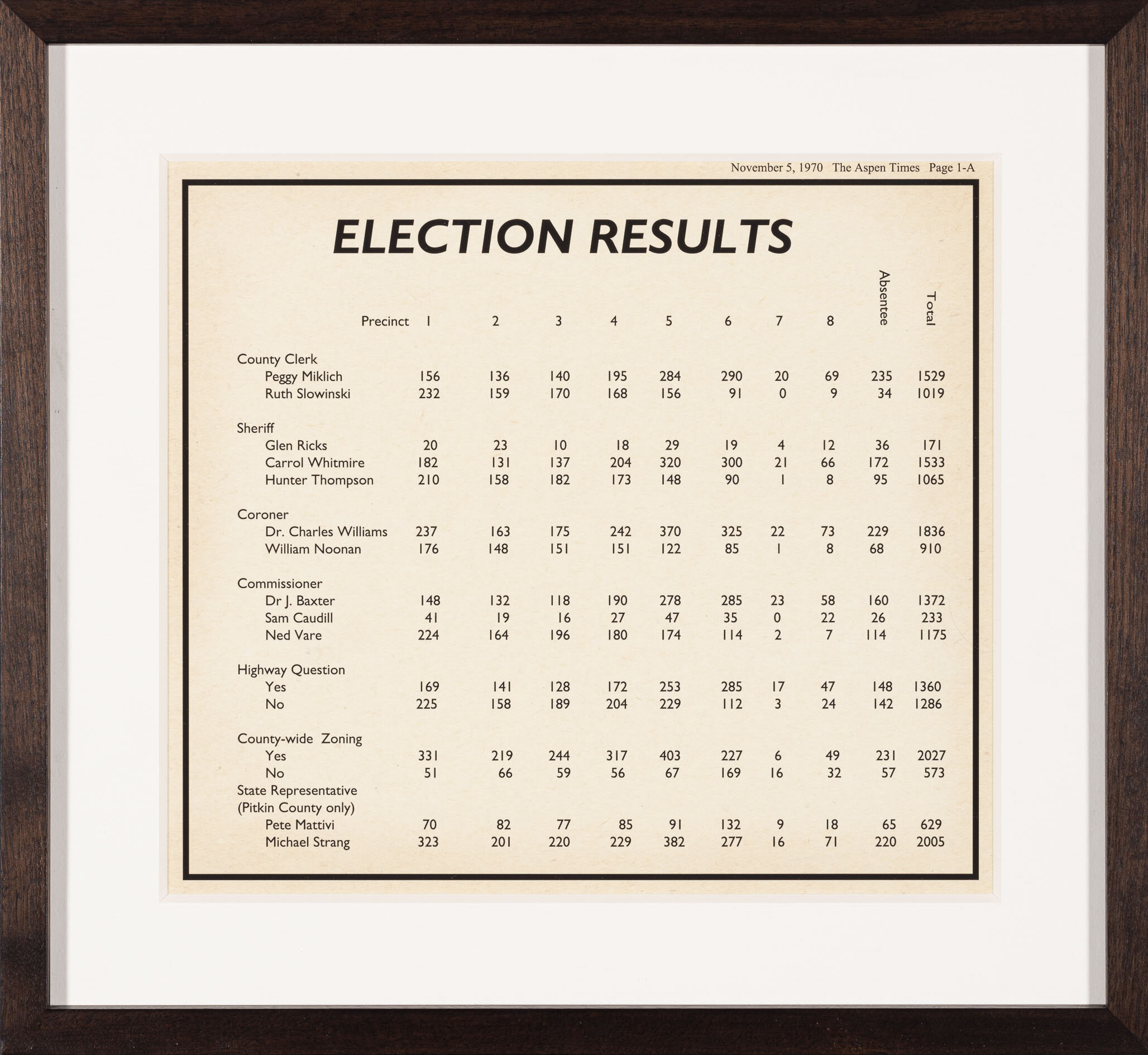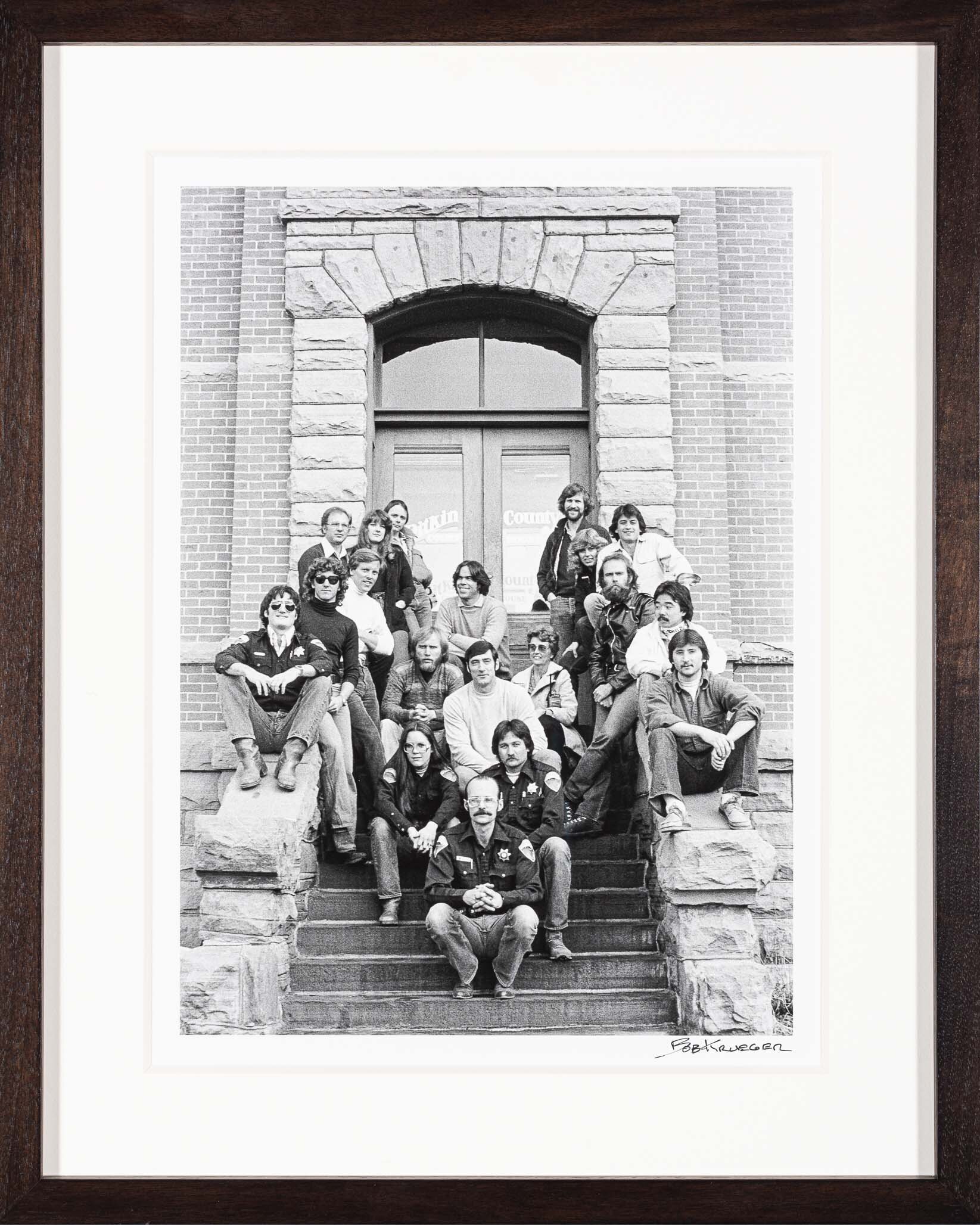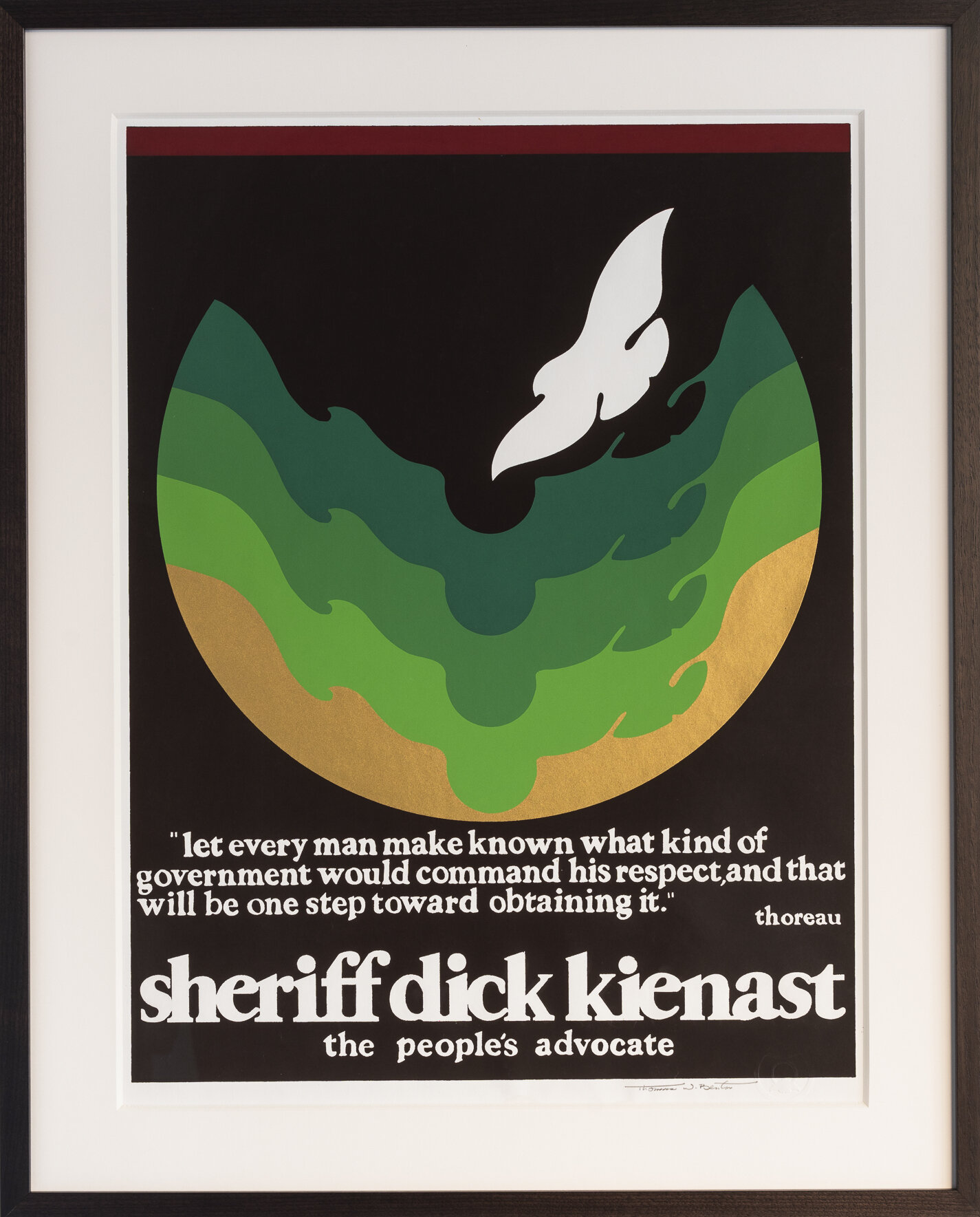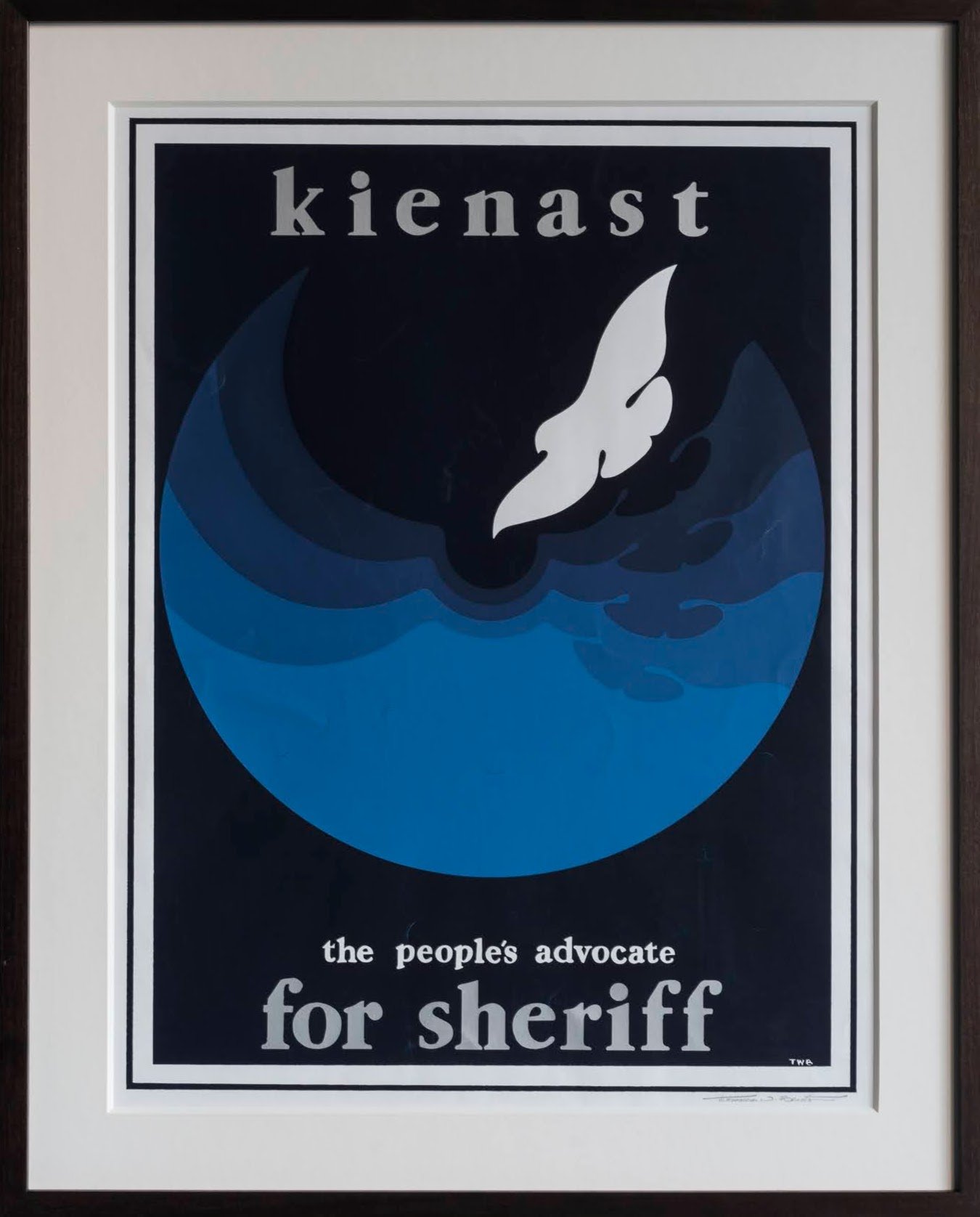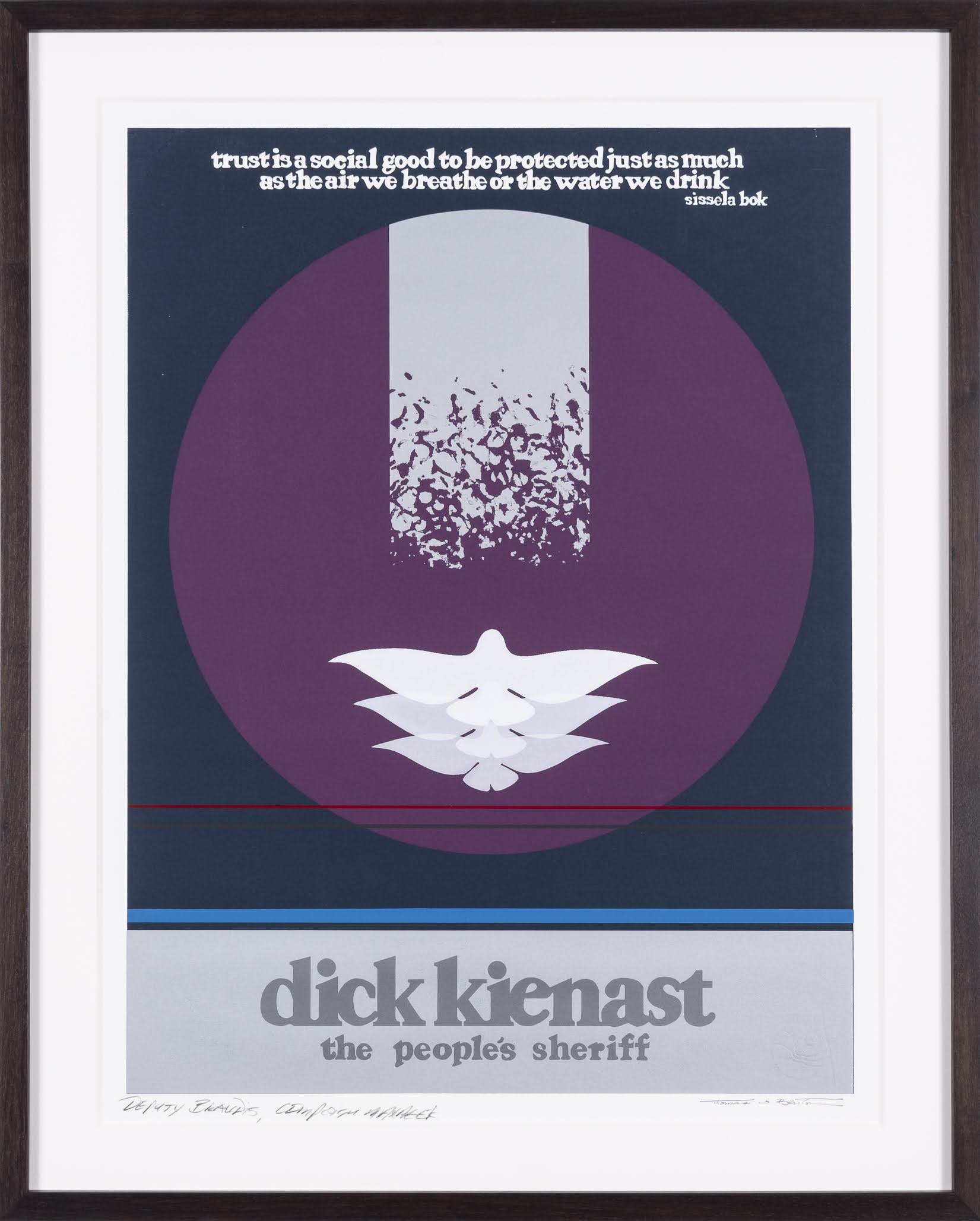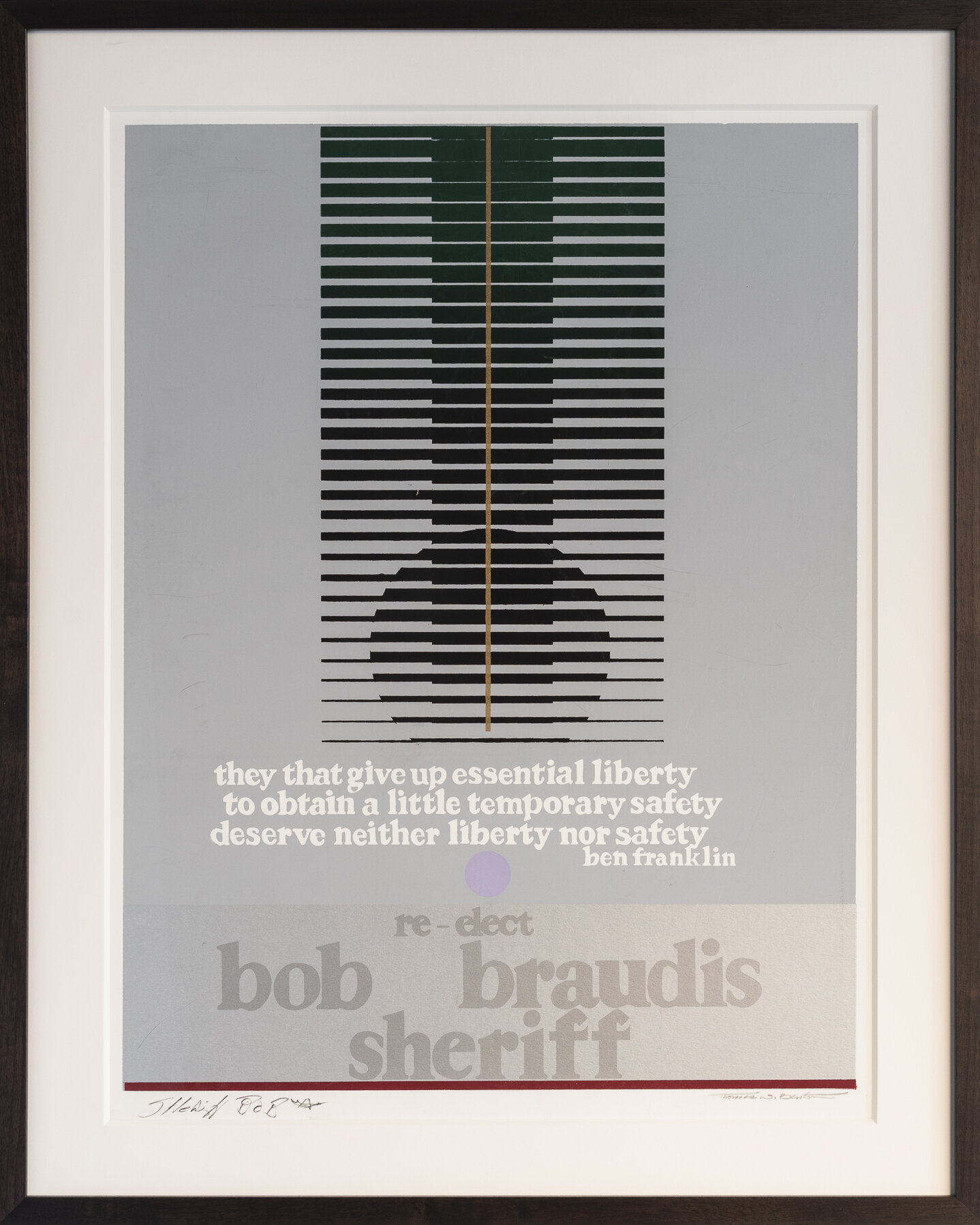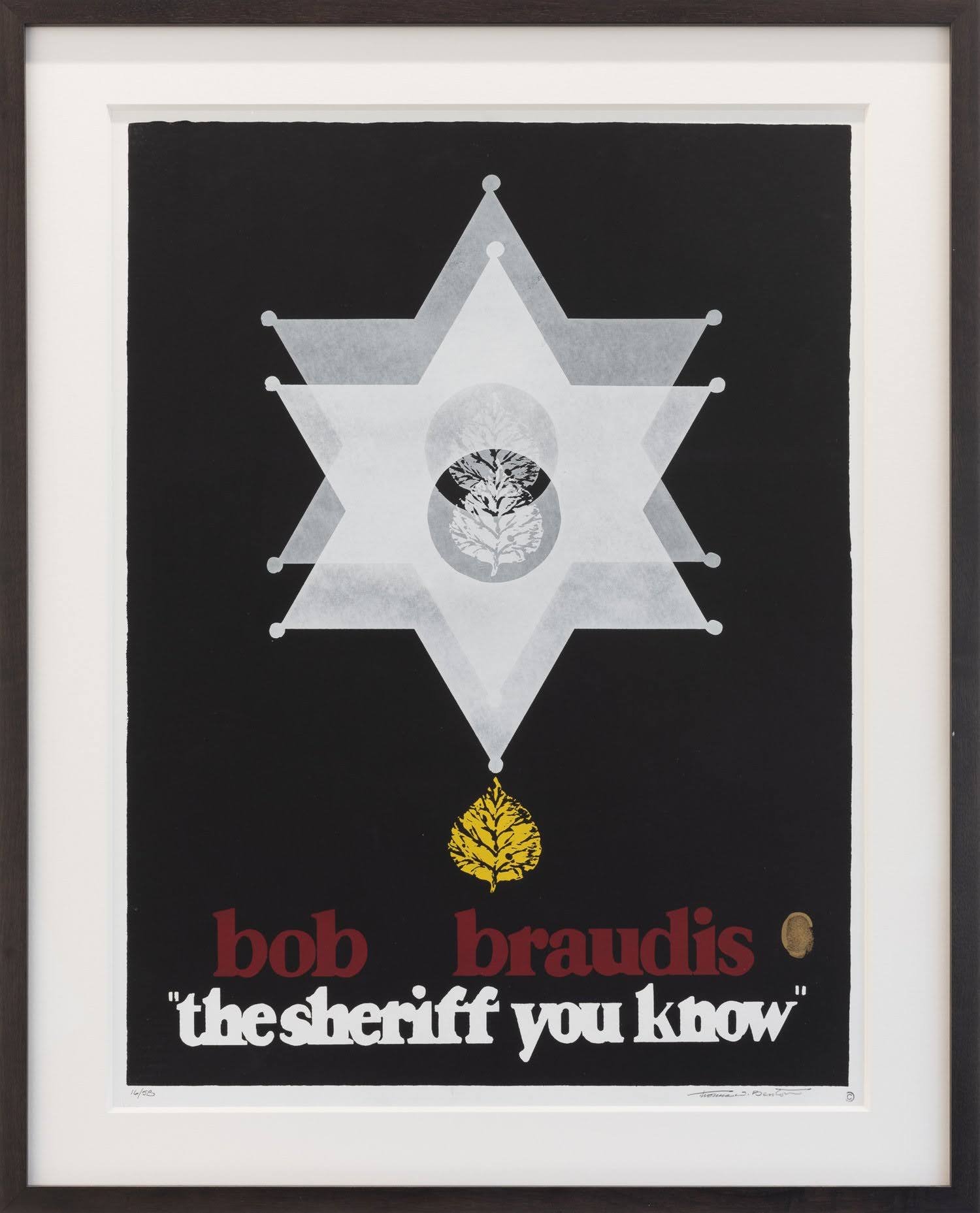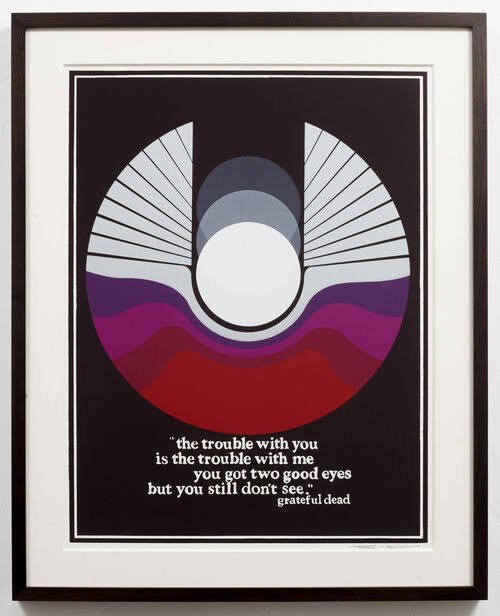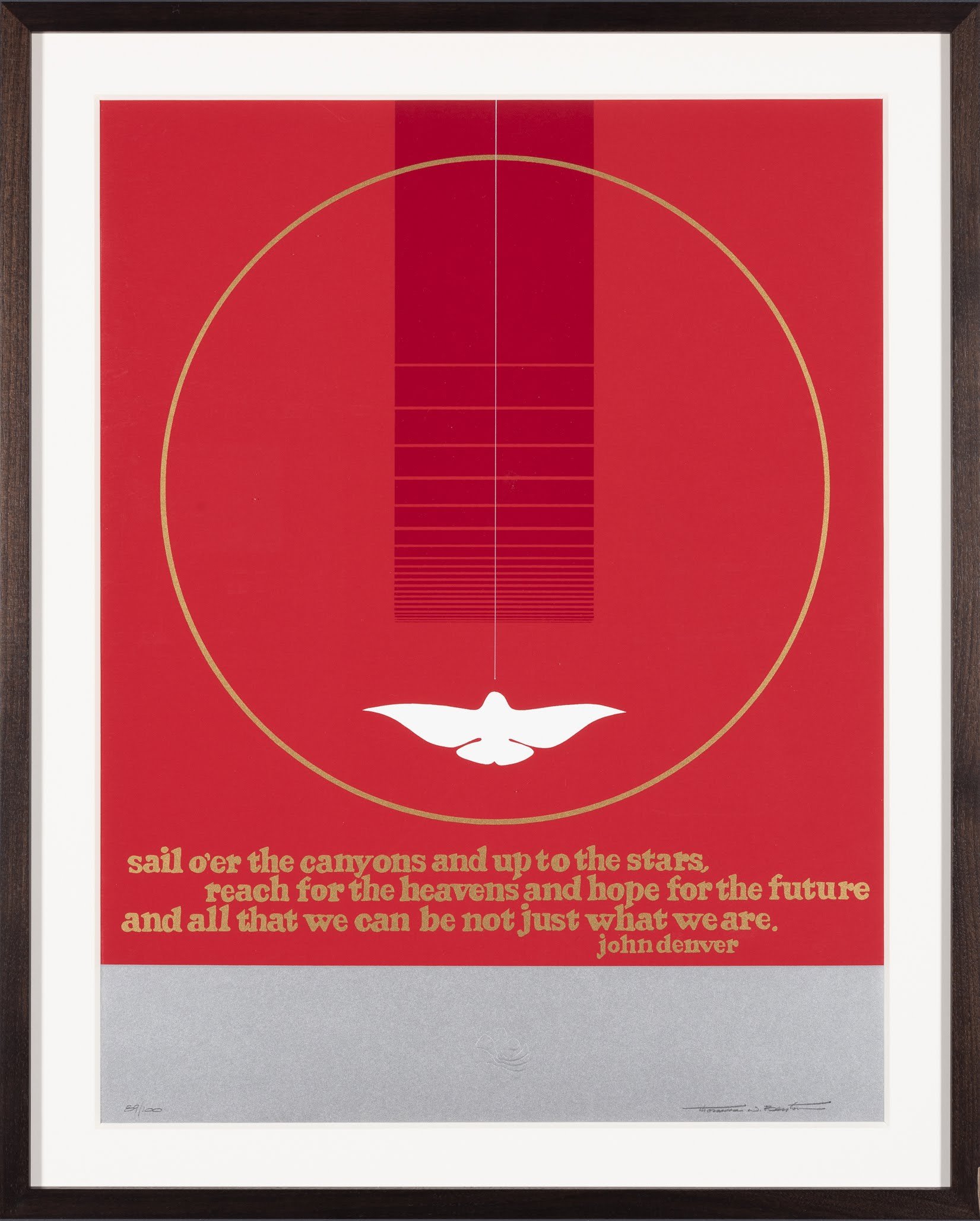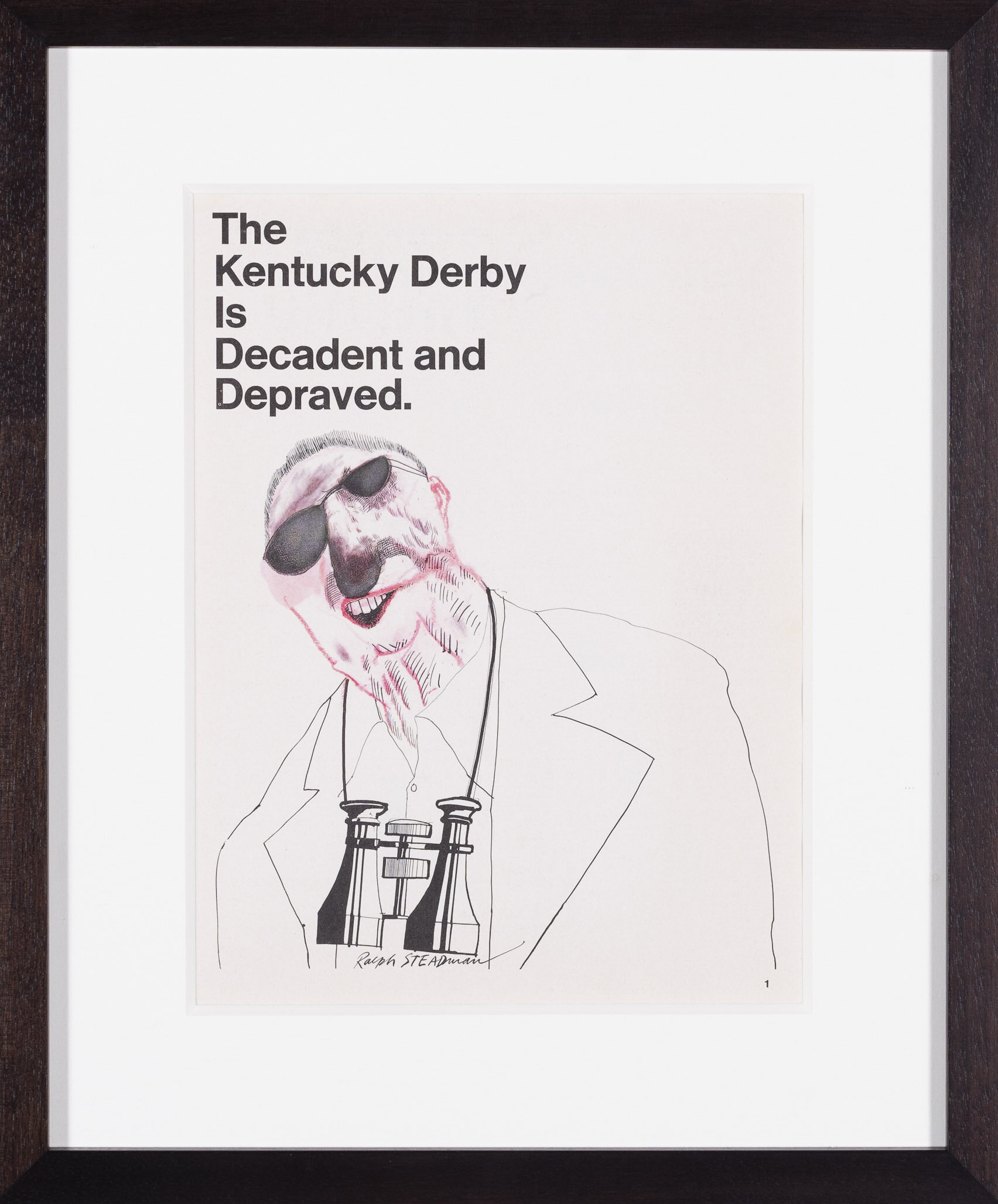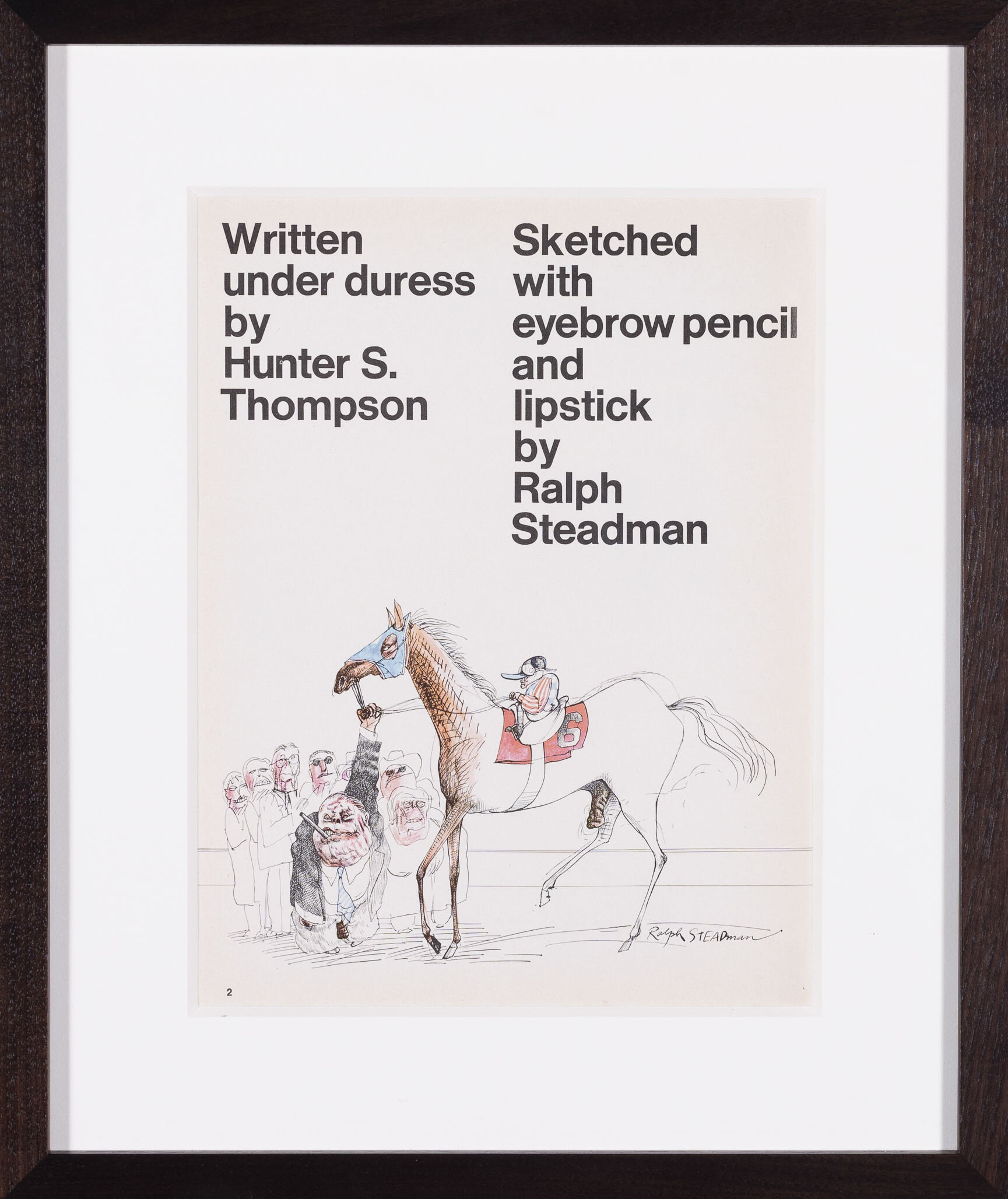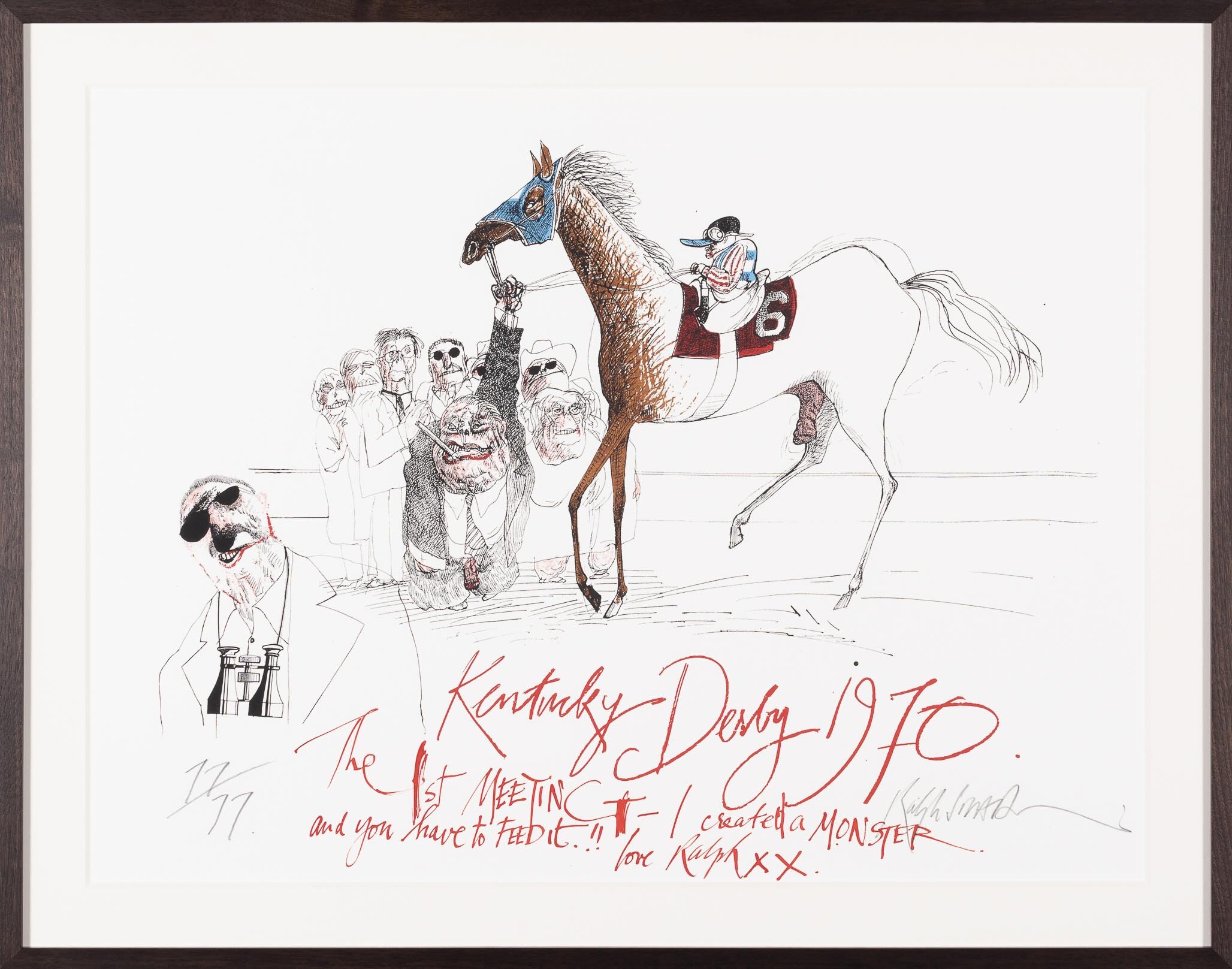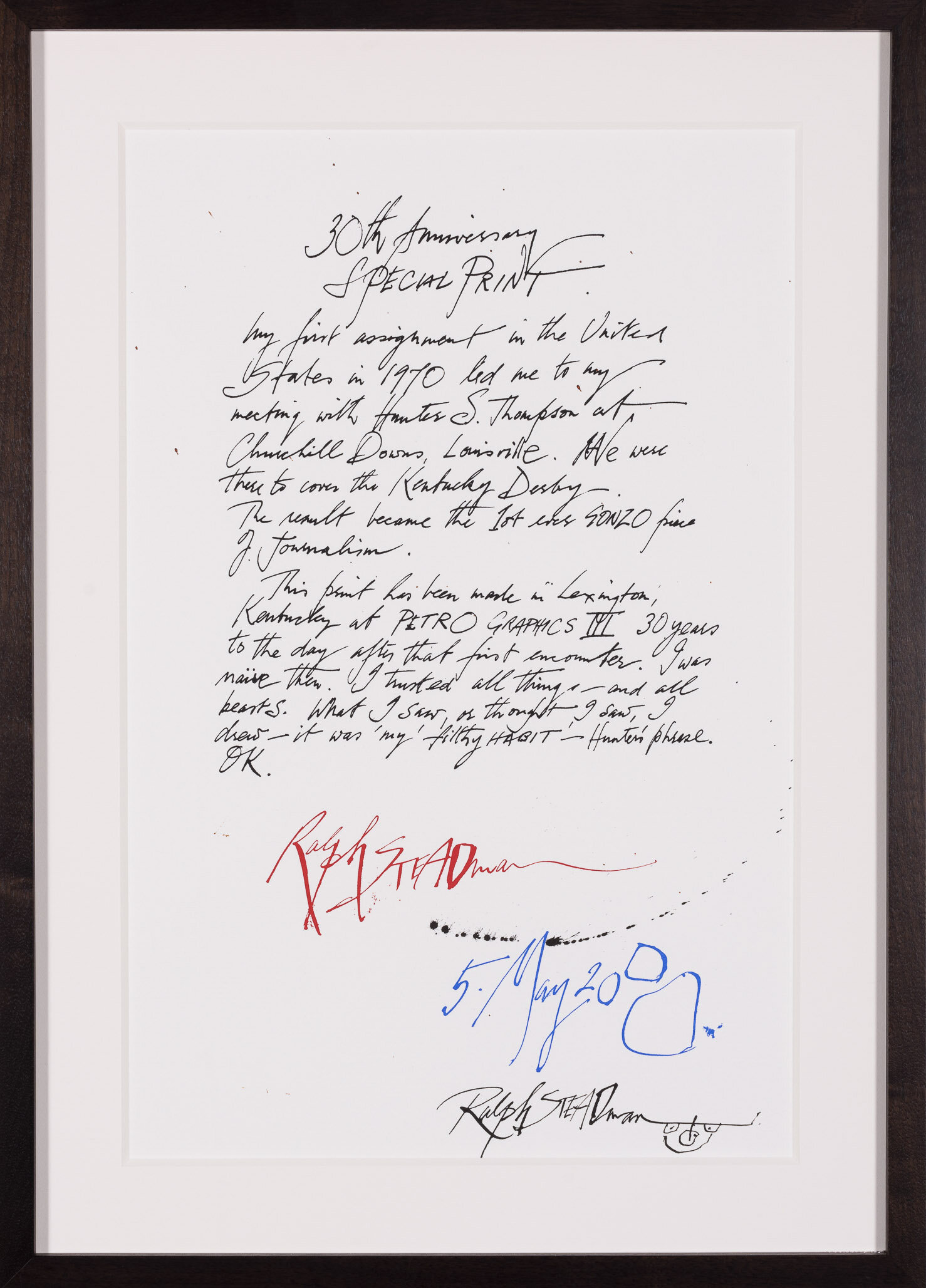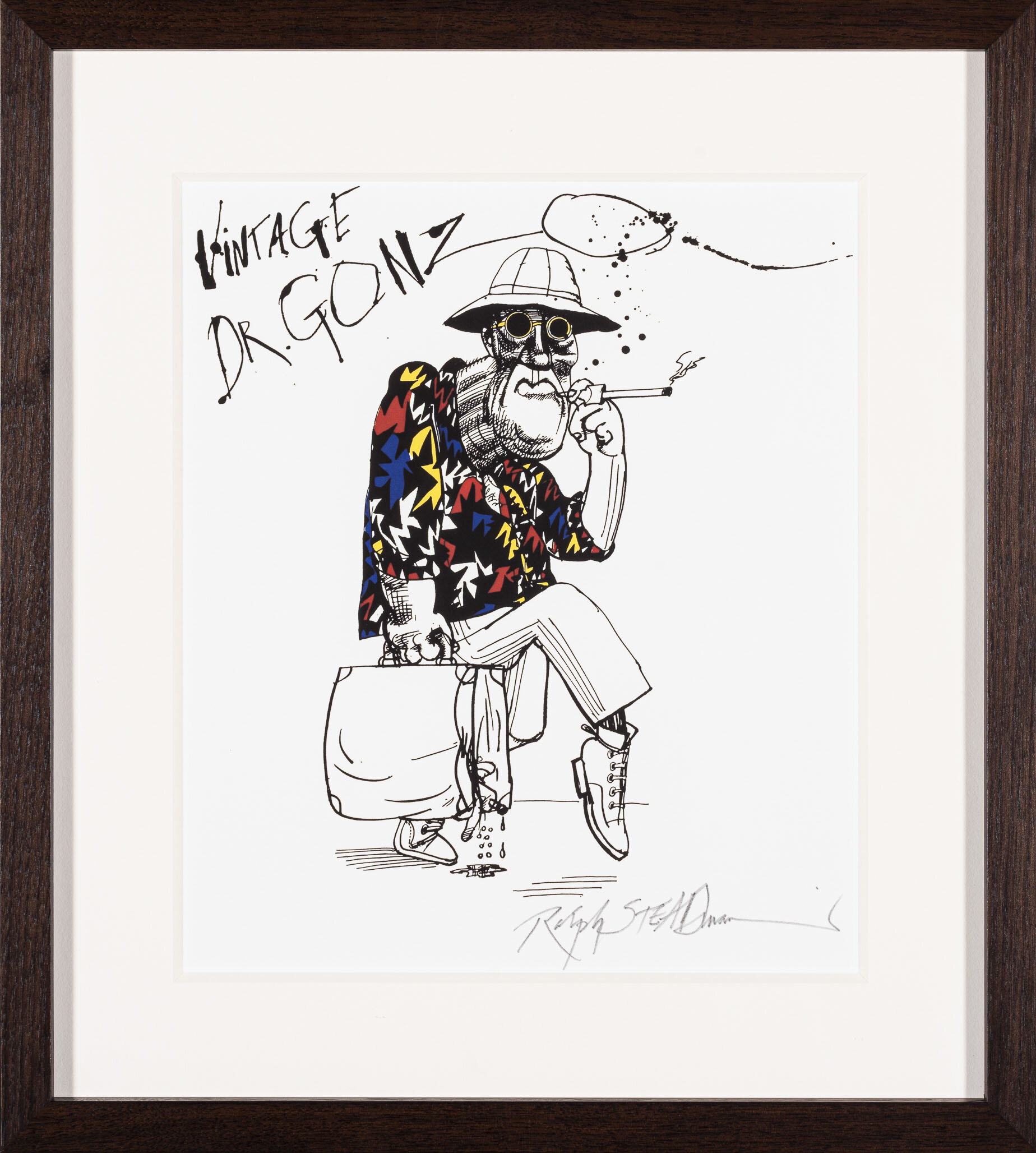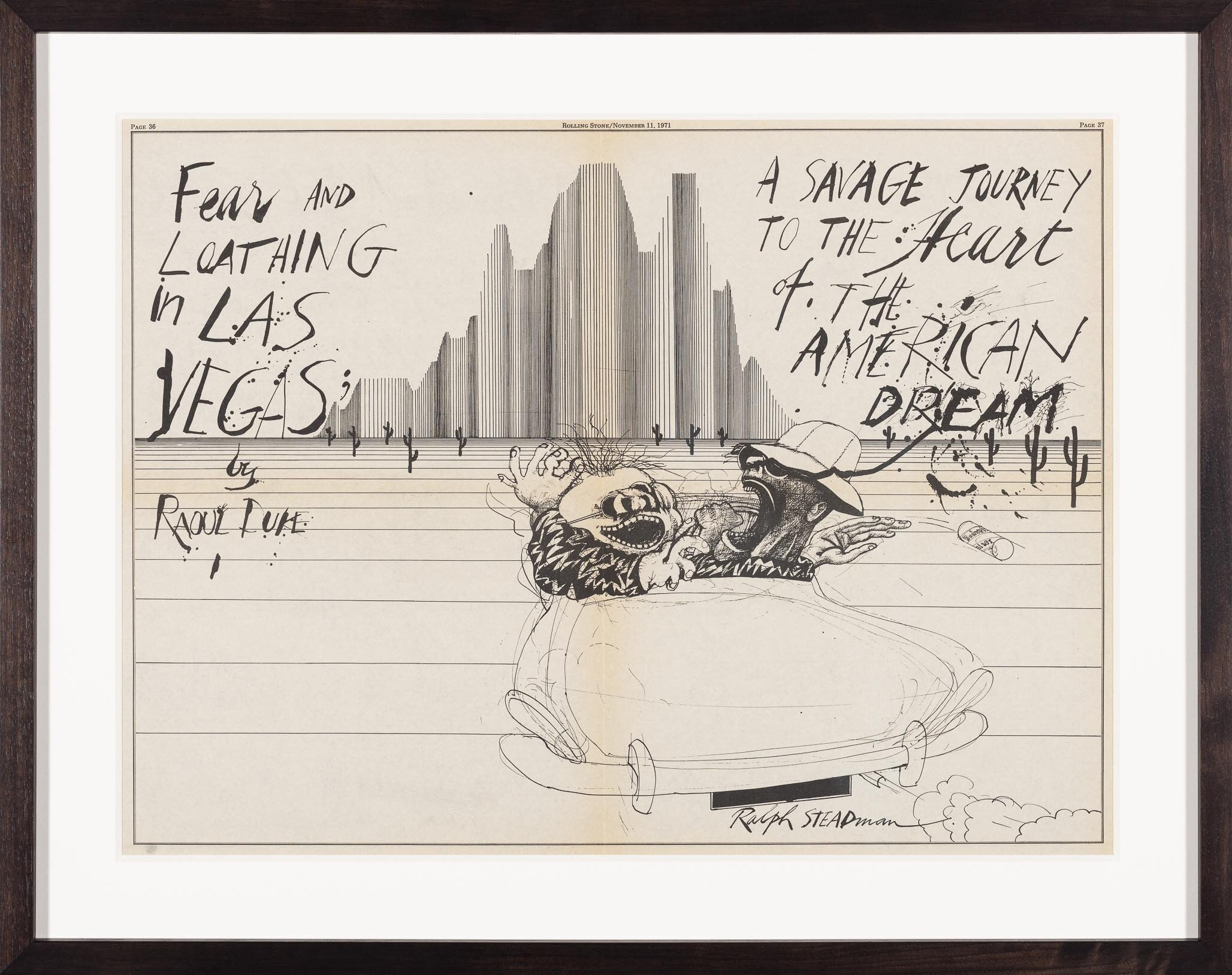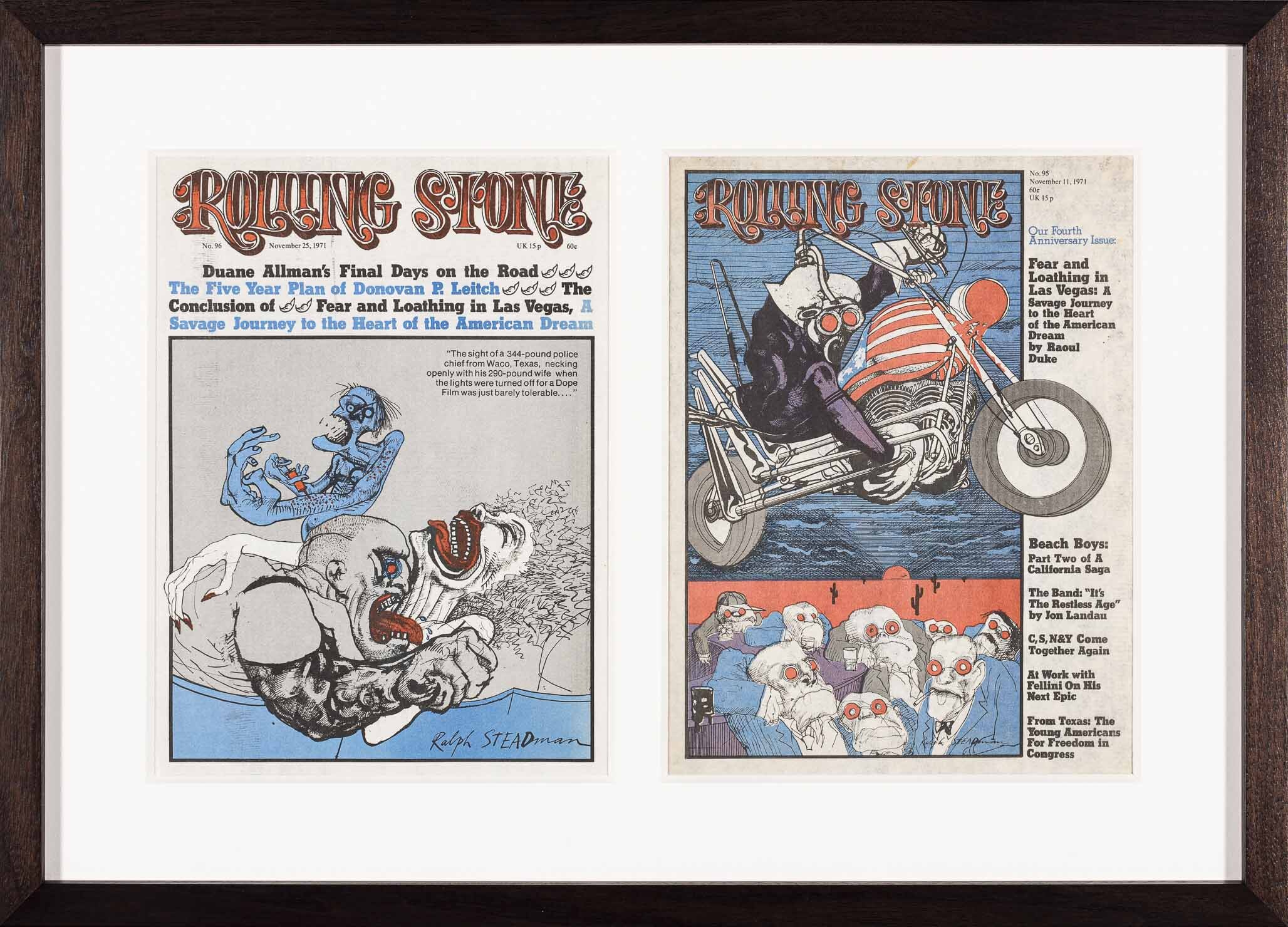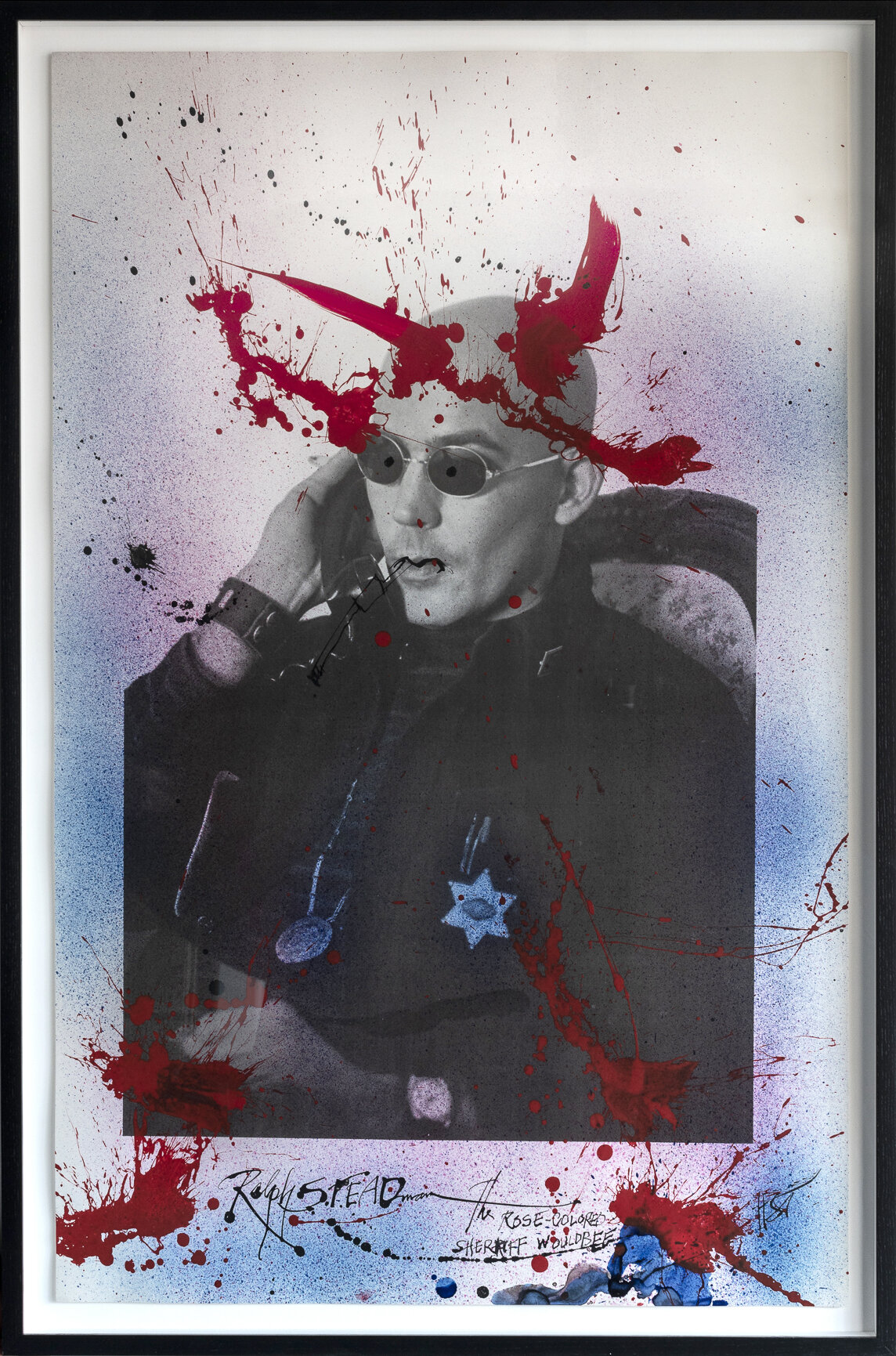Freak Power Museum Exhibition
The Great Art Behind Hunter S. Thompson’s Run For Sheriff - New York Times
The Freak Power Exhibition consists of 125 framed pieces of original artwork, vintage campaign ephemera, signed photographs and the new film Freak Power.
Shown at the Museum of Art and History in Santa Cruz from May 27 - Sept. 25, 2022
Shown at Poster House in New York City from March 4-August 15, 2021
Shown at the Aspen Art Museum December 16, 2020 - April 12, 2021
Shown at the Frazier History Museum in Louisville, KY from April 30 - Sept. 2, 2019
FREAK POWER EXHIBITION
THE ART OF HUNTER S. THOMPSON’S
POLITICAL MOVEMENT
In 1969 in Aspen, American journalist, Hunter S. Thompson collaborated with a colorful cast of activists, intellectuals and artists to launch a political movement which fought for the future of the town, the environment, and the nation. The Freak Power campaign used art, prose, and political theatre to generate a wave of support and to mobilize young people to vote and transform their local government. This exhibition uses over 120 vintage screen-printed posters, photos, films, and texts to tell the story of the Battle of Aspen, which saw artists, beatniks and other concerned citizens fighting against gentrification, oppression, war, and environmental destruction.
The energy of this movement can still be felt in the Freak Power collection, assembled by curator and writer Daniel J. Watkins. Original art by Ralph Steadman and Thomas W. Benton combine with Hunter S. Thompson’s writing and political theatre to shed new light on a chapter in history which also resonates today. The majority of the exhibition is organized by theme and each section is modular and variably sized to fit the spaces and priorities of the venue. There are several events and activities included in the proposal that are designed to encourage people to engage with the exhibition and take action in their own communities. In the current, politically charged environment, this show will resonate with those who are looking for creative ways to incite change.
“This is the real point: that we are not really freaks at all - not in the literal sense - but the twisted realities of the world we are trying to live in have somehow combined to make us feel like freaks. We argue, we protest, we petition - but nothing changes...So now, with the rest of the nation erupting in a firestorm of bombings and public killings, a handful of ‘freaks’ are running a final, perhaps atavistic experiment with the idea of forcing change by voting ... and if that has to be called Freak Power, well ... whatever’s right.” - Hunter S. Thompson, The Aspen Times, October 22, 1970
ARTISTS
HUNTER S. THOMPSON
Hunter S. Thompson was born in Louisville, Kentucky, in 1937. He showed a knack for writing at a young age, and after high school began his career in journalism while serving in the United States Air Force. Following his military service, Thompson traveled the world to cover a wide array of topics for numerous magazines and developed an immersive, highly personal style of reporting that would become known as “Gonzo journalism.” He would employ the style in the 1971 book for which he is best known, Fear and Loathing in Las Vegas, which was an immediate and lasting success.
Though he was already becoming a well known writer and public figure in the late 60s, Thompson kept a relatively low profile at home in Woody Creek, just outside of Aspen. That all changed in 1968 after he witnessed firsthand the violence of the Democratic Convention in Chicago and returned home to find similar forms of citizen oppression taking place in Aspen. He decided then that he had to join the fight for civil rights and needed to start by getting involved with local politics.
RALPH STEADMAN
English artist and illustrator Ralph Steadman became friends with Hunter S. Thompson in May 1970 and the two corresponded and collaborated regularly on such works as The Kentucky Derby is Decadent and Depraved and Fear and Loathing in Las Vegas. Steadman vocally supported the Freak Power movement from abroad and mailed original drawings to Aspen to be used as campaign materials. Steadman has continued to make Freak Power work and recently created a number of new drawings that incorporate original Freak Power materials.
THOMAS W. BENTON
During the late 1960s, Hunter S. Thompson met artist Thomas W. Benton in Aspen. Their friendship and collaboration spanned more than four decades and created or inspired some of Benton’s most recognized works, including the 1970 “Hunter S. Thompson for Sheriff” poster and a series of political posters that combined art and writing called “The Aspen Wallposters.” He went on to create campaign posters for more than fifty candidates including George McGovern, Gary Hart and Willie Brown. Benton also created numerous cause posters for local benefits, non-profits and charitable causes that suited his beliefs.
EVENTS & ACTIVITIES
A variety of workshops, activities and interactive elements are possible during the exhibition. The exhibiting institution, curatorial team, and other partners can work together to provide space, materials, and instruction to creatively explore and express ideas, and foster political engagement. Here are a few examples:
Political Poster Workshop: Led by a silkscreen printmaker
Vintage Typewriter: Provided for museum guests to write their political ideas, messages, and reflections
Media Room: Where Hunter S. Thompson’s books, letters, and magazine articles are available for people to read
Voter Registration Event: To provide materials and information for people to register and become more engaged in local politics
Speaker Series: Throughout the duration of the exhibition, featuring experts and activists talking about politically engaged art and local, national and international political topics
Film Screenings: Freak Power: The Ballot or the Bomb will be available to screen at exhibiting institutions (or partner location) during the exhibition and includes footage from the campaign that has never been seen before.
LOAN ITEMS
The complete exhibition consists of the following materials:
125 framed works including silkscreen posters, original drawings and mixed-media paintings, offset lithographs, reproductions of historical newspaper articles, illustrated documentary photographs and high resolution images for digital display.
7,500 square feet (variable) of installation space and 300 linear feet of exhibition material.
Access and exhibition rights to digital video files for the duration of the exhibition.
The final list of loan materials will be determined by discussion and negotiation with the exhibiting venue and curatorial team.
EXHIBITION DETAILS
Sections
The Freak Power exhibition is organized thematically and composed of silkscreen posters, photographs, graphic art, wall texts, original drawings, manuscripts and multimedia materials. Each section can be variably reformatted depending on the size of the space and the focus of the exhibition venue.
Logistics
The materials will be mounted, framed, prepared for exhibition, and packed for transport by the lender, Mr. Watkins, at his own expense. The curatorial plan, texts, and wall tag information will also be provided by the lender and Pryz Agency at no additional cost to the recipient.
Tech
The recipient is responsible for providing the necessary sound systems, video displays, etc. to exhibit audio or video materials.
Timing
There is still availability for the exhibition in 2025. Schedule and duration of the exhibition shall be determined based on availability and the schedule of the institution.
CONTACT
Daniel Joseph Watkins
dj@gonzogallery.com
+1 785 979 2516

